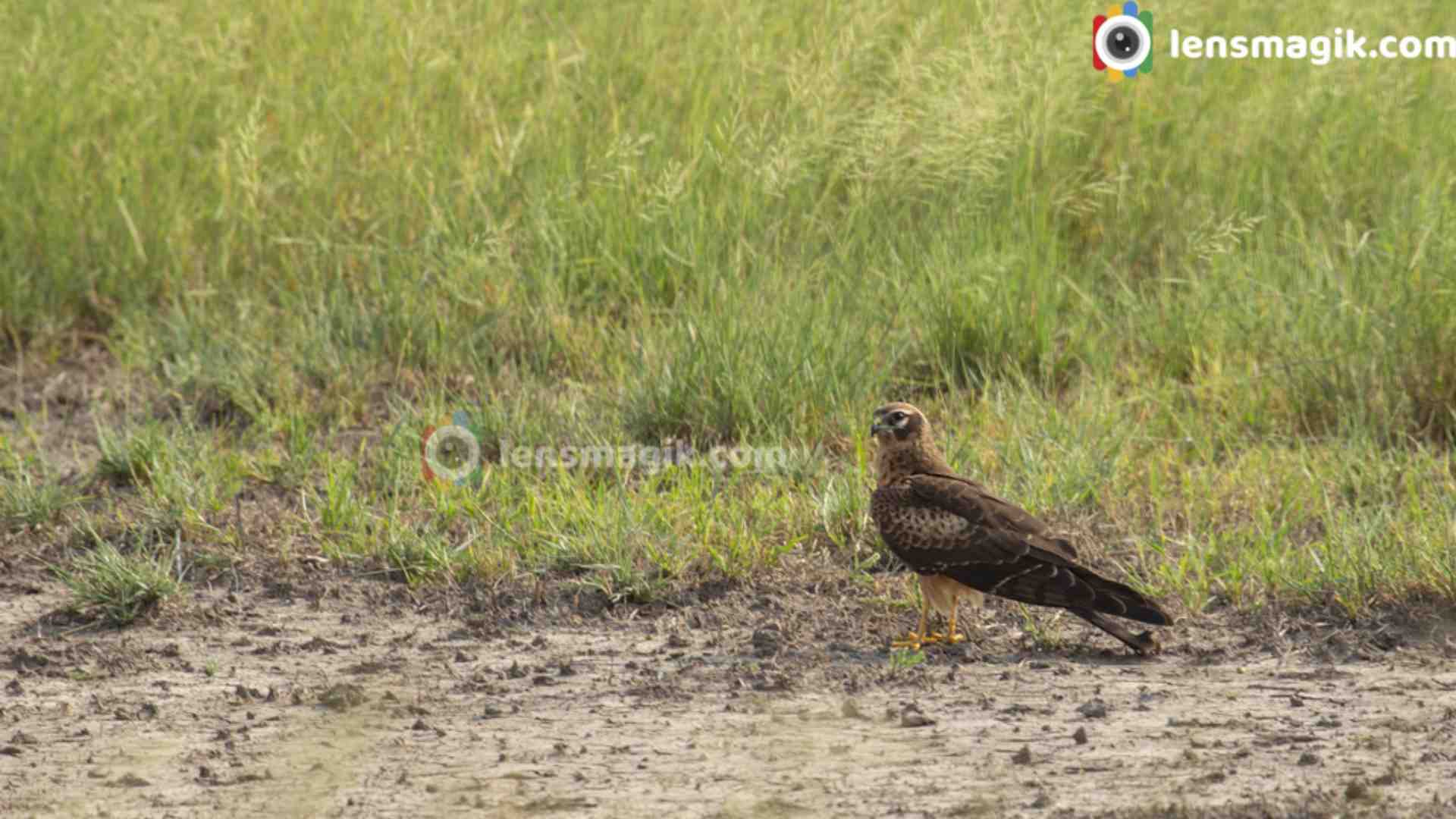
Montagu's Harrier is a migratory bird in
Gujarat. It is also a Bird of Prey. Binominal name of Montagu's Harrier is
Circus Pygargus. It is found in most European Countries and also can be
found in Eastern Palearctic. Breeding occur in Portugal ,
Northern Africa , Great Britain and Morocco. Montagu's Harrier also common
in may areas like Russia, France, Spain, Poland, Belarus etc. Montagu's Harrier
is a long distance migratory Bird. I Found it at Velavadar National Park in Gujarat. It is also found in Little rann of kutch also. It is small raptor but can seen large because of large wingspan.
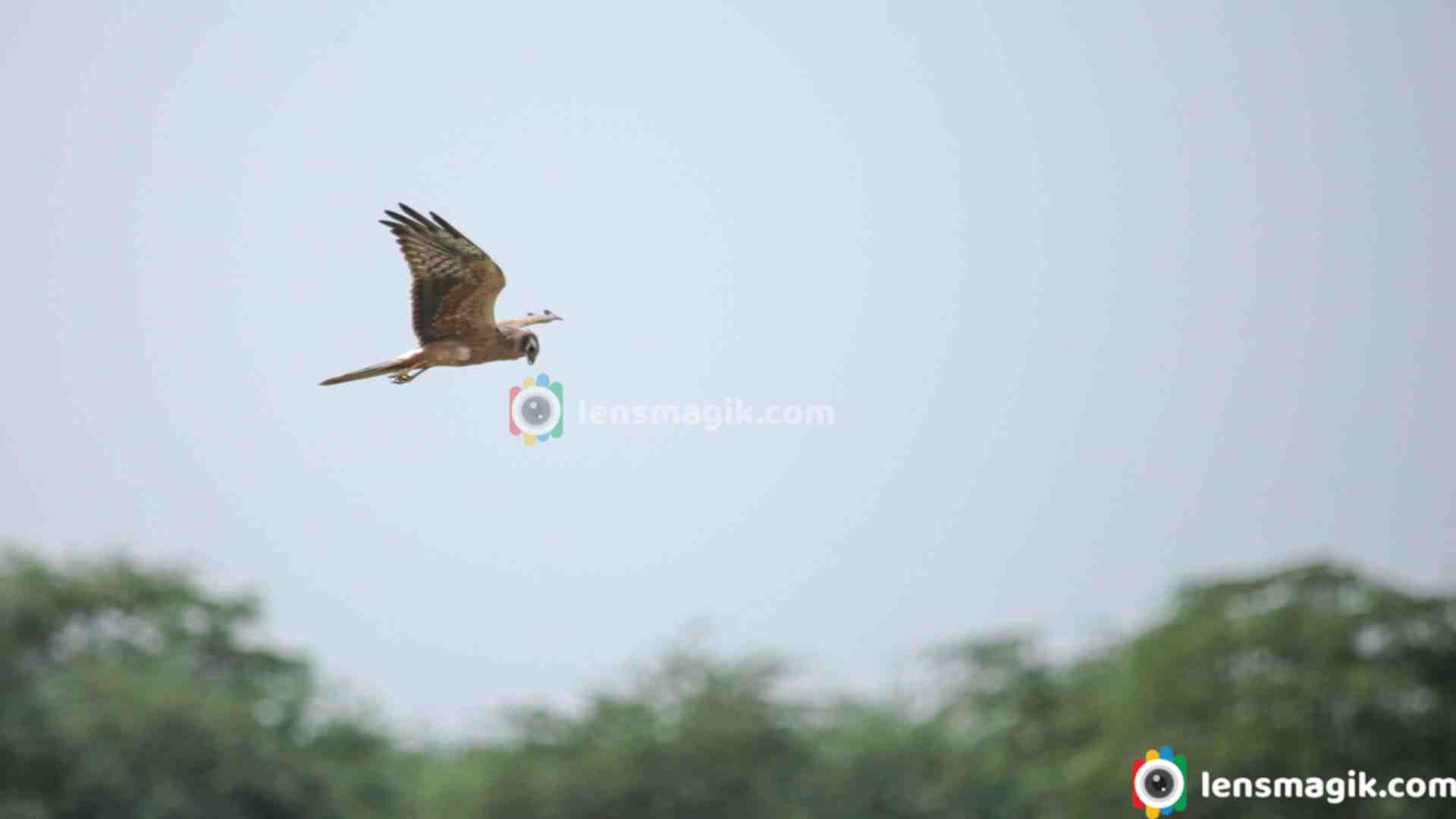
Facts and Description about Montagu's Harrier :
- Length of Montagu's Harrier is around 43-47 cm long and wingspan is around 97-115 cm.
- Male Montagu's Harrier weight is around 260-270 gm and female is around 340-350gm.
- Female is larger than male Montagu's Harrier.
- Montagu's Harrier is very similar to Pallid harrier and Hen harrier.
- It built nest at 1500 to 4900 mt height at lower lands, river and valley areas. Also built nest in agriculture areas and farm lands too.
- Montagu's Harrier need large open area for breeding.
- Montagu's Harrier feed small birds, small rodent, birds eggs, reptiles and insects.
- It can hunt while flying on fixed route and low height and low speed.
- Male montagu's harrier hunts around 12 km area from the nest and female hunts around 1 km area from the nest.
- Global population is around 150000-200000 approx.
- Female Montagu's Harrier lays 3-5 eggs. Eggs incubates in 27-40 days. After 28 days young Montagu's Harrier leave the nest and live individual after 2 weeks.
- They are long distance migratory birds . They start migrate in mid October.
Velavadar National Park is famous for Black Buck so it is also known as Black Buck Sanctuary. Area of park is around 34 sq km and it establish in july 1976. It is smallest National Park in India. In Velavadar national park there are lots of wildlife spices for wildlife lover.
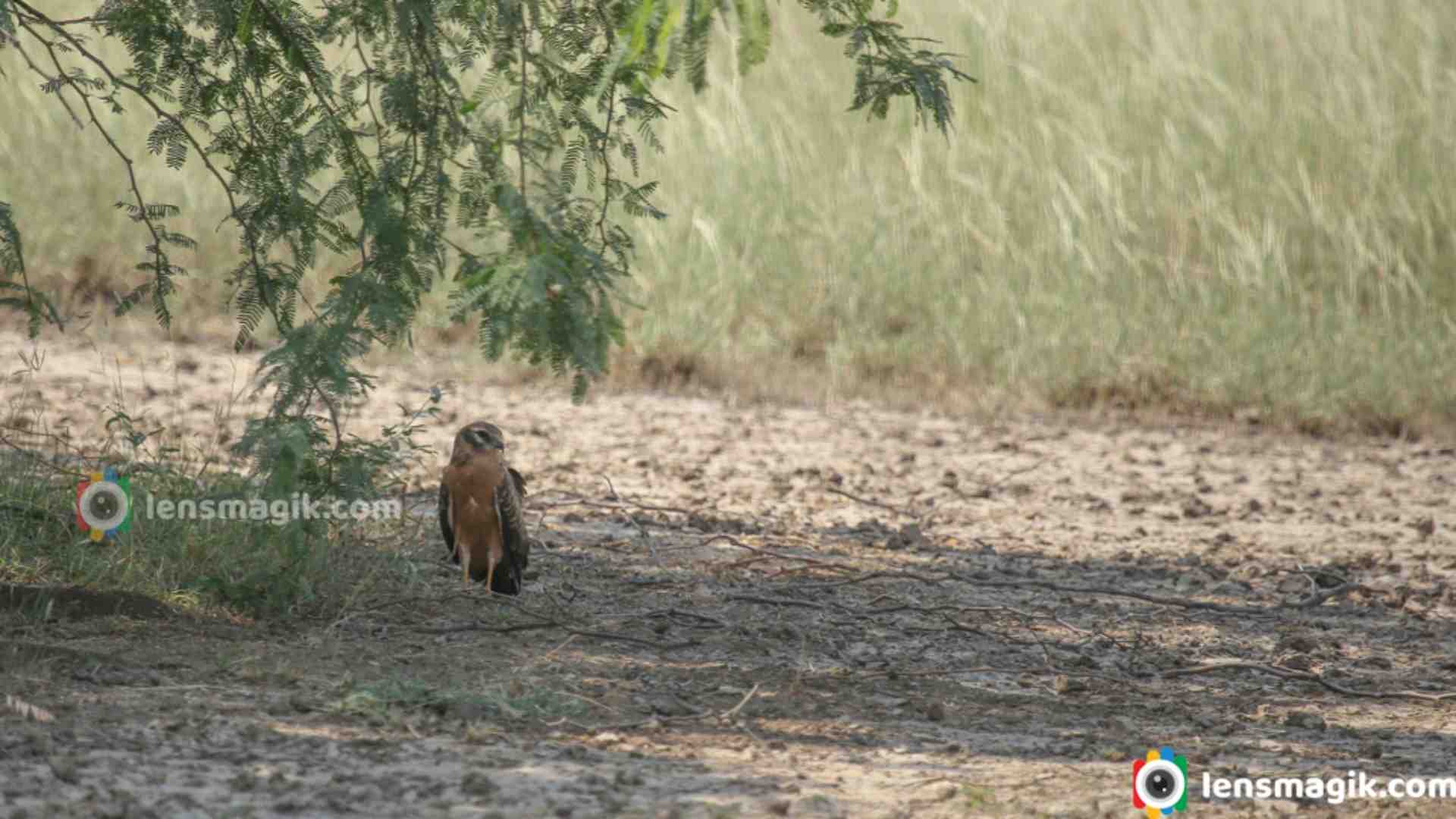
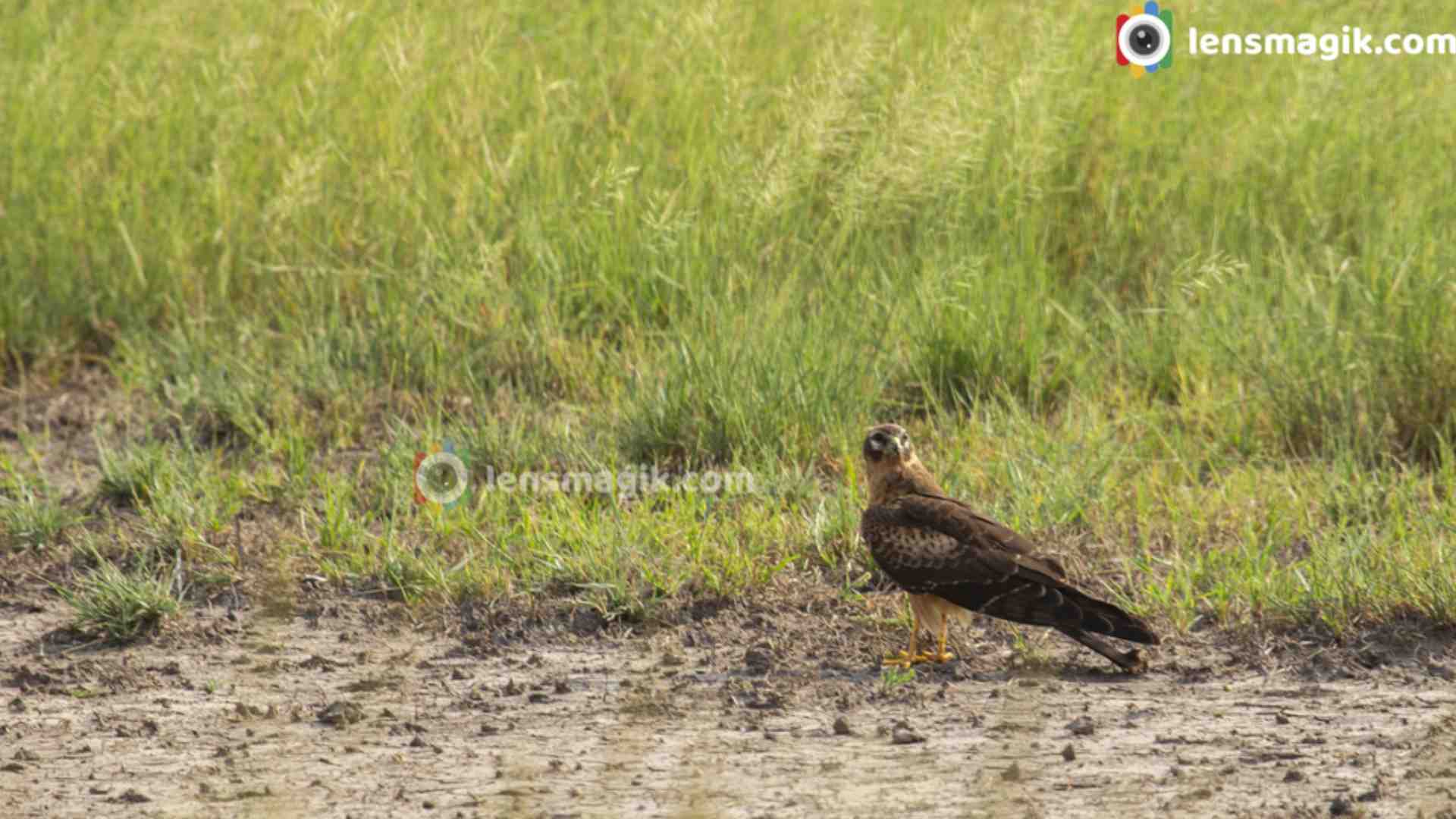
How to Reach Velavadar National Park :
Nearest big city is Bhavnagar around 47 km. From Ahmedabad it is around 140-150 km so by car you can reach in around 3 hours. Also Bhavnagar Railway station and Airport available for out state peoples.
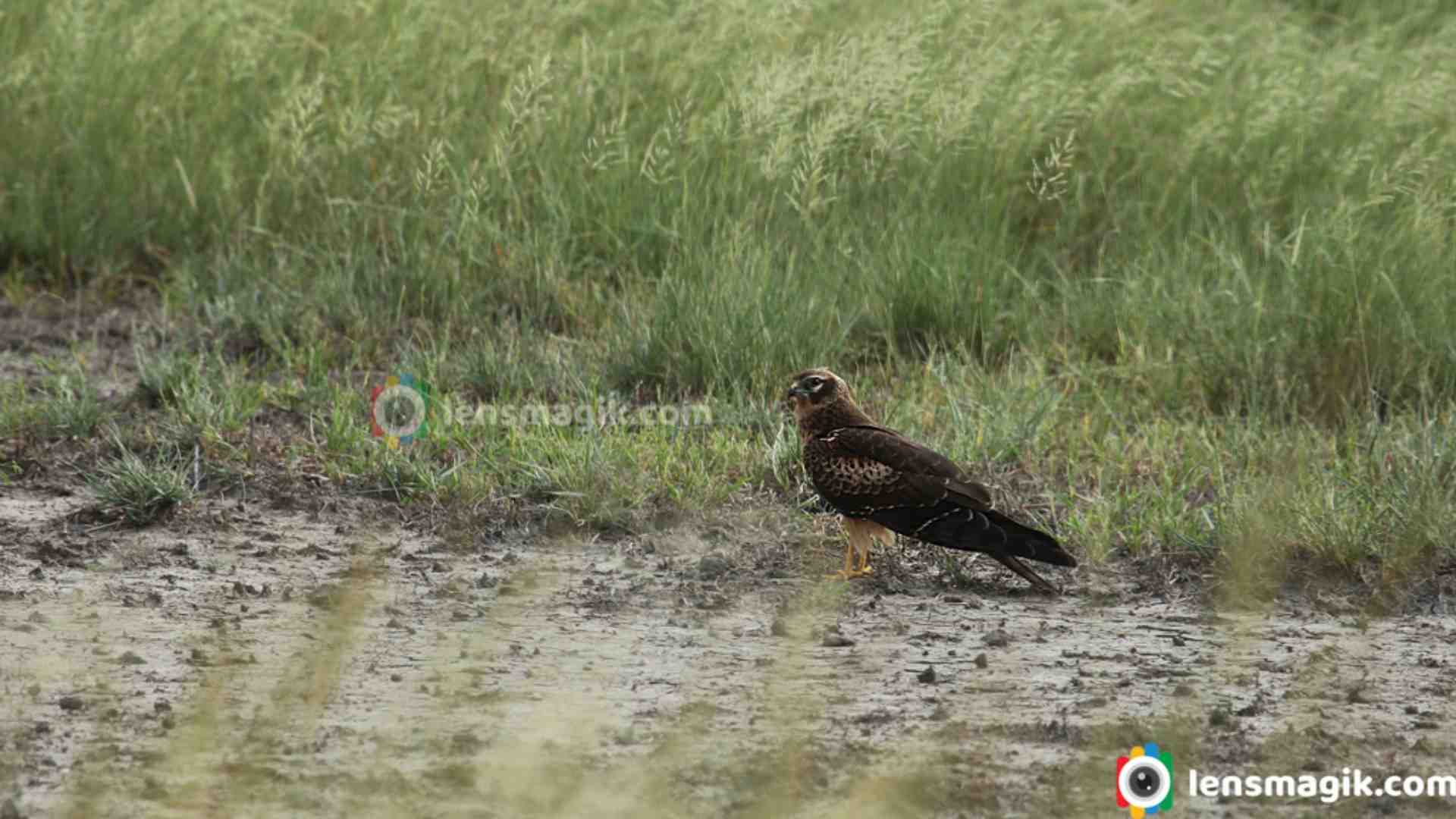
Velavadar National Park Fees and Timings:
Park fee is around 40 INR for Indian citizen , Car up to 6 person 400 INR, and for Foreigner it cost around 10 $ per person. For still photography they charge extra 200 INR and for Documentary or movie shooting charges 10000 to 50000 INR . Timings for safari is around 3 hours for 1 car.
Camera Used : Canon 6D, Canon 100-400mm lens
Read more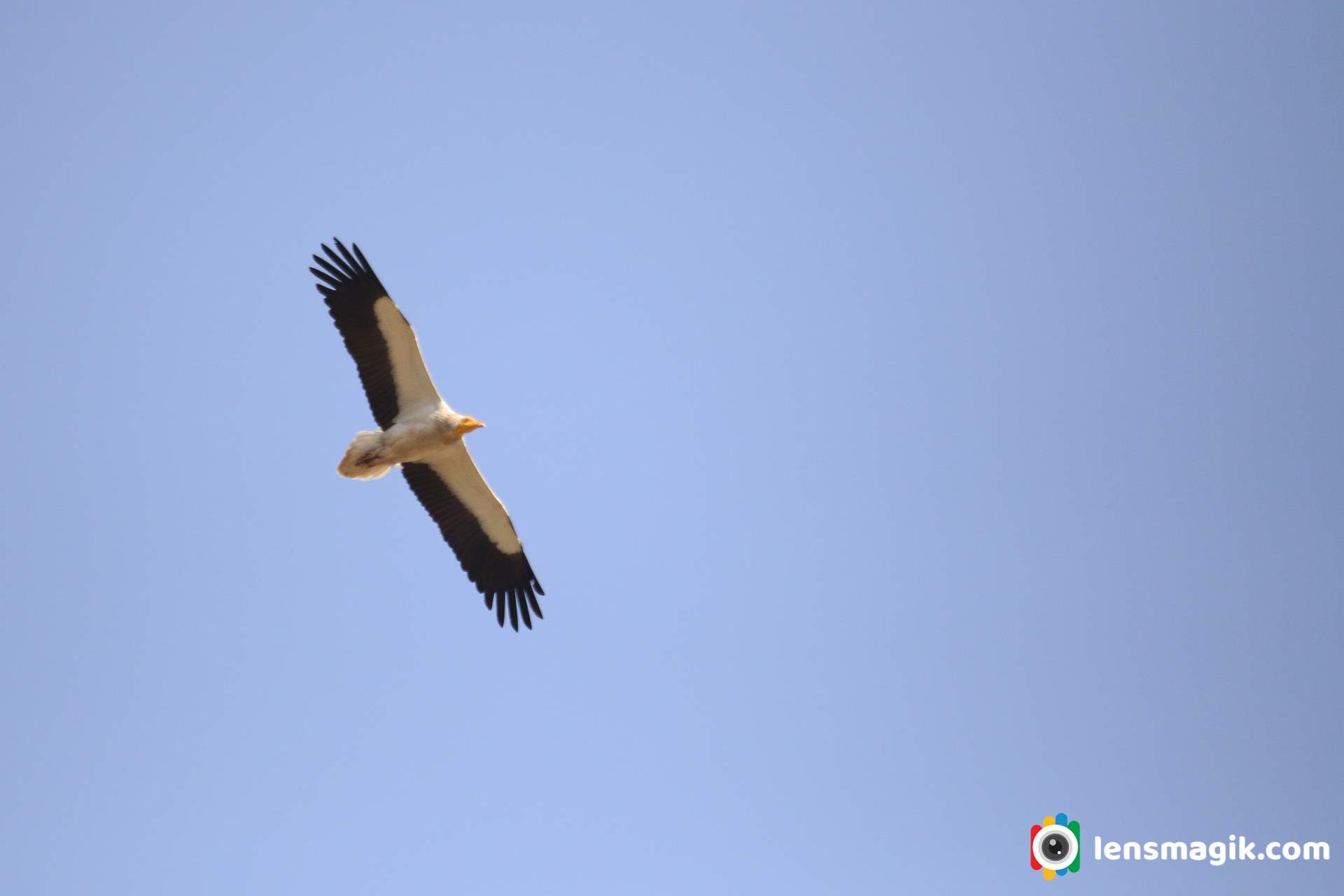
Egyptian Vulture is endangered spices as per IUCN list. It is also known as White scavenger Vulture too. In Gujarat i found it at Banaskantha district outskirts flying on farms with pair and one is juvenile. I cann't shoot juvenile because they are far away and far on height too. But my first record shot clicked of Egyptian Vulture in my camera and i am very happy for that. Egyptian Vulture spices is in endangered vulture spices and many conservative societies and bird lovers working on study and their habitats to increase their populations.
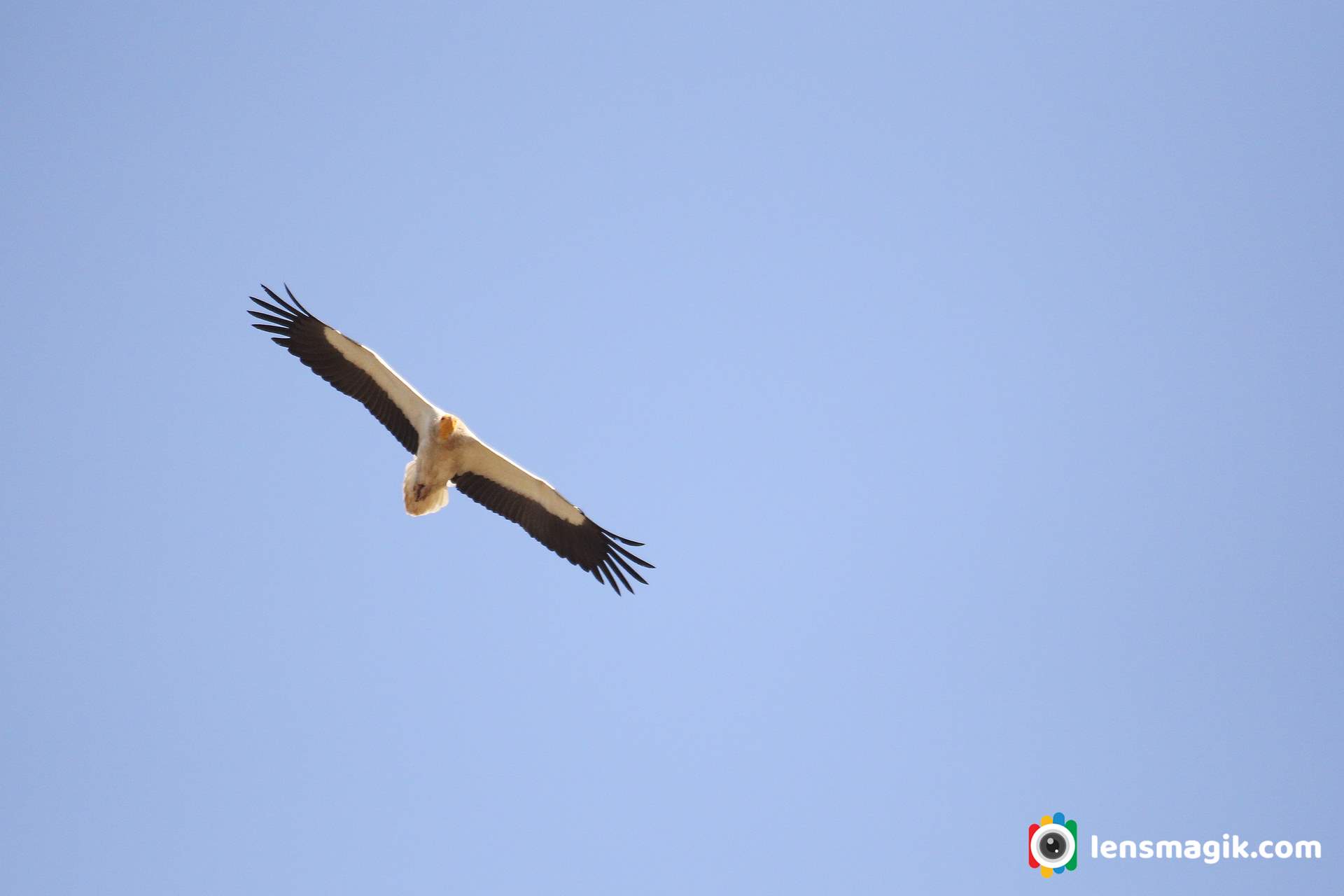
About Egyptian Vulture / White scavenger Vulture :
- They generally found in southeast Europe, North America and India
- They are spices of Neophorn percnopterus as per binominal name.
- Adult Egyptian Vulture plumage is white. It has black flight feathers.
- Length of Egyptian Vulture is around 45-65 cm and weight almost 2kg average.
- They can fly and go over 2000 meter during summer.
- They can migrate from Europe to South Africa.
- They build nest on rocky cliff and on large trees often.
- They generally found in pairs .
- They feed animal carcasses and also small mammals, small prey, lizards, insects, small birds, reptiles, ahmphibians, rodents and dead birds.
- They can live up to 35 to 37 years long.
- Female Egyptian Vulture lay 1 to 3 eggs with splotched Redidish brown in color. Male and female both incubate eggs until 38-45 days approx. Their breeding season is from mid march to june.
- As per IUCN report approx 20000 to 60000 individual remaining.
- They use round stones as hammer to break large eggs.
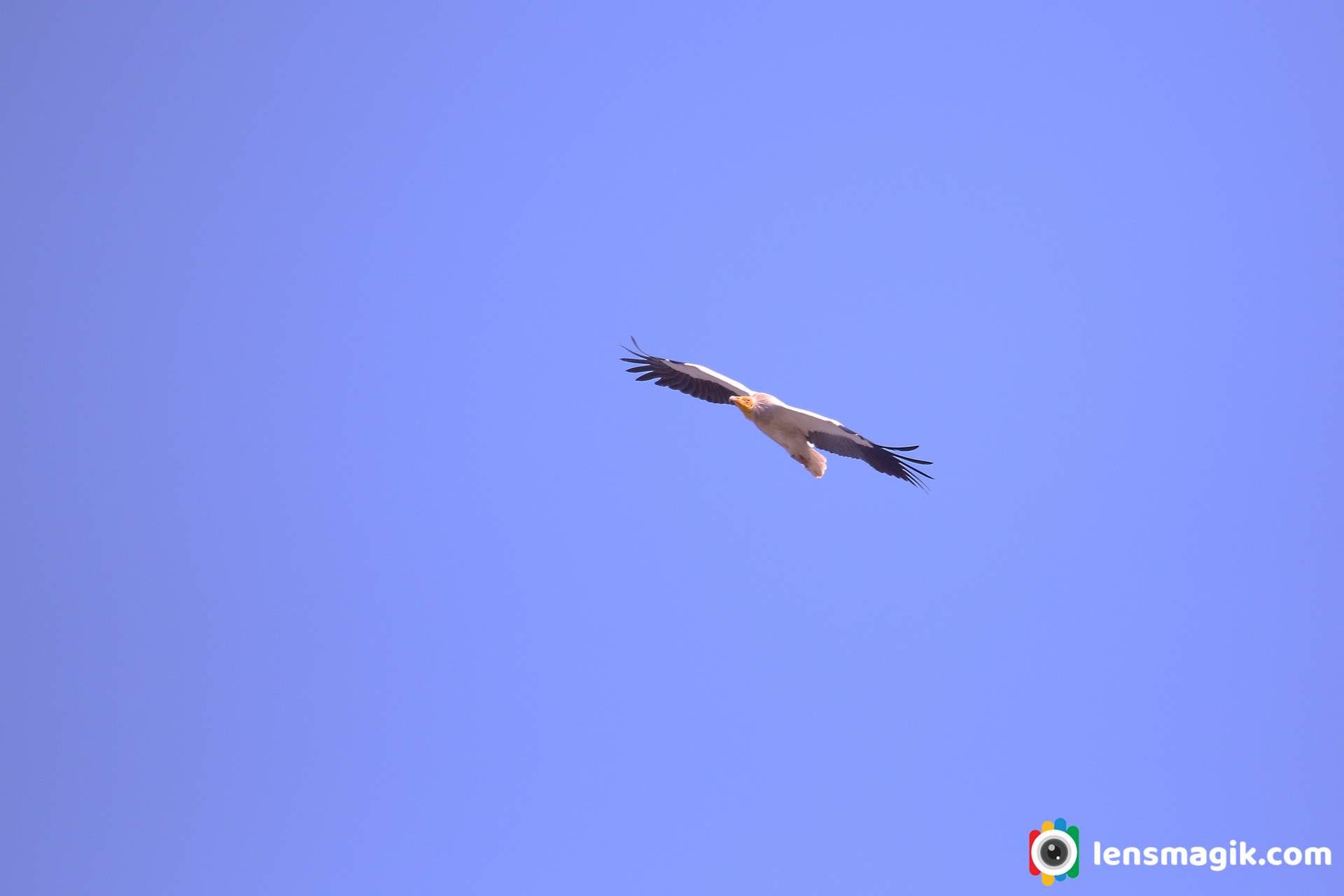
Egyptian Vulture in Gujarat :
Well there are many sites of Egyptian Vulture in India. In Gujarat i foun it at Banaskantha District. Lots of other sites but i don't know about it. While i was travelling in car to my home from Jessore Sanctuary i found pair of Egyptian vulture and one juvenile near road side farms. They are flying very high so i can not capture good images but got record shot of Egyptian Vulture. I was very lucky for it that i got atleast good shot to identify. One more tick in my birds of prey checklist. Also my first vulture capture in Gujarat.
Gear Used : Canon 6 D with Canon 100-400 mm lens.
Location : Banaskantha District farm areas.
Read more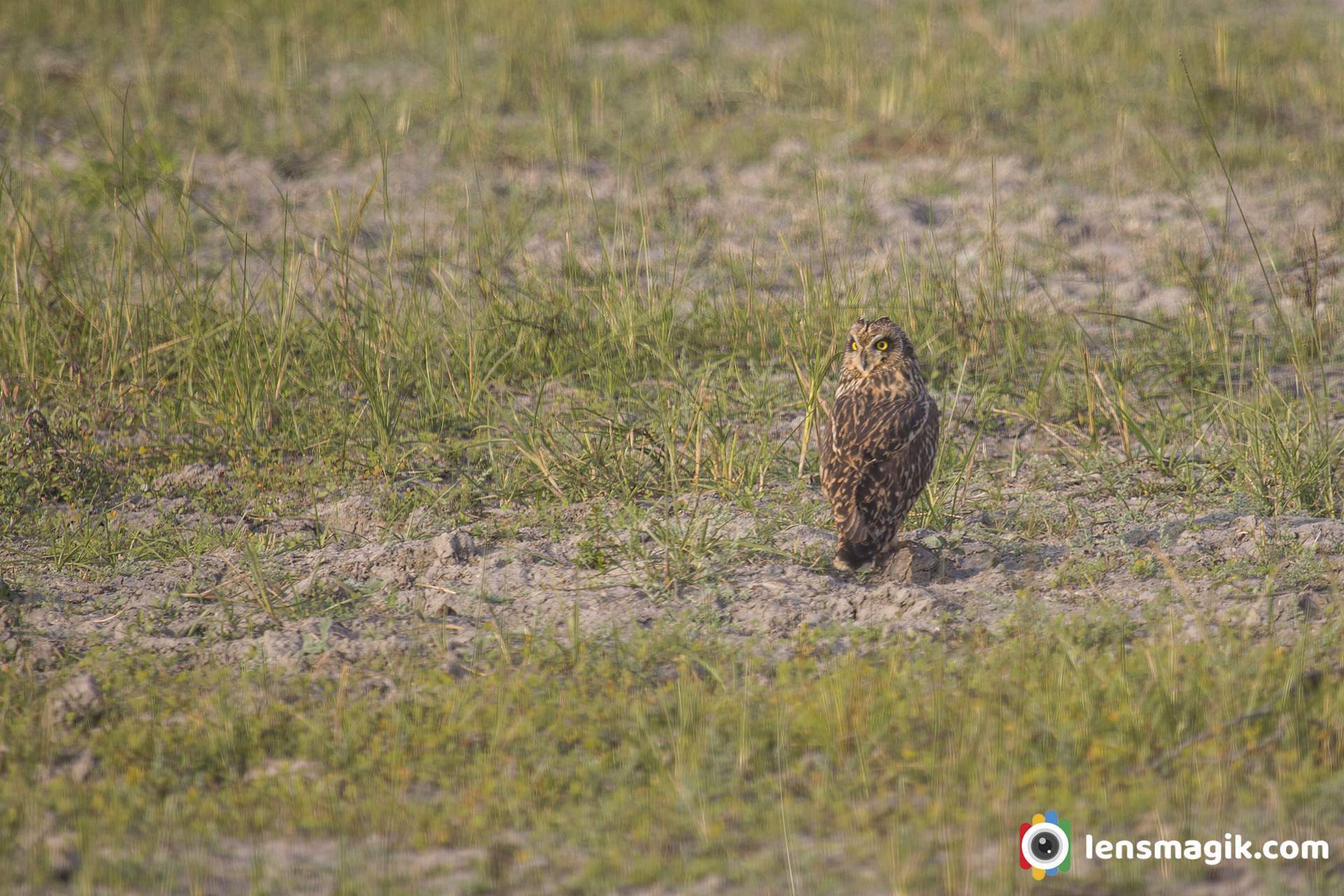
Short Eared Owl is generally found in grassland. It is in family Strigidae. Its ear cannot be visible in regular pose so may be it called short eared owl. You can see its ears only in defensive pose of it. It is generally found in open area and grasslands. But the color of feathers is simillar to dry grassland so to find it is very difficult in grassland. In Gujarat it found in Little Rann of Kutch mostly and easily. Little rann of kutch is very popular place for birding and specially for Wild Ass.
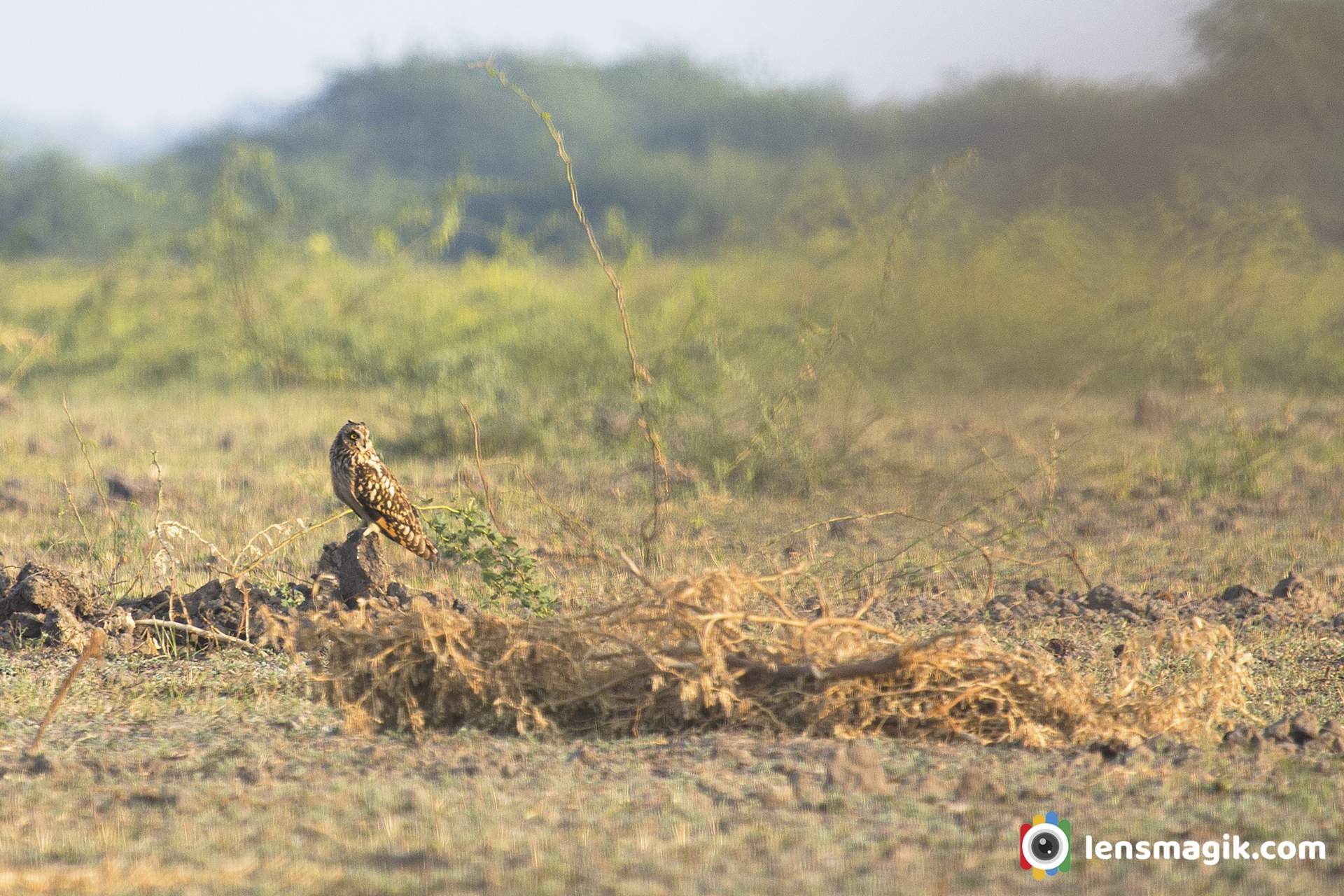
Description of Short Eared Owl :
- It is medium size owl.
- Length of short eared owl is 34-43 cm and weight is 475 gm aprrox.
- It has short , black and strong bill.
- It has big head, large eyes, wings are broad and a short neck.
- It is described as moth and bat like in flight.
- Its wingspan almost 33 - 43 inch.
Some Facts to know about Short Eared Owl :
- It is simillar in looks with Long Eared Owl just difference is ear tuff of long eared owl can easily visible.
- It breeds in Europe, North and south America , Asia and Caribbean etc.
- It is known to relocate to area of higher population of its food.
- Breeding season is once in a year around in March or April in Northen Hemisphere.
- It nests on ground in medow and it made by grass and vagitations.
- They hunts mostly at night and mouse or rat is favorite food of its. It also feed small mammals like squirell, mole, rat, bats etc.
- It is listed endangered in Mexico.
- 4 to 7 eggs approx. found in Short eared owl clutch and eggs incubated by female in 20-35 days approx.
- It is partially migratory.
- Call of short eared owl is waowk....waowk......waowk or toot.....toot......toot . During breeding it sounds also like eeee - yerp sound.
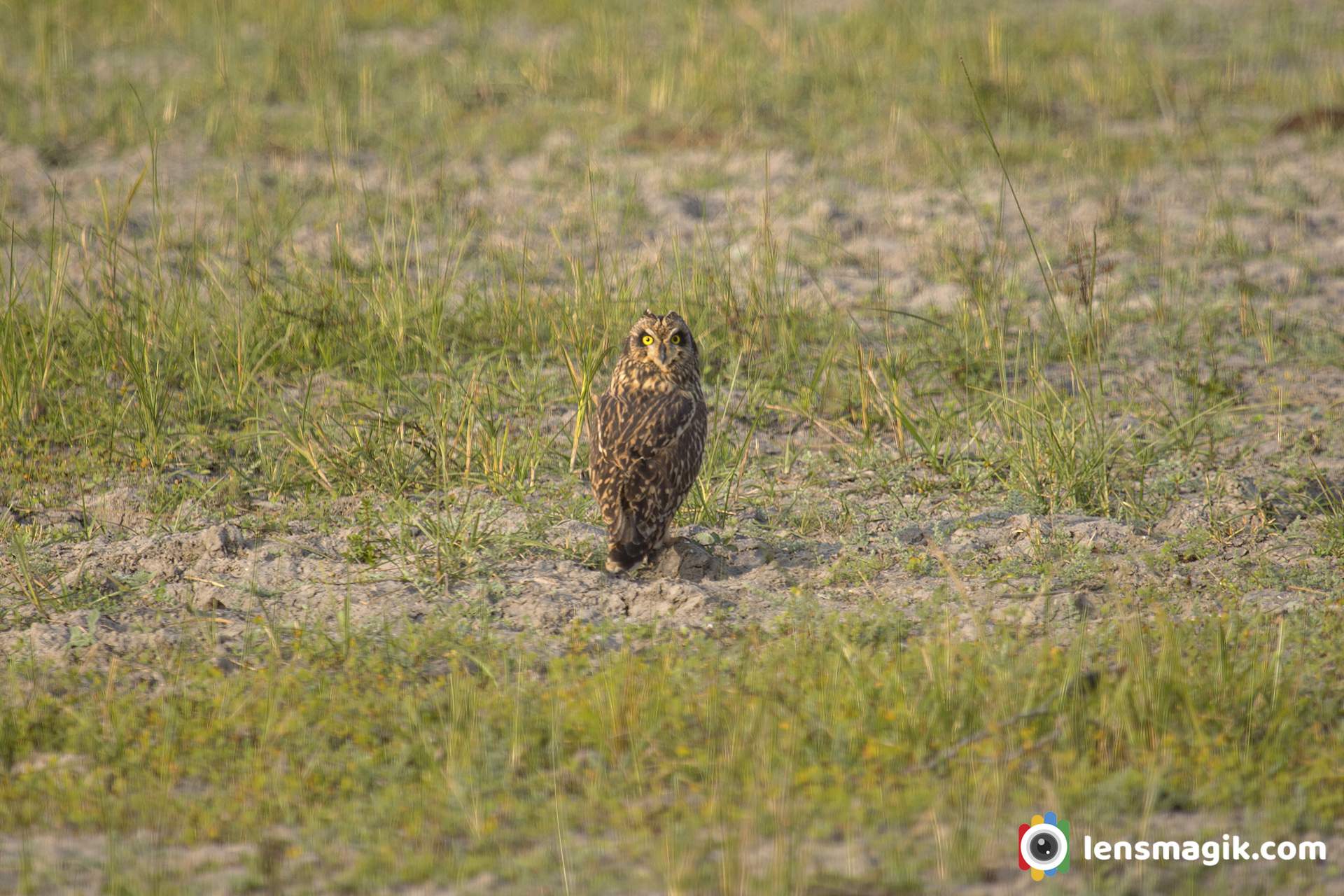
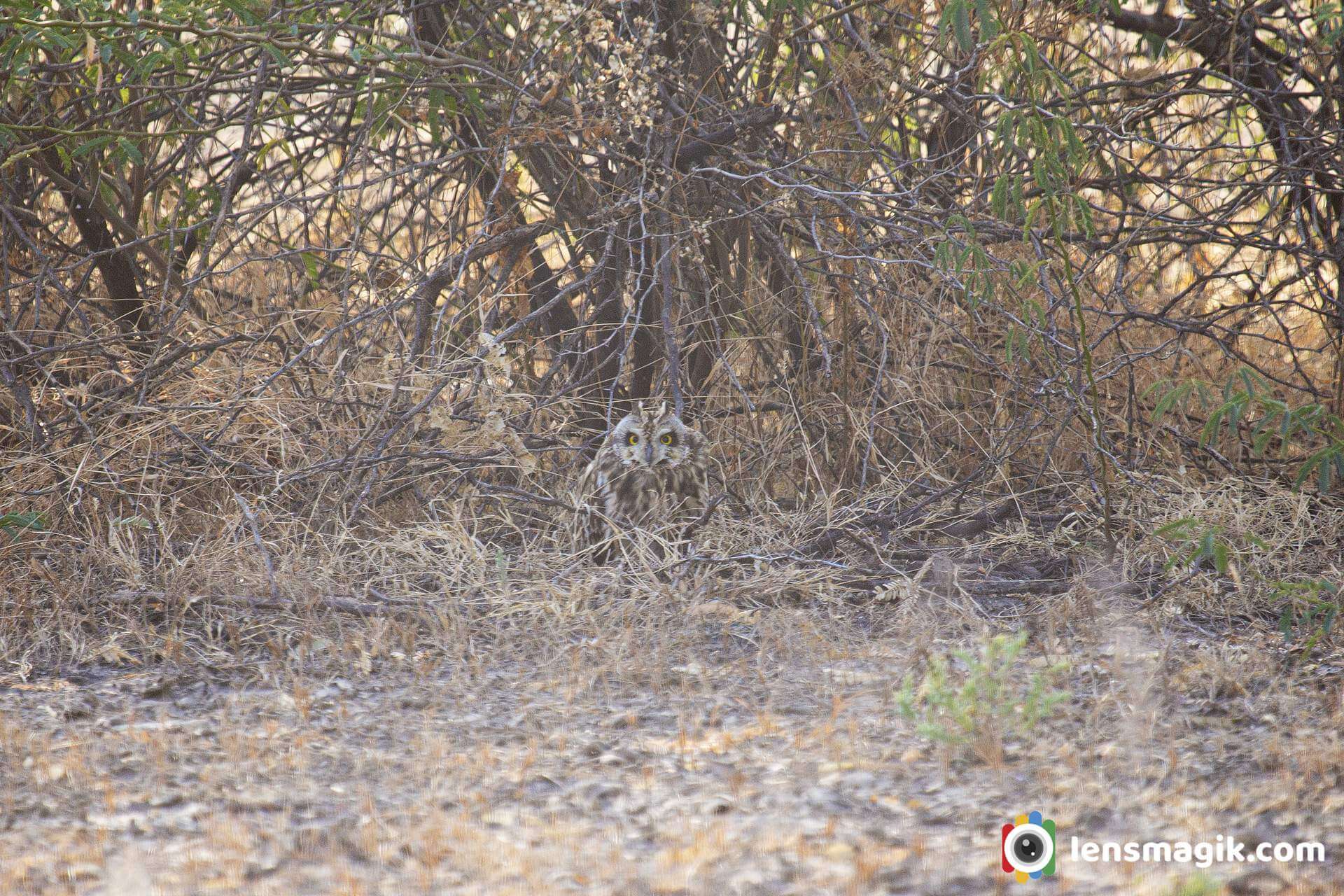
Birds of Little Rann of Kutch :
Little rann of kutch is very well known for Wild Ass. But its is heaven for birding too. Lots of migratory birds and Specially Raptors found during winter season . Short Eared Owl is also resident bird and breeds here too. Lrk is sanctuary that you can take 360 degree horizons view. Beautiful sunset and sunrise locations here. There are also many outskirts area near LRK is good for birding and horizons photos.
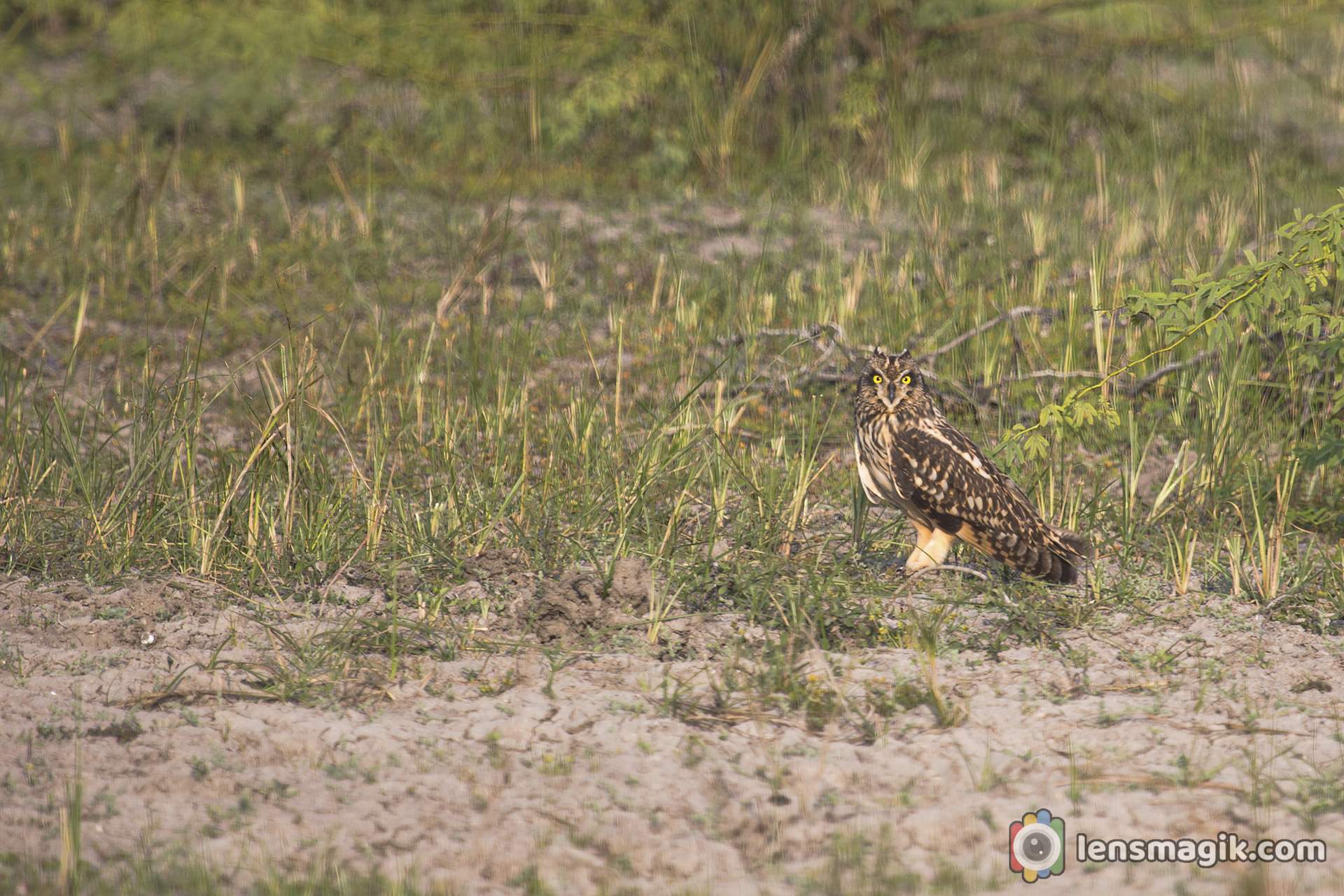
How to Reach LRK : Little rann of kutch is about 165 km from Ahmedabad. You can go by own car inside sanctuary.
Nearest Airport is Ahmedabad.
Gear Used : Canon 6 D, Canon 100-400 mm lens
Read more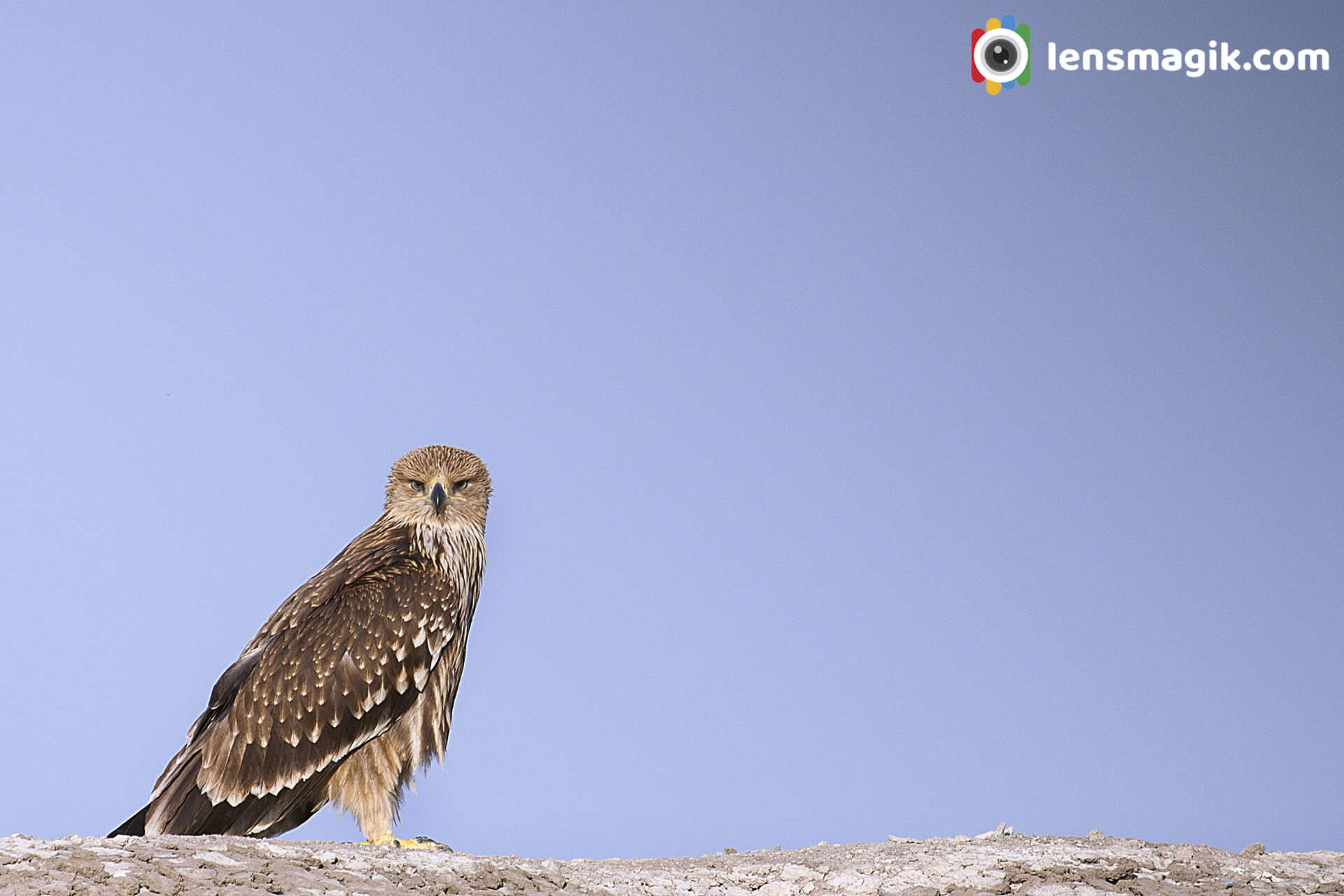
Eastern imperial eagle is member of Aquilinae family. It is also called booted eagle. It is winter visitor in LRK Gujarat, India. It migrate form southeast Europe. It also breeds in Southeast Europe. My first siting of Eastern Imperial Eagle at LRK ( Little Rann Of Kutch ) Gujarat. There are also other migratory raptors are found here. Little rann of Kutch sanctuary is known for Raptors during winter season.
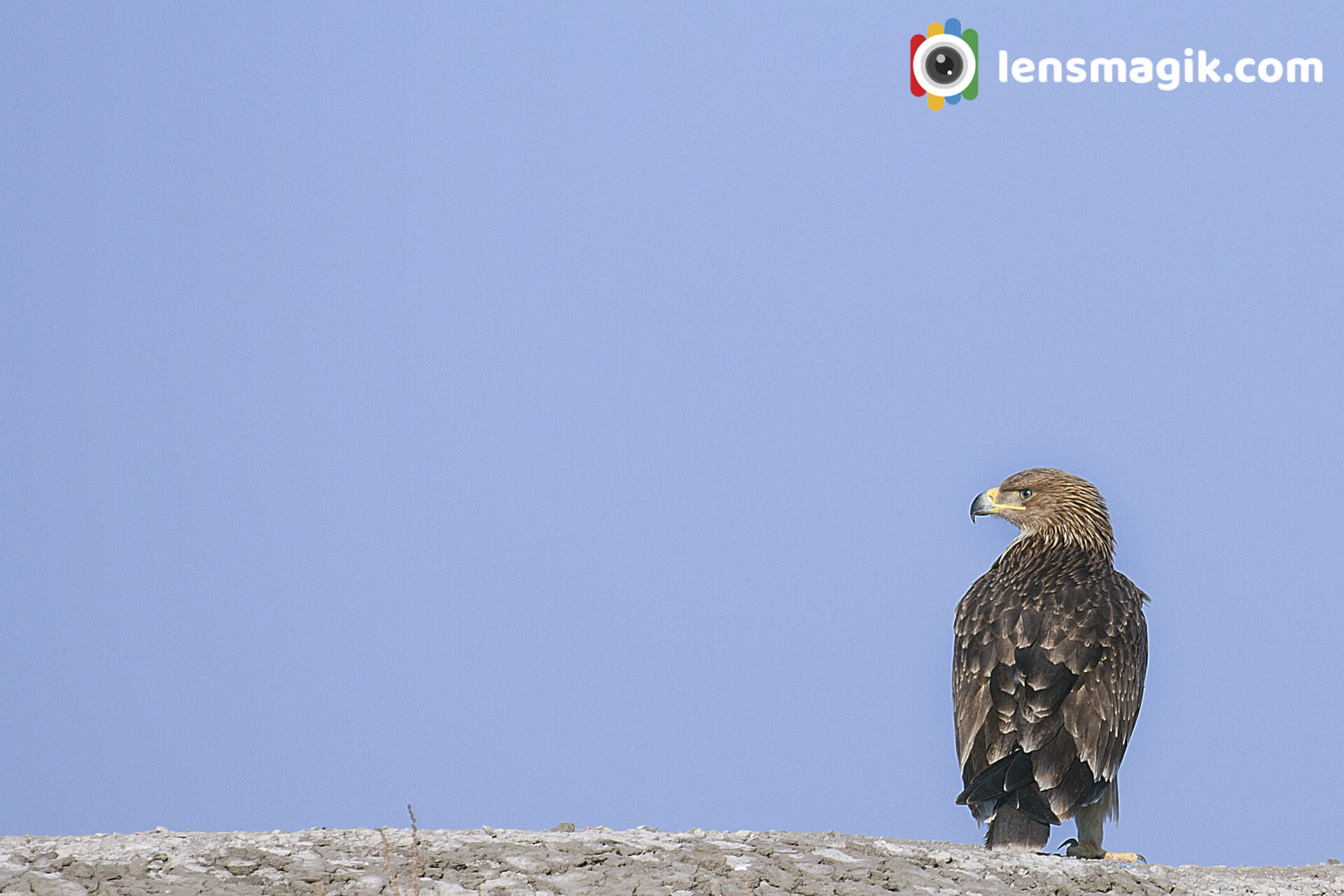
Description of Eastern Imperial Eagle :
It is large in size and dark in color. White spots on its wings and wings color is dark grey. It has long and thick neck, square tipped tail and well feathered strong legs. Generally Male are little smaller than female. In talk of Eastern Imperial Eagle size length is around 70-90 cm . Average wing spawn is about 5 to 9 ft. Eastern Imperial Eagle is a predator and also called Birds Of Prey. It generally hunts small mammals, reptiles and birds.
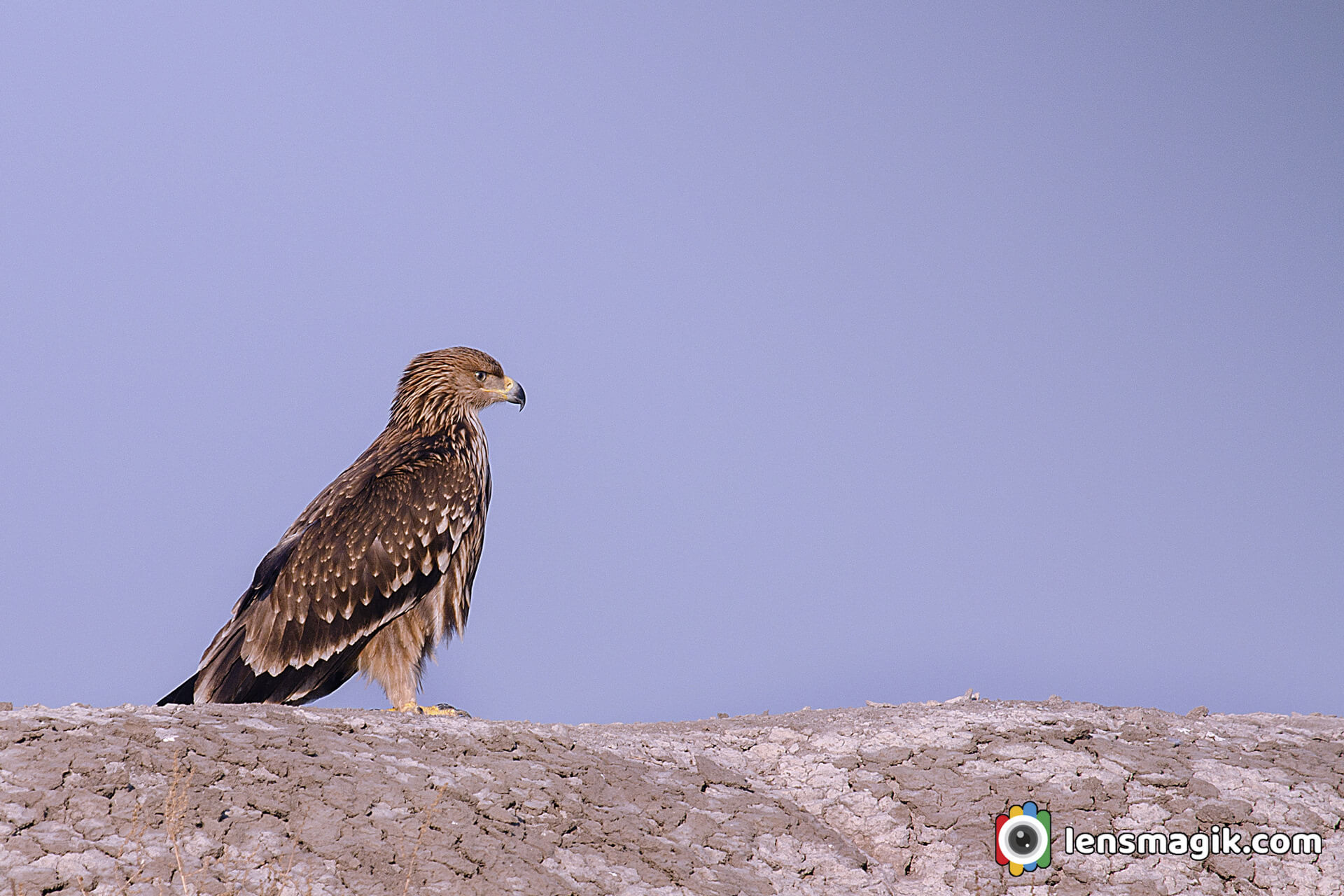
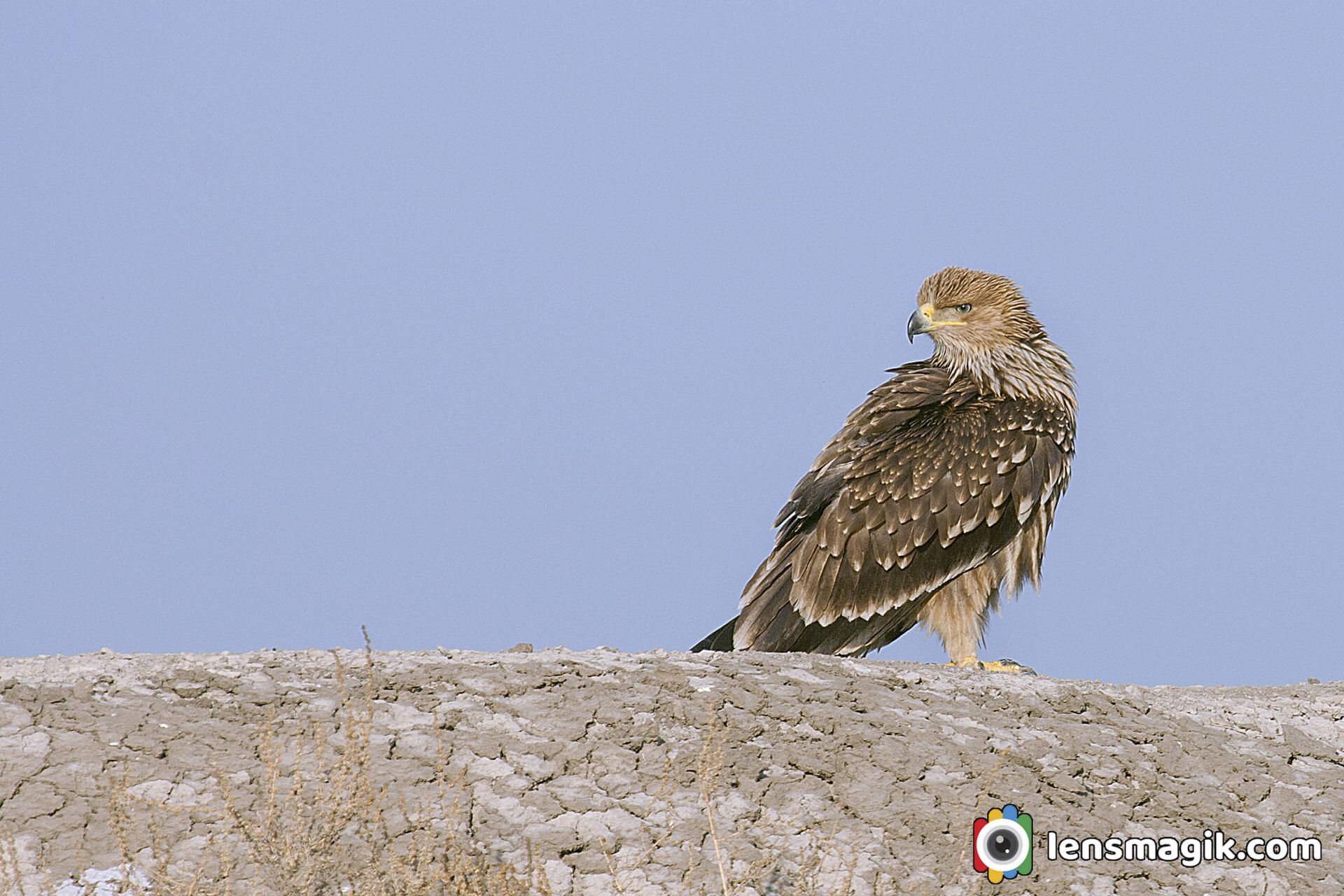
Some facts about Eastern Imperial Eagle :
- There may be confusion between Eastern Imperial Eagle and Golden Eagle.
- Difference is Eastern Imperial Eagle is smaller then Golden Eagle. Also Its head is larger than golden eagle.
- Eastern Imperial Eagle migrate from southeast Europe to middle east .
- Some Eastern Imperial Eagle is breed at Lake Baikal will migrate to south Asia.
- In winter Eastern Imperial Eagle found in Gujarat, Bihar, Madhya Pradesh and Jharkhand.
- Eastern Imperial Eagle weight around 2.5 kg
- Eastern Imperial Eagle bird call is owk owk..... gok gok or kraw kraw
- Best time to catch Eastern Imperial Eagle in Gujarat is November to February.
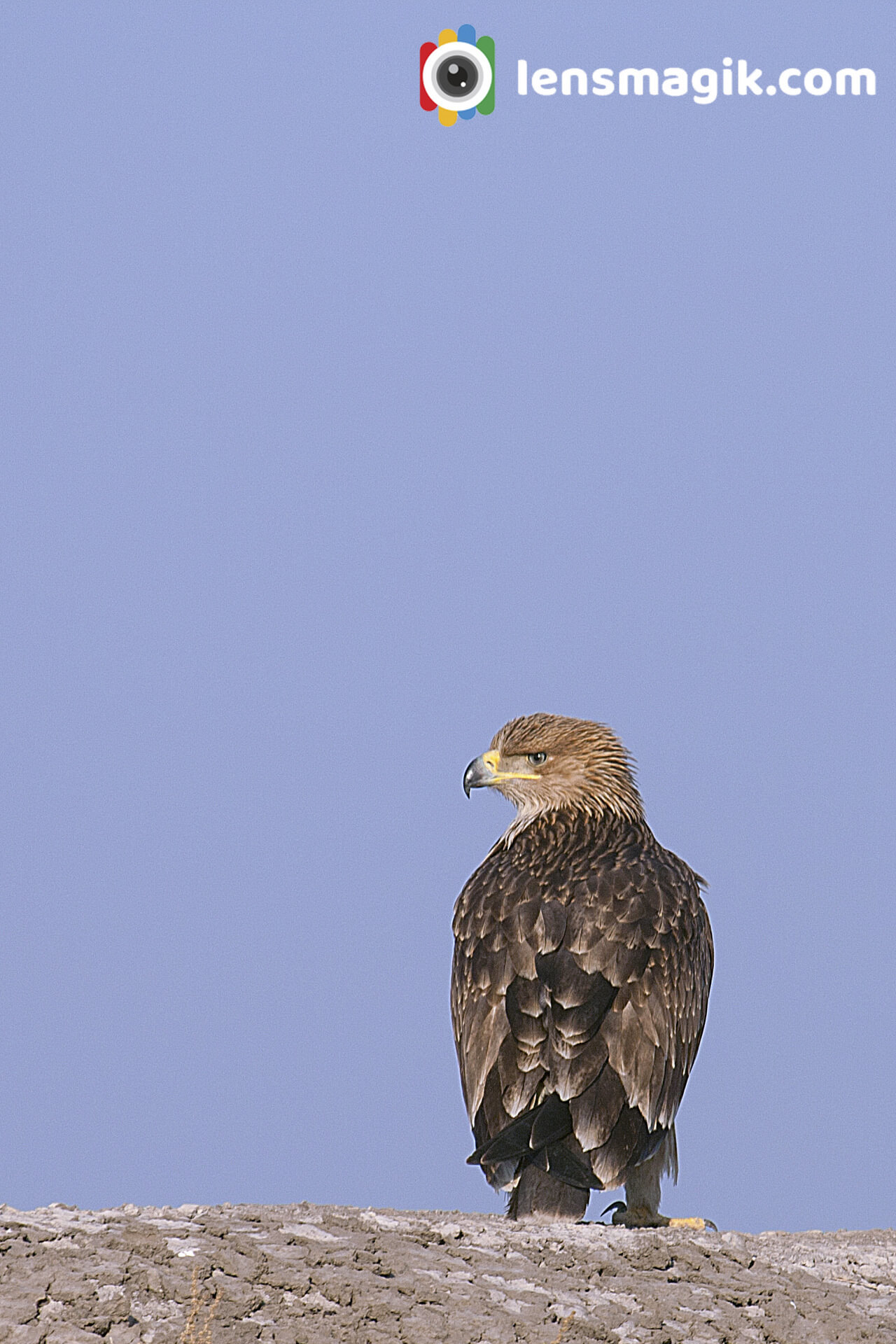
About Little Rann Of Kutch :
Little Rann Of Kutch is very well known for Raptors and migratory birds. During winter season there are lots of migratory birds like Flamingo birds, Pelican, Goose birds etc and also Raptors, falcons, harriers etc. So that LRK is beautiful place to visit for wildlife lovers in Gujarat. Also small birds are good attractions for bird watchers of Gujarat. And the best think is the Horizons Of LRK. A beautiful sunset and sunrise views from LRK you can see a flat surface looks beautiful. Amazing wetland areas also in LRK and also outskirts of LRK.
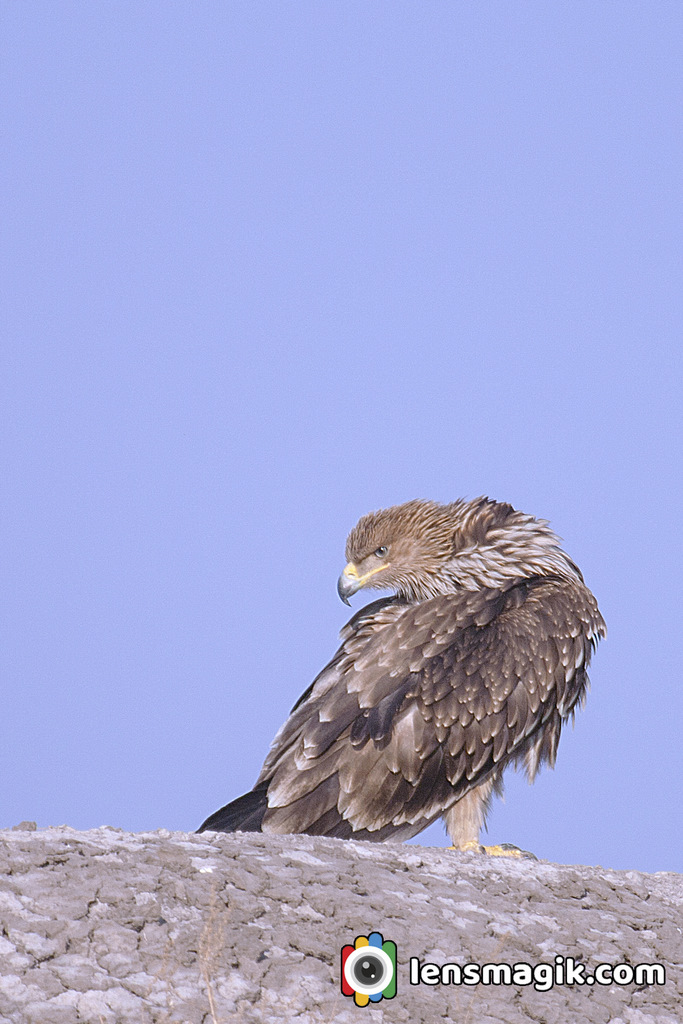
Little rann Of kutch is about 120 km from Ahmadabad. You can go Bajana Forest Entry gate for enter in LRK. Also some outskirts village area where you can find good wetlands for birds and sunset or sunrise shooting.
Location : Little Rann of Kutch
Best time to Visit LRK : November to March
Nearest Airport is Ahmedabad.
Gear Used : Canon 1000 D with Canon 100-400 mm lens.
Read moreIt is very small falcon and in shape is like shrike.It is a species of "Birds of Prey " in a falconidae family.It is found in southeast Asia across Bangladesh, Thailand, Myanmar, Nepal, Bhutan, India,Vietnam. I shot it at Corbett National Park Dhikala forest Rest house backside. It is a smallest falcon in falcon family. In India it generally found in Himalayan Range like northeast Uttarpradesh, Sikkim, Bengal and Assam. Collared falconet is Shy Bird.
Description and Facts About Collared Falconet :
- Its wings are pointed.
- It is 18 cm Long only.
- Tail is rounded and medium length .
- The adult male has a black crown and white forehead.
- It is the member of genus Microhierax which are the smallest falcon.
- It is found in forest country aprox 5500 ft height.
- It roosts and breed in old woodpecker or barbet holes in dead trees
- It feed mainly insects and small species of birds.
- It also shy and nervous.
- It has shortish wings and tail is medium length.
- It has also strong half feathered legs and very powerful feet.
- A bold white collar and supercillia
- It is a smallest falcon in falcon family.
Collared Falconet is a raptor so its feets are very strong to catch and it is also a good hunter bird. During my trip to Corbett national Park we done a morning safari and taking a rest at Dhikala forest lodge. On the back side of lodge on a old dead tree we found it. I seen Collared Flaconet for the first time and i ask to my mentor what is it ? and he said its a collared Flaconet and i ask is it Falcon ? Well i am surprised that its a small bird that called Falcon but its true. It looks very cute to see but its a good hunter. Bird watching and bird photography is my favorite at that time and now also. Bird photography is very challenging because you have to follow the bird and its behaviour for taking a good picture of bird.
Pallas's Fish Eagle is large brownish sea eagle. It is also known as Band Tailed Sea Eagle.It is Partially Migratory bird in central Asia. My first siting of Pallas's Fish Eagle Or Pallas's Sea Eagle at Corbett National Park in 2014 while I am participating Canon Wild Click organised by naturewanderers. Color of Pallas's Fish Eagle is light sandy brown. It face is white in color. Its Wings are darker than body color. Juvenile is dark brown in color.
About Pallas's Fish Eagle :
- It is known as Pallas's Sea Eagle Or Band Tailed Sea Eagle
- The length of Pallas's Fish Eagle is 70 to 85 cm .
- With Wingspan length is 180-210 cm.
- Male Eagle weight around 2 -3.3 kg and Female weight around 2.1 - 3.7 kg.
- Main Diet of Pallas's Fish Eagle is Fresh fishes.
- It also hunts water birds, small mammals, frogs and reptiles too.
- It breeds in Russia, Mongolia, India, Kazakhstan, China, Nepal, Bangladesh, Bhutan etc.
- Pallas's Fish Eagle is Endangered spices and listed in Endangered on IUCN Red List.
- Golbal population of Pallas's Fish Eagle is around 2500 approx.
- Pollution and overfishing lakes by humans is main reason for putting in endangered to Pallas's Fish eagle .
- A reason for low count in India is spread of water hyacinth so difficult to find fishes in lake water.
Killing experience of Pallas's Fish Eagle :
To see kill of pallas's fish eagle is awesome experience. It standing on a tree and below 100-140 ft down a river goes and i saw that eagle stand for while then just down in fastest speed n catch a fish OMG what a scene that was . I just sow his speed n accuracy is fantastic.
I m not lucky too much that i shoot that action but a kill n feast i can capture.
Here below picture u can see his neck can turn 360 degree. That specialty makes him perfect for kill , watch, and be accurate .
Location : Corbett National Park, Near Dhikhala , During safari ride.
Canon gears : Canon6D , Canon 100-400mm
Read moreAccentor is a small bird of prunellidae family. In India it is generally found in East Sikkim area. It built its nest low in a bush. When i was on a trip to Singalila National Park. I found at sandakphu area. Sandakphu is high altitude place in Singalila National Park located in West Bengal. From here you can see Mt. Kanchenjunga very clear which is highest peak of West Bengal. Lots of Birds here. To visit Singalila Park November to February you can found lots of snow and good landscapes too with snow on Mt Kanchenjunga. Also if you are going for birding you can visit March to May/June Month is the best . It is very cold weather during winter November to February at Singalila National park.
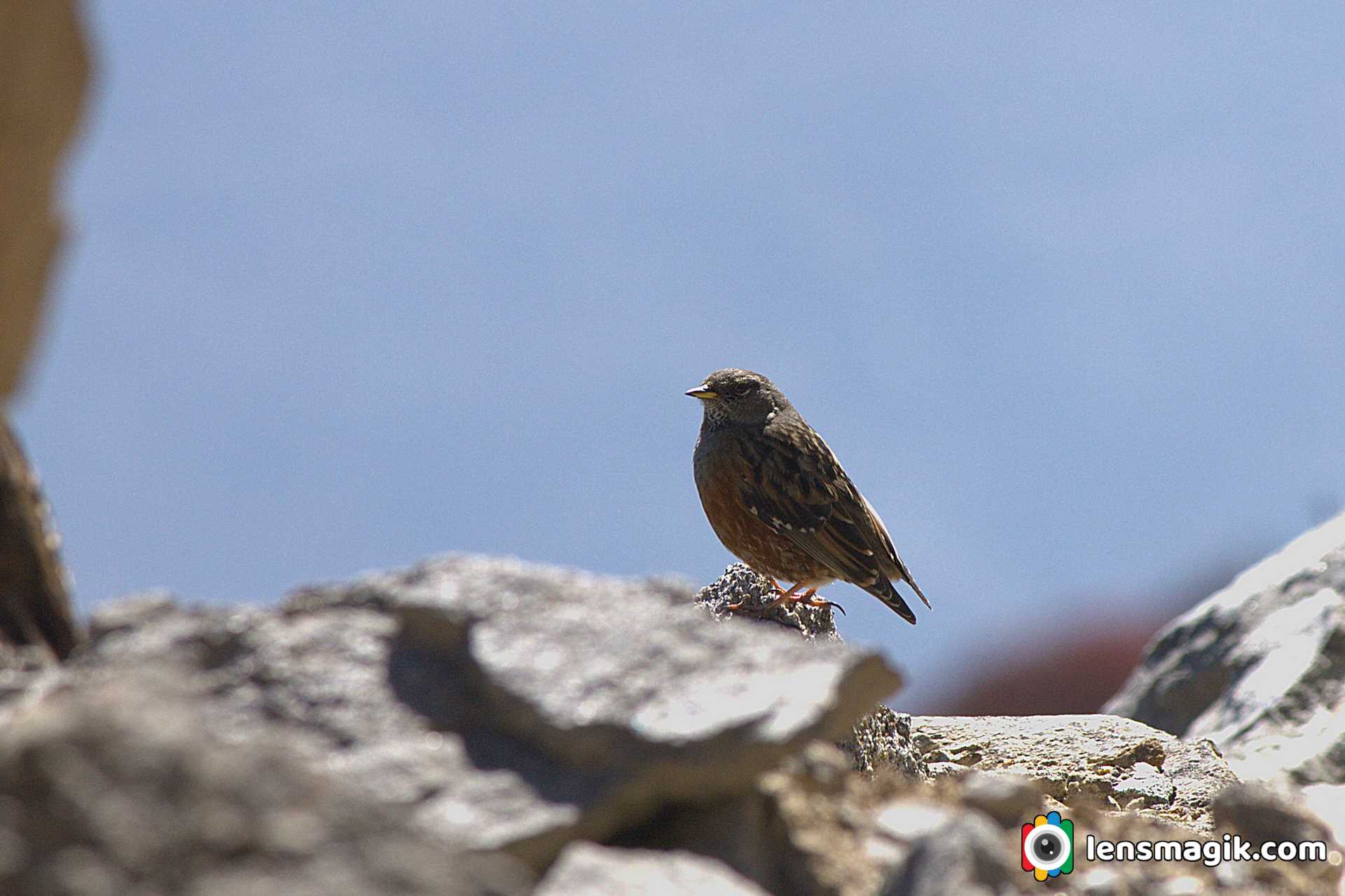
About Alpine Accentor Bird :
- Alpine Accentor bird is robin size bird. Length of bird is around 15 -17 cm.
- Bird just like similar to house sparrow in color with brown back streaked.
- Adult Alpine Accentor have red brown spotting on underparts
- Also adult have grey head too.
- In Asia Accentor found at 2000 m above height. Specially at Himalayas.
- It build nest in bush.
- It laying 3-4 plain (not spotted) eggs of sky blue color.
Singalila National Park :
Singalila national park is located in West Bengal. There are lots of birds in this sanctuary. Also its good for trekking at Sandakphu. From here you can see Mt. Kanchenjunga easily and very closely. Also a beautiful Himalayan Mountain range with snow. Amazing weather very cold in winter and moderate in summer. Summer season is the best for birding at sandakphu.
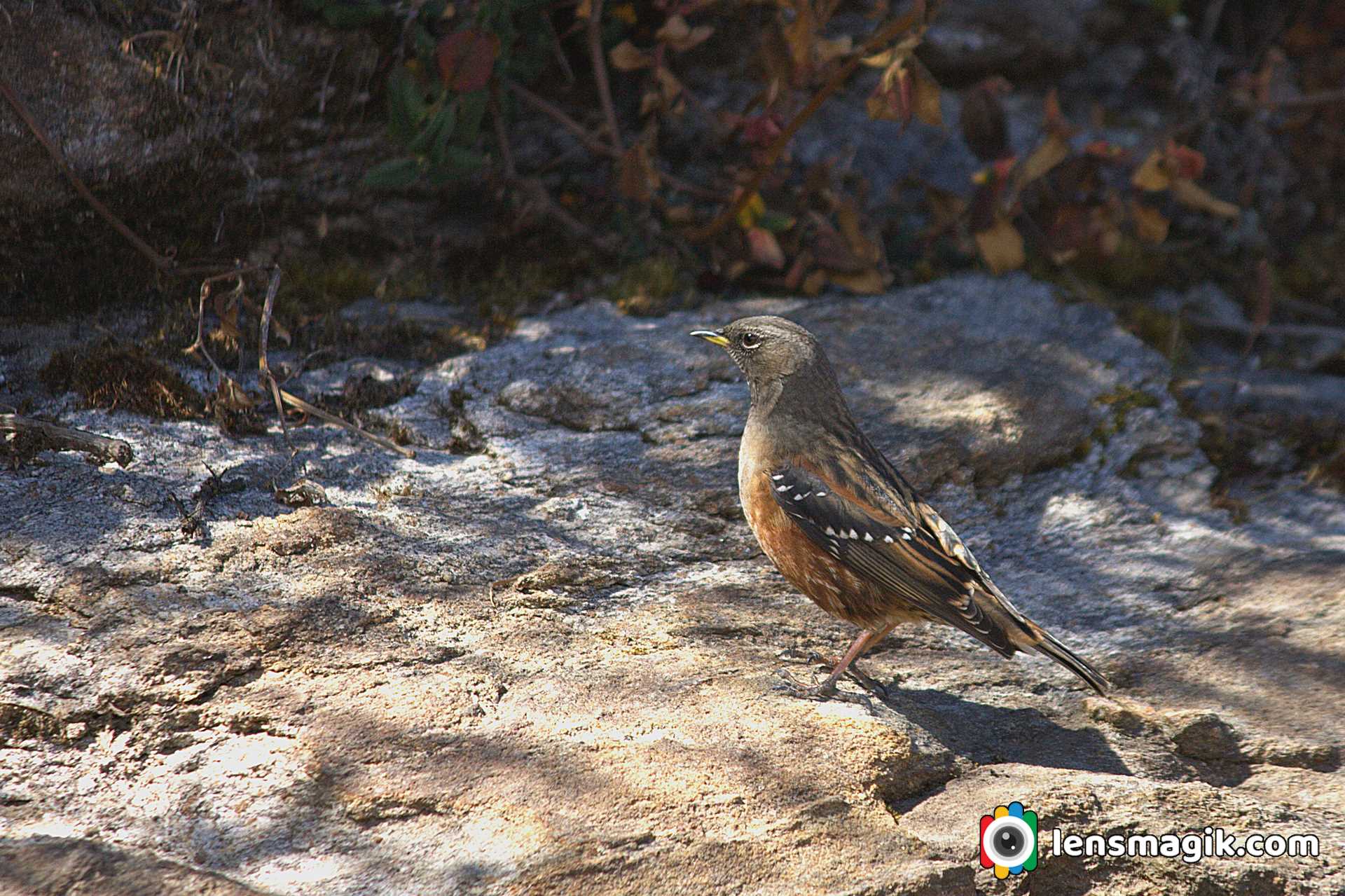
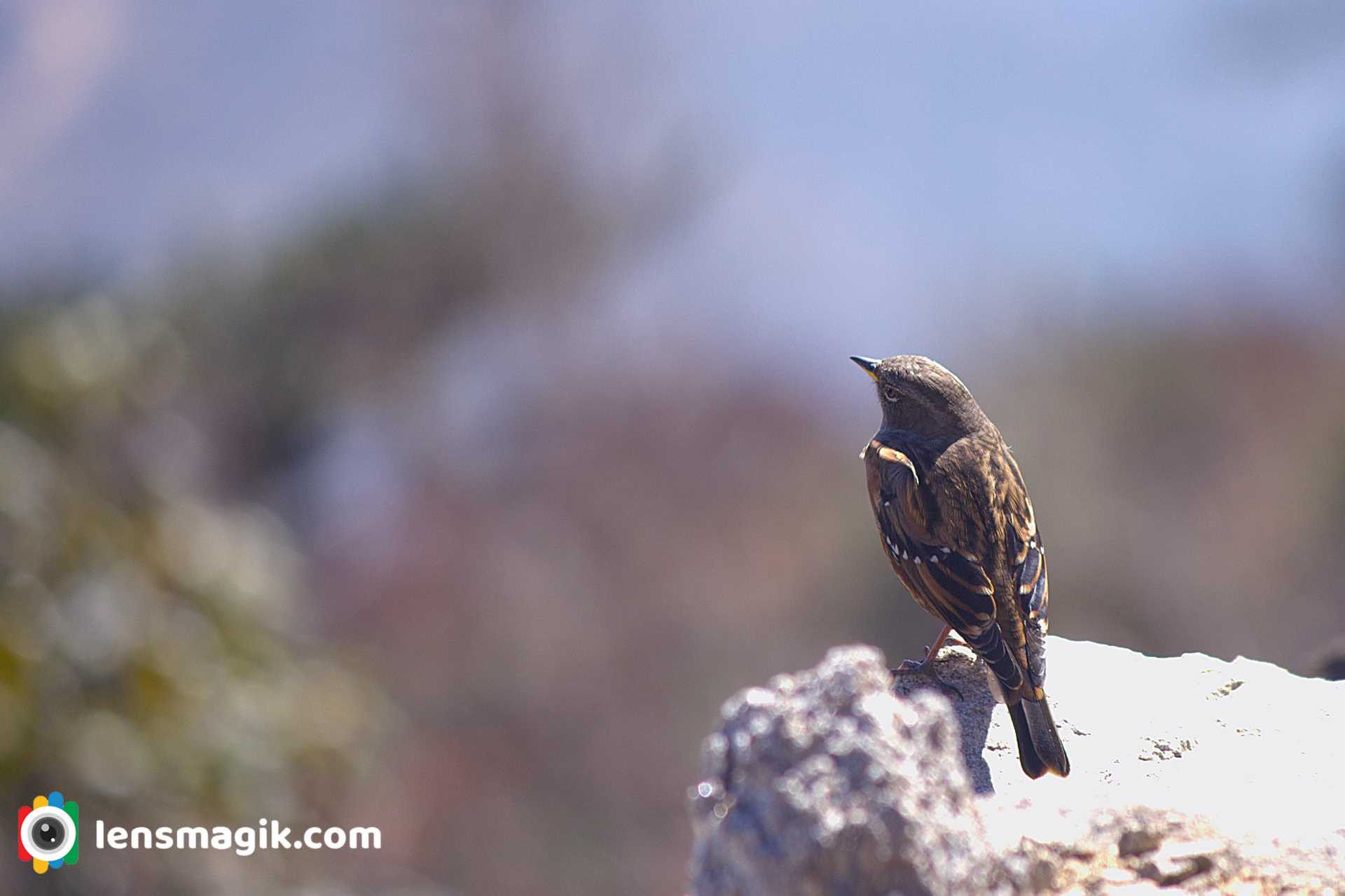
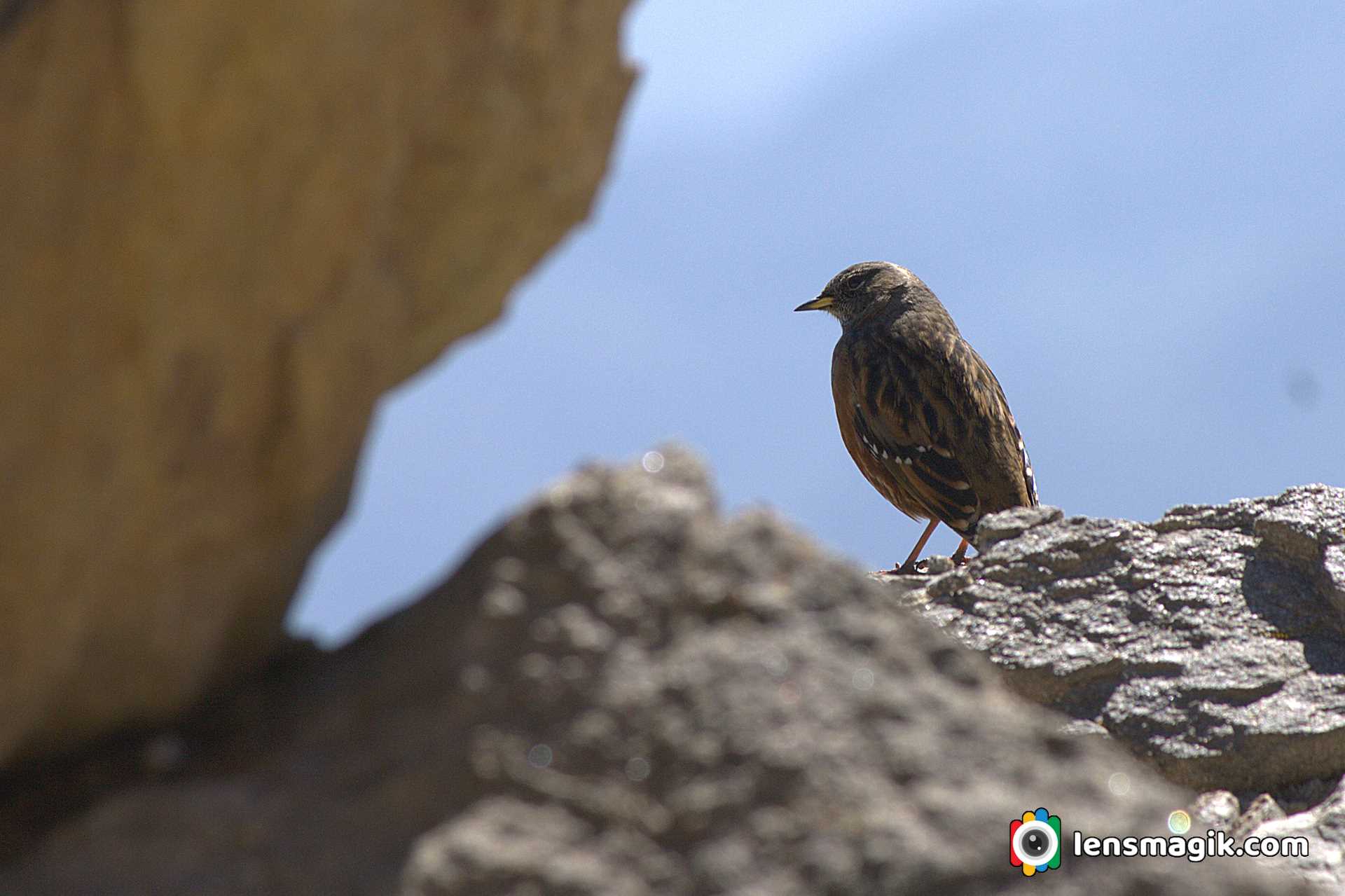
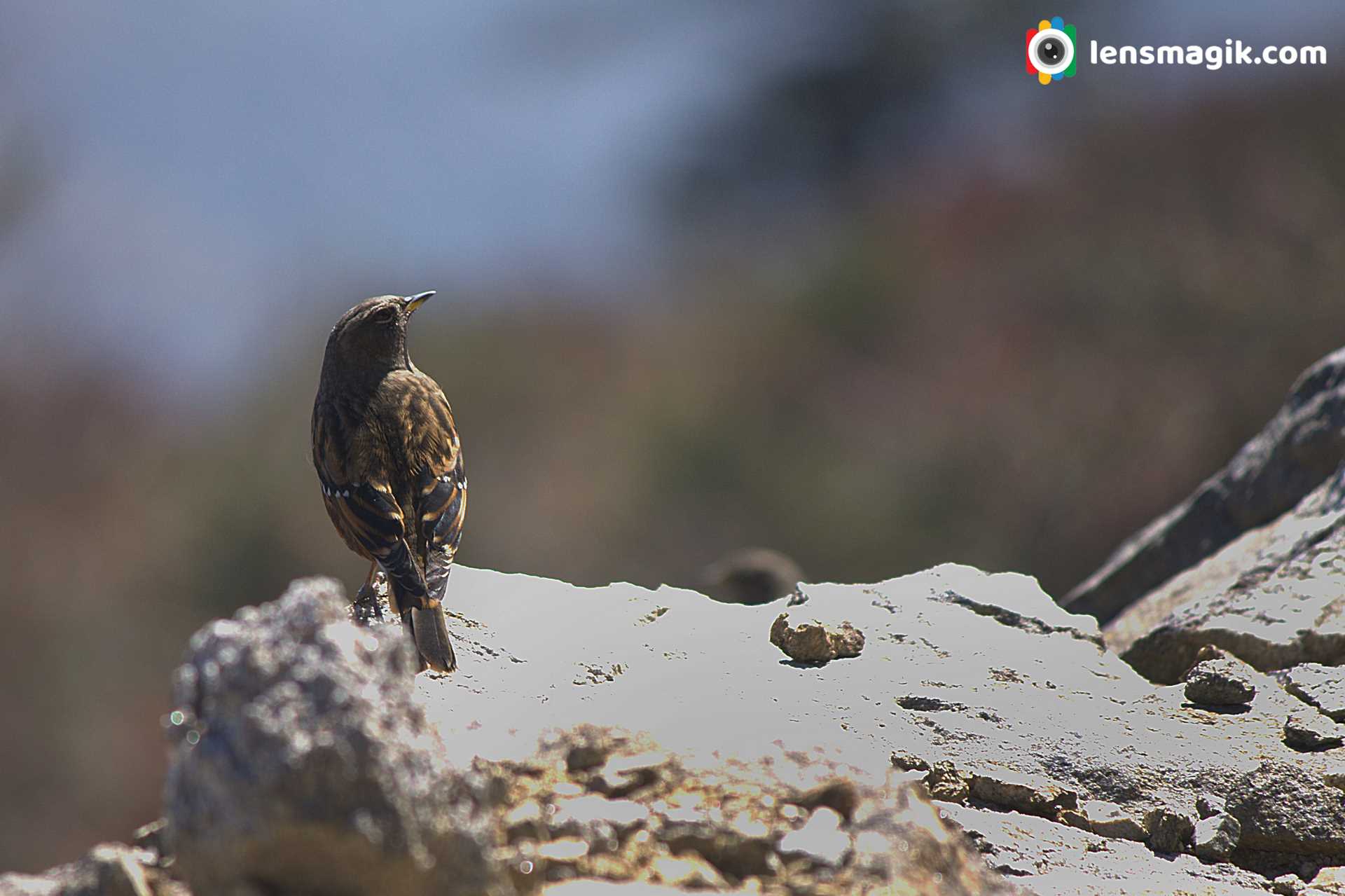
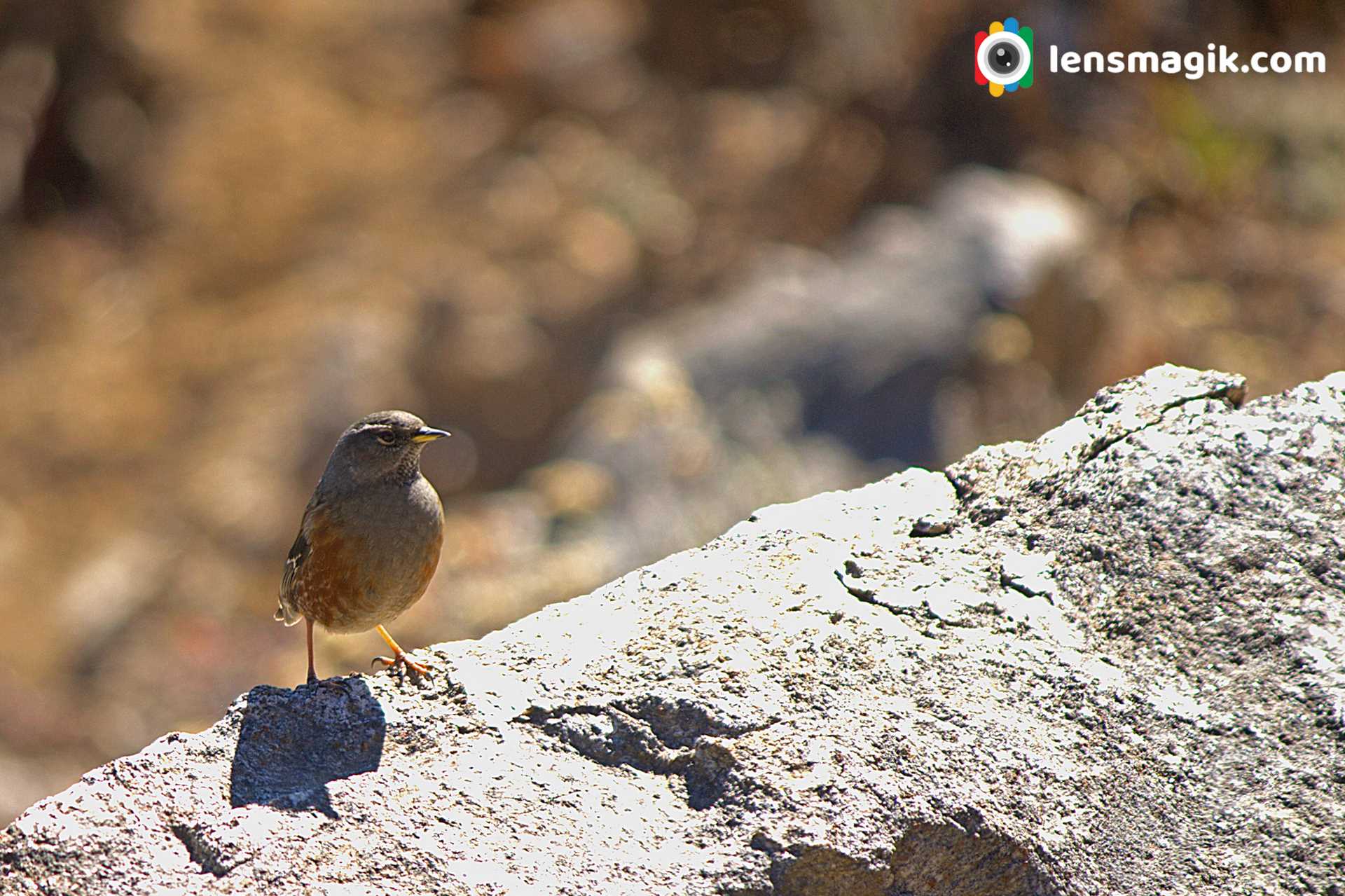
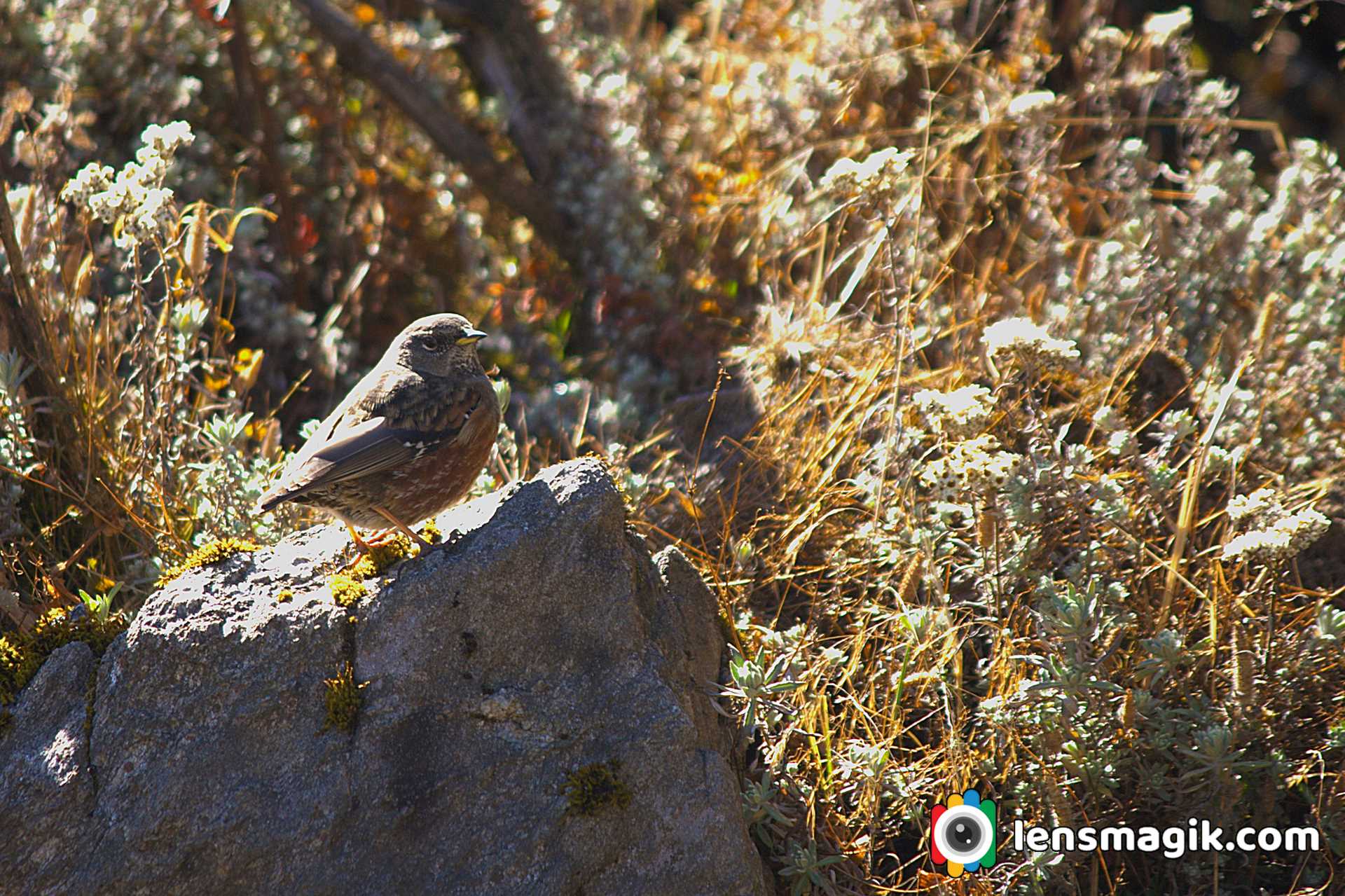
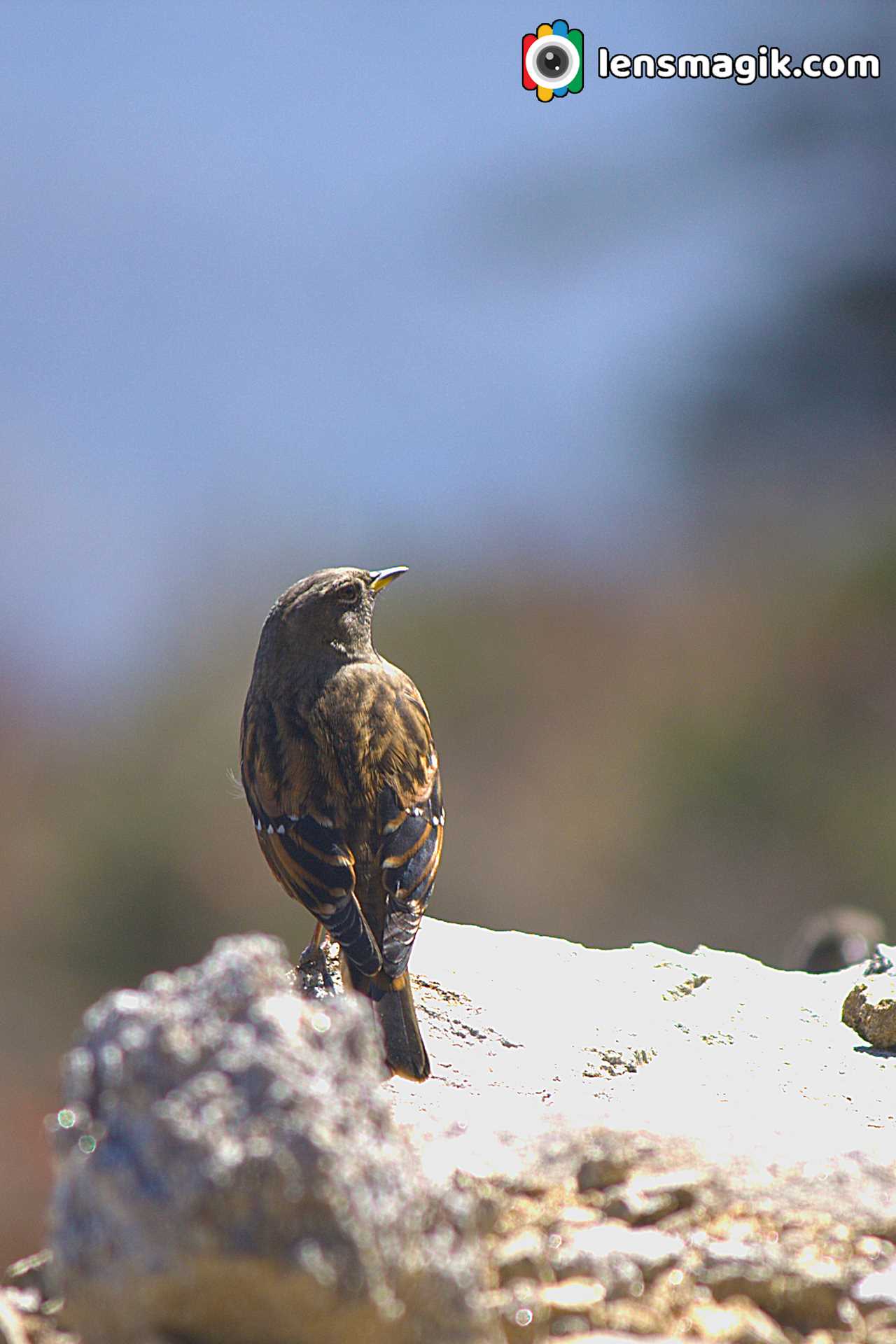
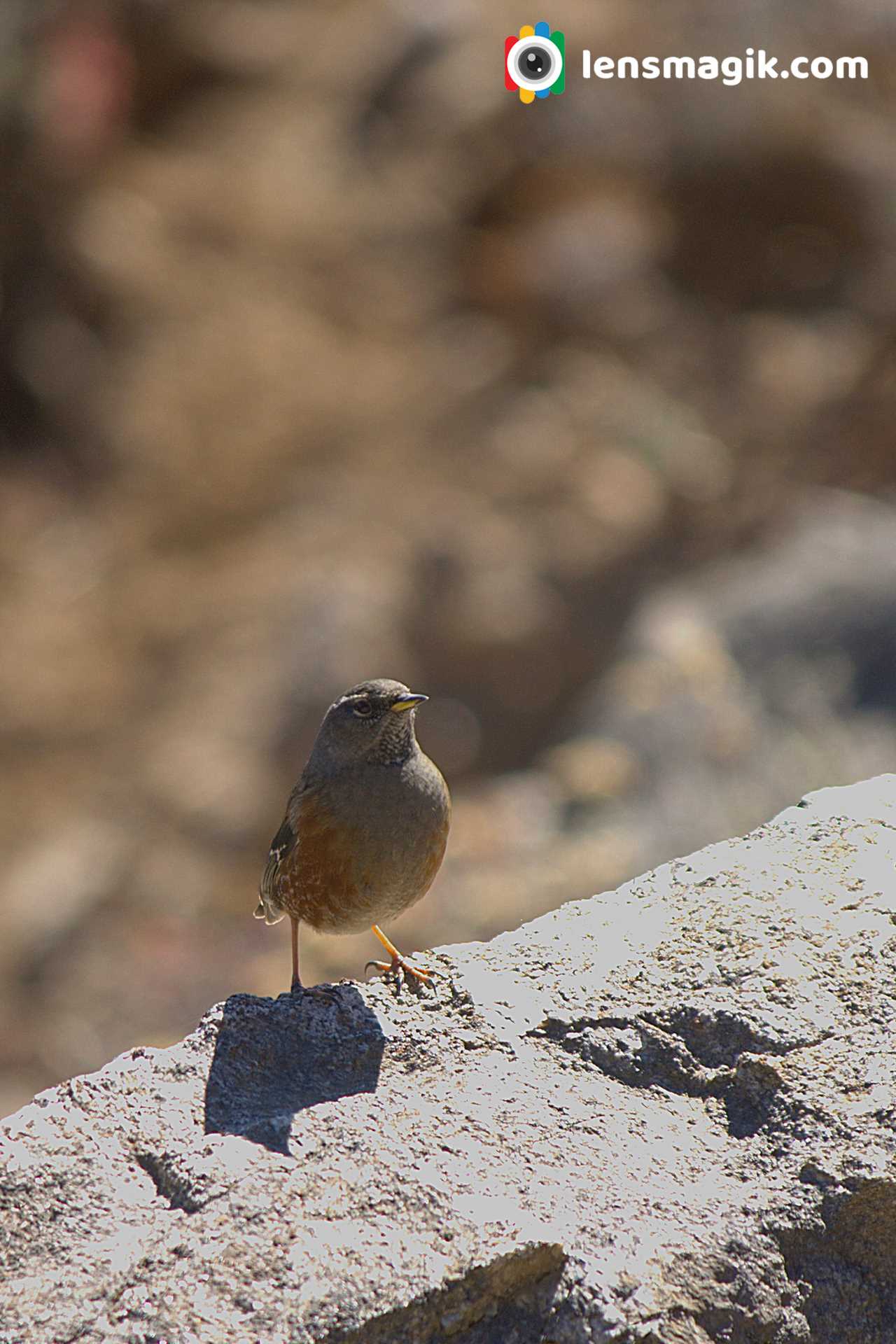
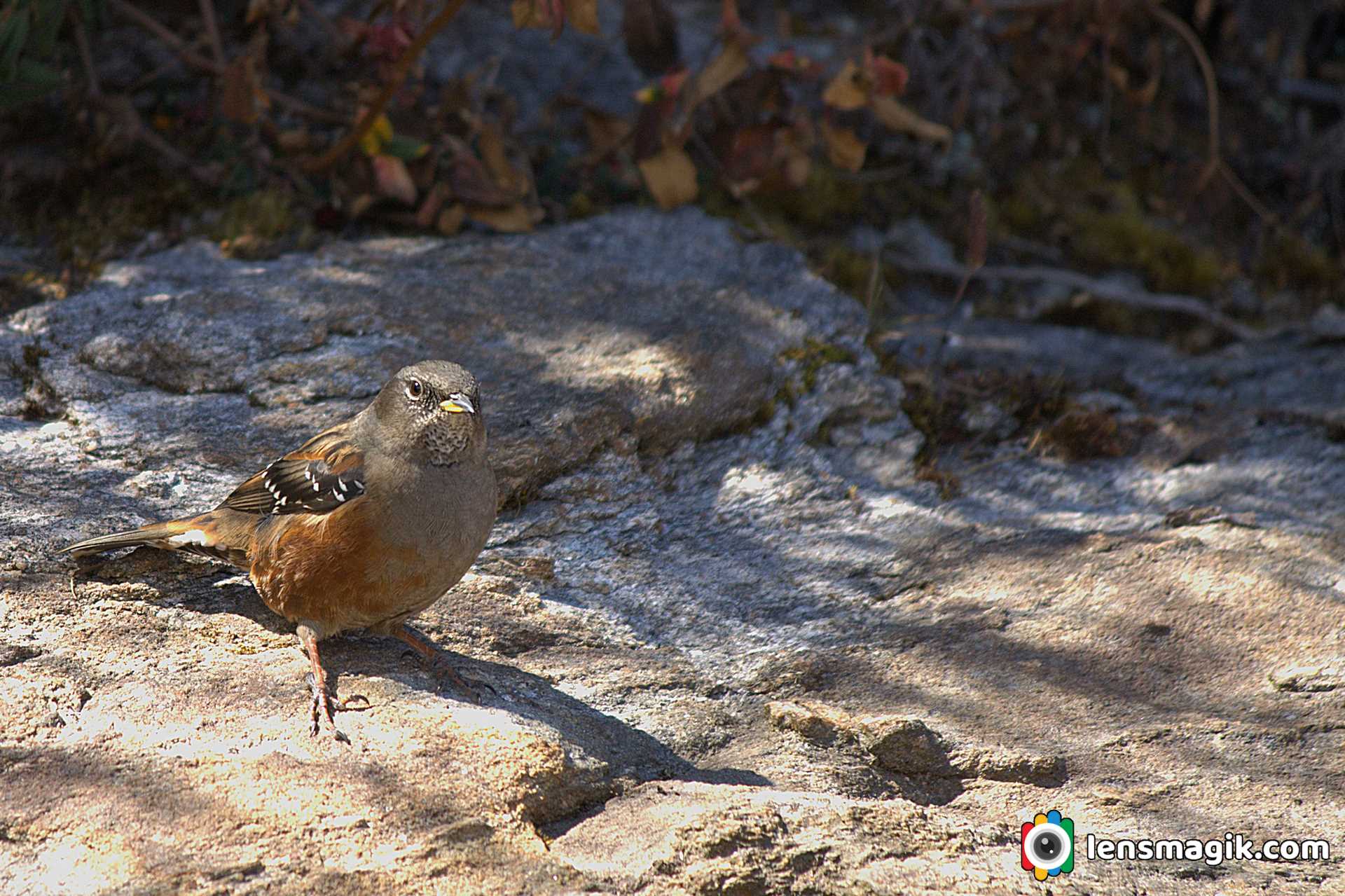
Alpine Accentor bird Binominal Name is Prunella Collaris . Total 9 subspices are recognised of Alpine Accentor bird.
Gear used : Canon 1000 D, Canon 55-250 mm Lens.
Road To Heaven is named to the road from Khavda to Dholavira in Kutch Gujarat. The road is so wonderful and scenery so it known as Road to Heaven . Khavda to Dholavira distance is around 58km but from Khavda there is a single line narrow road passes through small villages around 15-20 km approx. The main road starts after it and it is around 30-35 km approx. strait to Dholavira. Road is under constriction but almost 70-80% work done. The road heading to the city of Harappan Civilization Dholavira which is one of the largest site of Harappan Civilization and Indus valley Civilization.
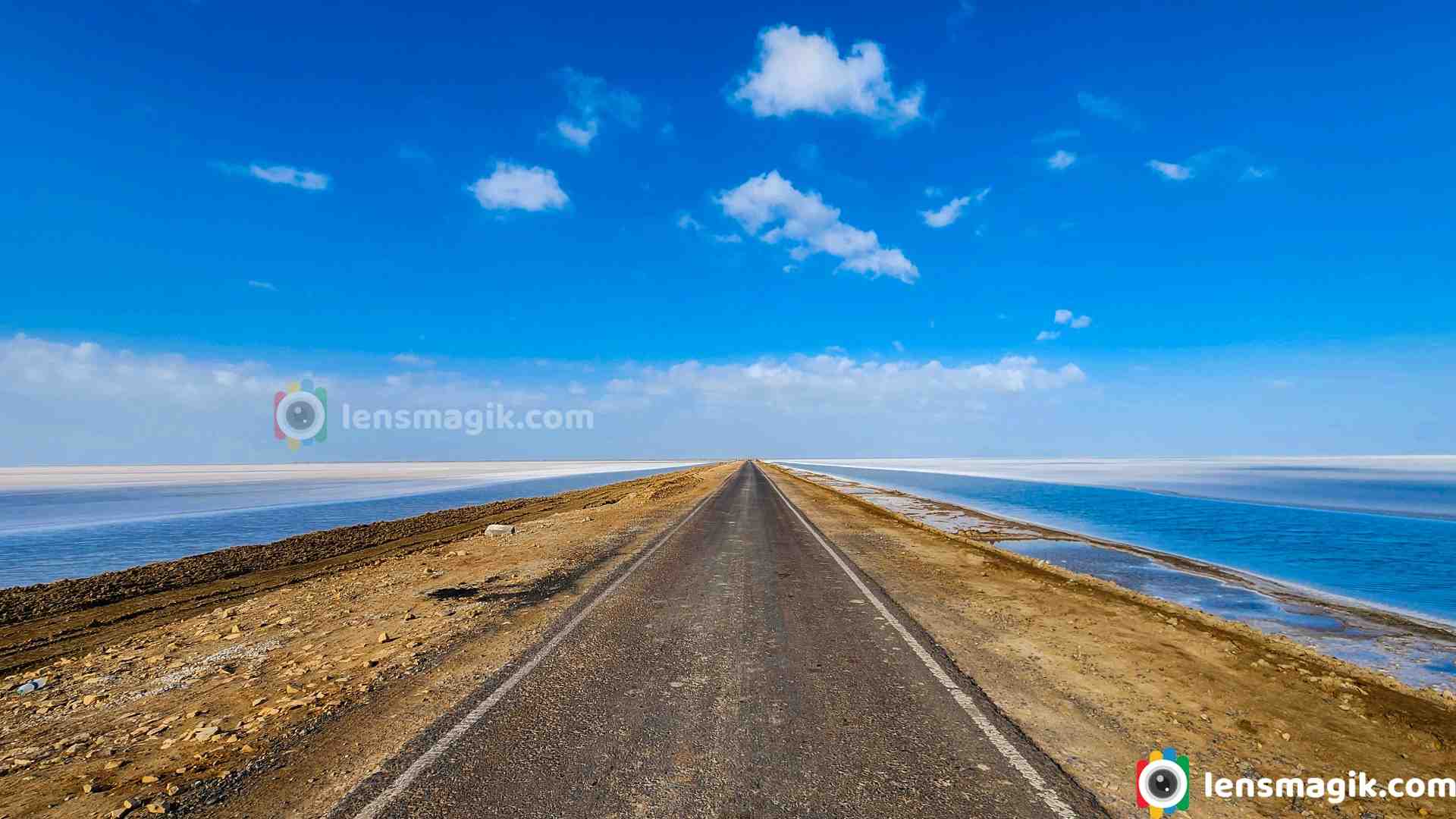
Kutch is a largest district of Gujarat and also of India. Main City or Headquarter of Kutch District is Bhuj. Kutch is famous for White Desert or White Rann. In Every winter season from December to February celebrate “ Rann Utsav “ to attract foreigners and also locals. Tent City made in white desert to stay and also cultural programs arranged in it. The main Rann Utsav held in Dhordo of Kutch.

After visit White desert people also visit Dholavira which is nearest destination from Dhordo and also Kalo Dungar in between. From Dhordo you will have to go Khavda first and then from Khavda to Dholavira which is connected through “ Road To Heaven “. Dholavira is located at Khadir Bet. Khadir bet is separated because after monsoon the water filled outer side of bet. So the Road To Heaven is the way to connect Khadir bet to main city Bhuj.
About Road To Heaven Dholavira / Road to Heaven in Kutch :
- · It connected from Khavda to Dholavira.
- · Road to heaven distance around 30-35 km.
- · After monsoon the rain water on the both side of the road. You can see beautiful Greater Flamingo birds in between. Water level is low but muddy.
- · After winter in January –February the water on both side of the road is evaporated and turn into salt. Not all water but some areas during the road.
- · Water on the both side of the road or Salt/ white layer on both side of the road make the beauty of the road and that’s why it name as “ Road To Heaven “
- · When you are on the road there is hardly some traffic you face the open road with both side water or salt at morning or evening make the scenery like a Heaven.
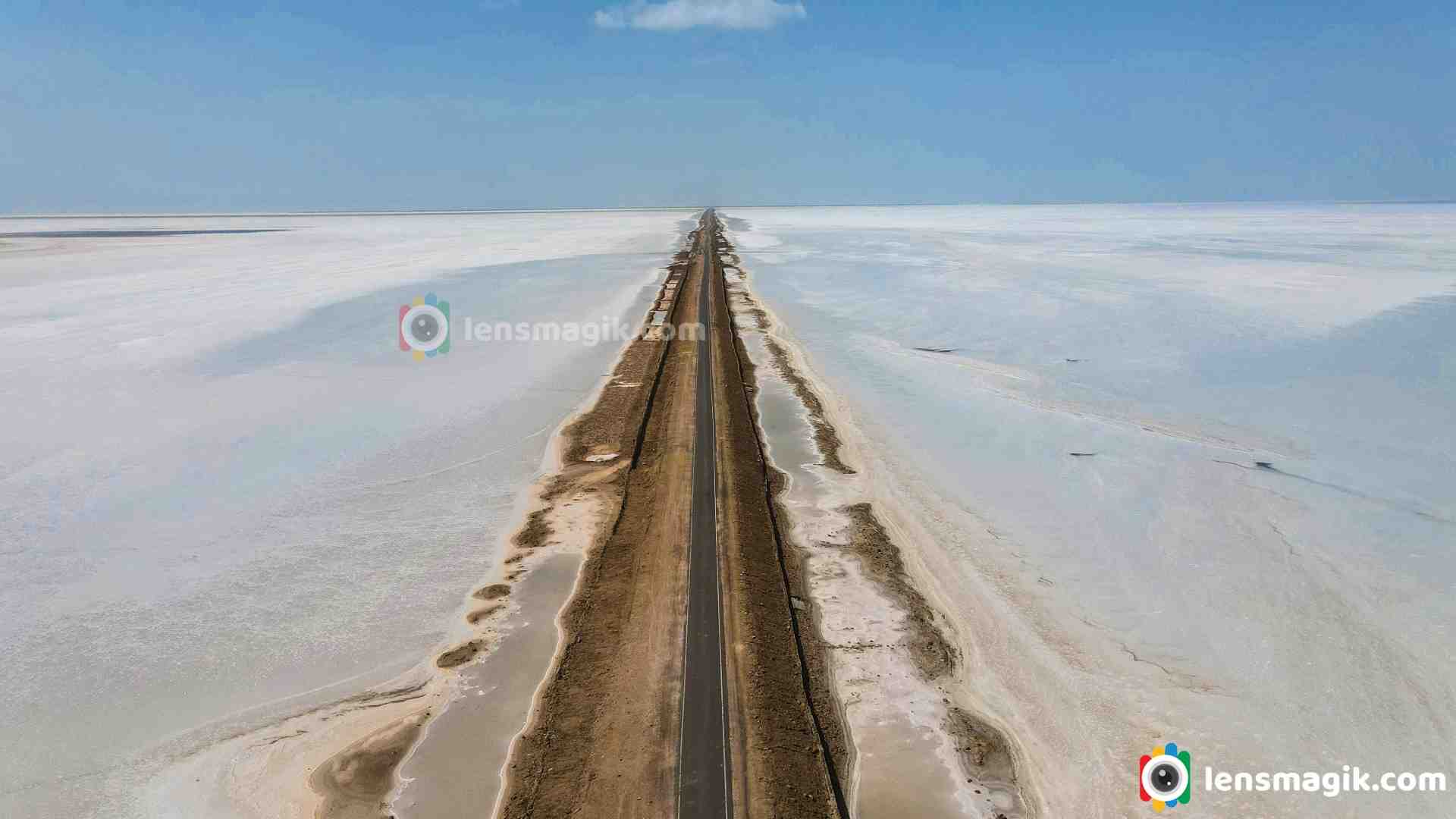
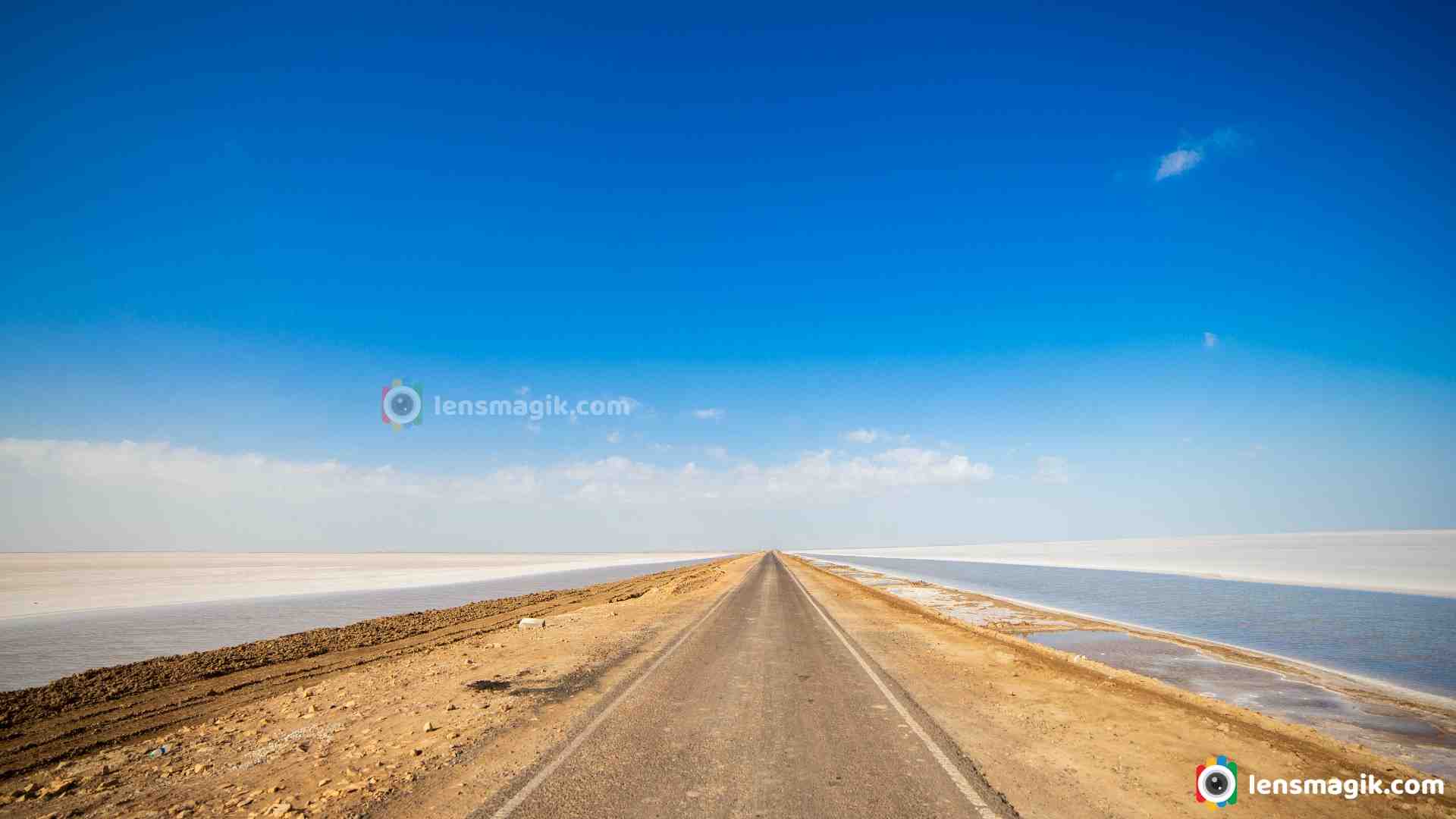
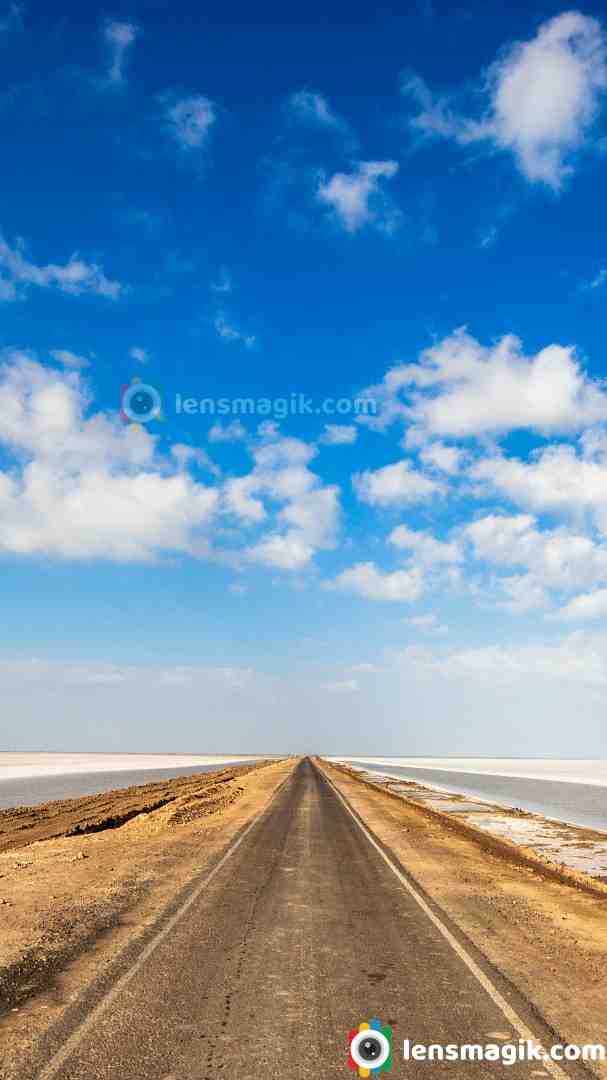
I must suggest to visit Road To Heaven in Kutch while you visit Kutch. Also Visit Dholavira which is one of the largest Harappan Civilization site.
Places to visit near Road To Heaven :
Dholavira, Kalo Dungar, Dhordo, White Desert
Places to Visit near Bhuj : White Desert , Kadiya dhro, Chhatardi, Mandvi beach, Vijay vilas palace, Bhujyo Dungar, Smriti Van, Vande matram memorial
Camera Used : Canon 80D, Canon 6D, DJI Mavic Air2
It is the largest species of Flamingo bird family and also a most widespread species of flamingo family.It is found in India ,south east , middle east and Africa. It is migratory bird. They also breed in India. In Gujarat they breed in Rann Of Kutch , Little Rann of Kutch also found in Thol Bird Sanctuary. I often visit Thol sanctuary so got good shots of them. Best time for shoot them is may-Jun at Thol bird sanctuary bcz of water level is too low . It is been recorded that some flamingo birds are resident in Gujarat at many places like LRK, Khijadia sanctuary, Nalsarovar and Thol Sanctuary. They also breed here and stay for all seasons. So you can find greater flamingo birds in all seasons in Gujarat at many places.
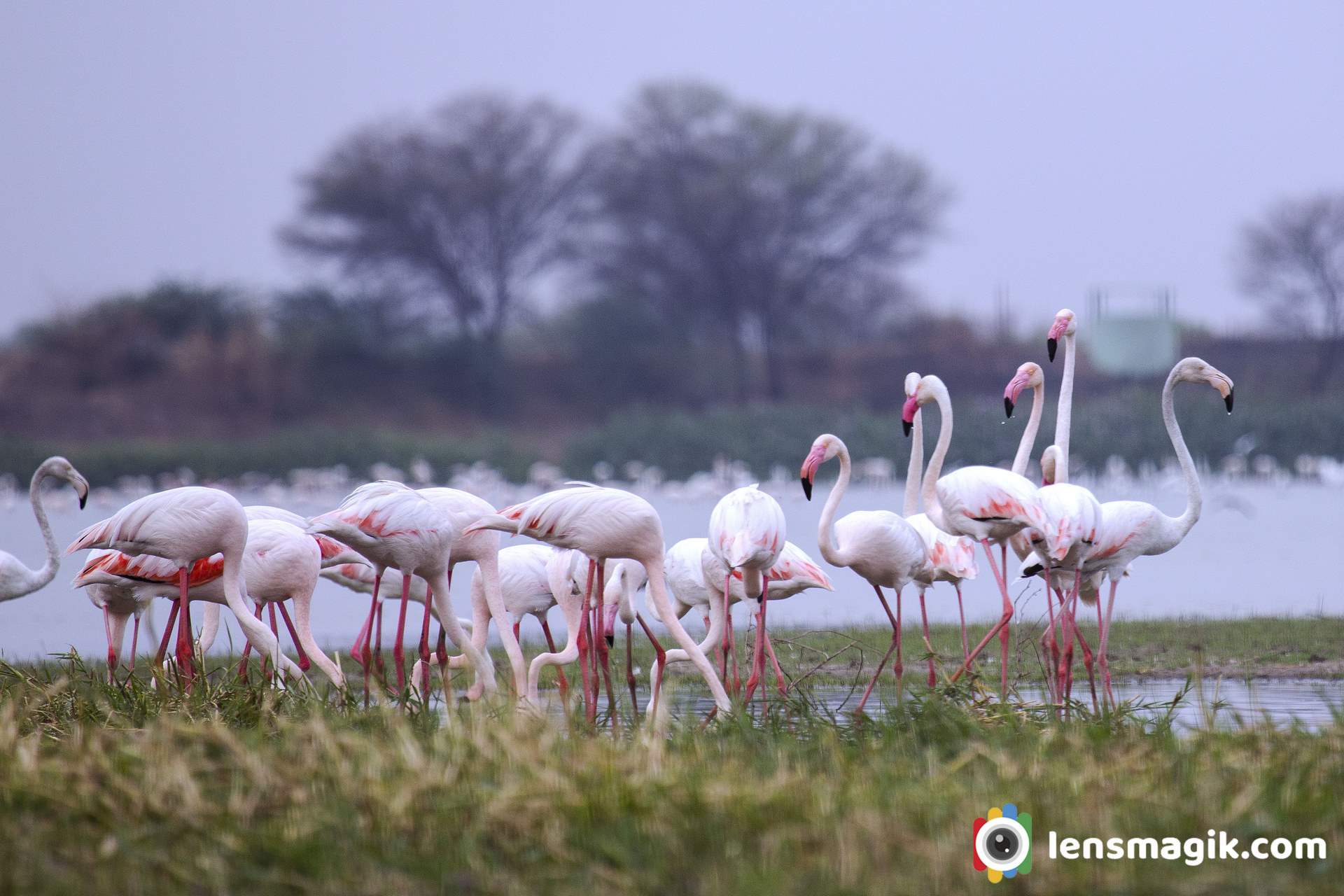
Flamingo bird facts and description :
- Greater flamingo bird is the largest living spices of flamingo.
- Greater flamingo has no subspices.
- Flamingo color most of pinkish white in plumage. Wings are red and feathers are black in end.
- Greater Flamingo bird call is like honking.
- The average lifespan of flamingo bird is 30-40 years.
- Main Difference between Greater flamingo and lesser flamingo is height . Lesser flamingo is shorter than greater flamingo. Also Greater flamingo has pale pink bill and black tip. In other case lesser flamingo has dark crimson bill. Lesser flamingo is also more red in color than greater flamingos.
Greater Flamingo birds In Thol Lake : Thol sanctuary is often i visit. Flamingo birds are stay here all seasons. I got good numbers of Greater flamingo and lesser flamingo bird images in a group when i visit Thol. This is my best time with flamingos. Also i got some beautiful pictures of flamingo birds with group and also in duo with some masti. Flamingos looks very good in frame bcz of their color. Thol lake is good place for birders because more than 150 birds spices found here. Also some mammals like Blue bull and black buck also found here. Lots of water birds and tree birds found here. Also sanctuary is not so big so you can find all birds in around 6 sqkm area. Best time to visit thol lake is November to March. All migratory birds are visit in winter so that is best time. Early morning is best for birders.
Timing And Fees of Thol Sanctuary :
Thol Sanctuary open at 6 AM in morning and close at around 5 PM
Fees of Thol Sanctuary is 50 INR per person and camera fees are 200 INR. Car fees are 500 INR.
Weekend fees may change that actually i don't know about it.
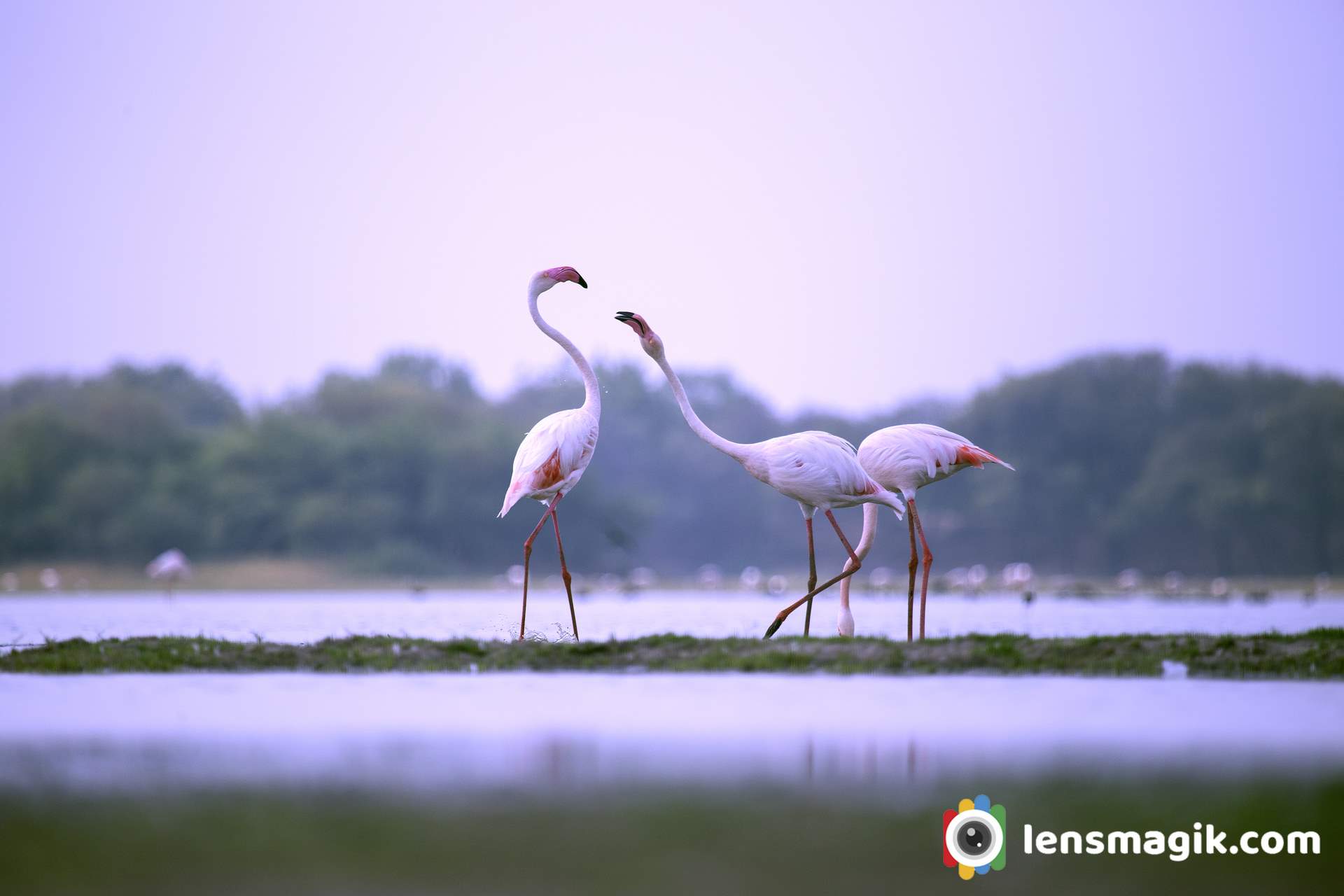
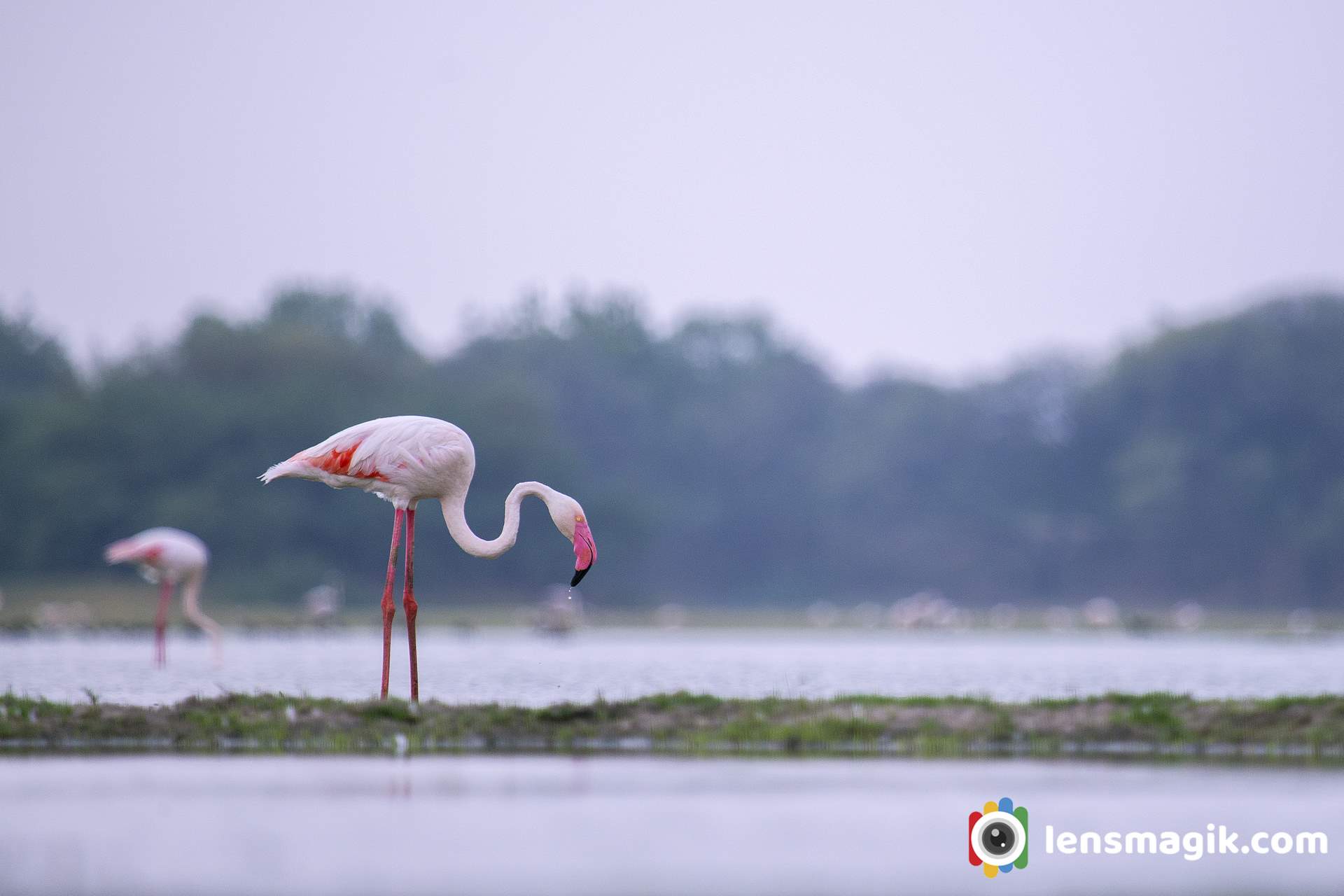
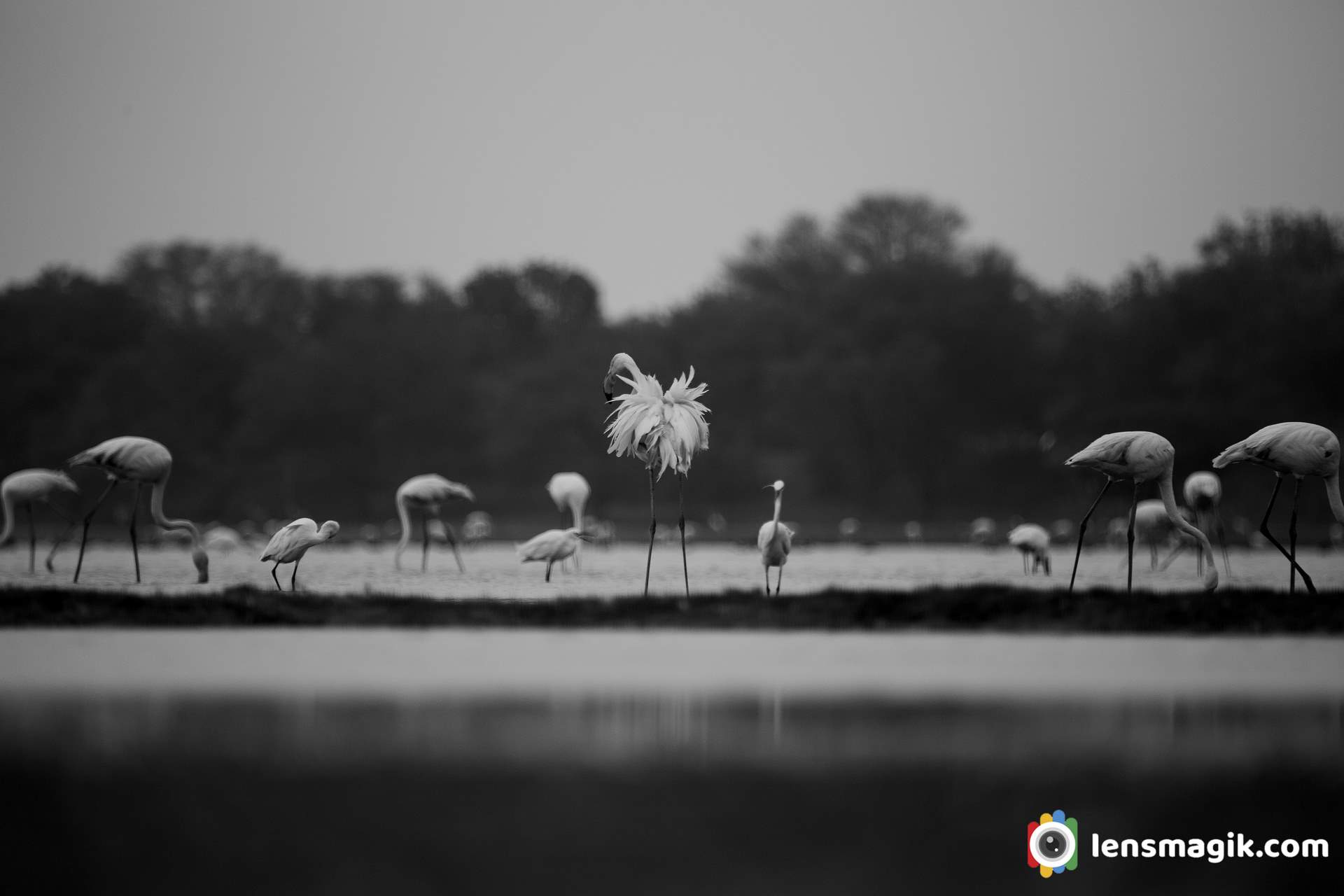
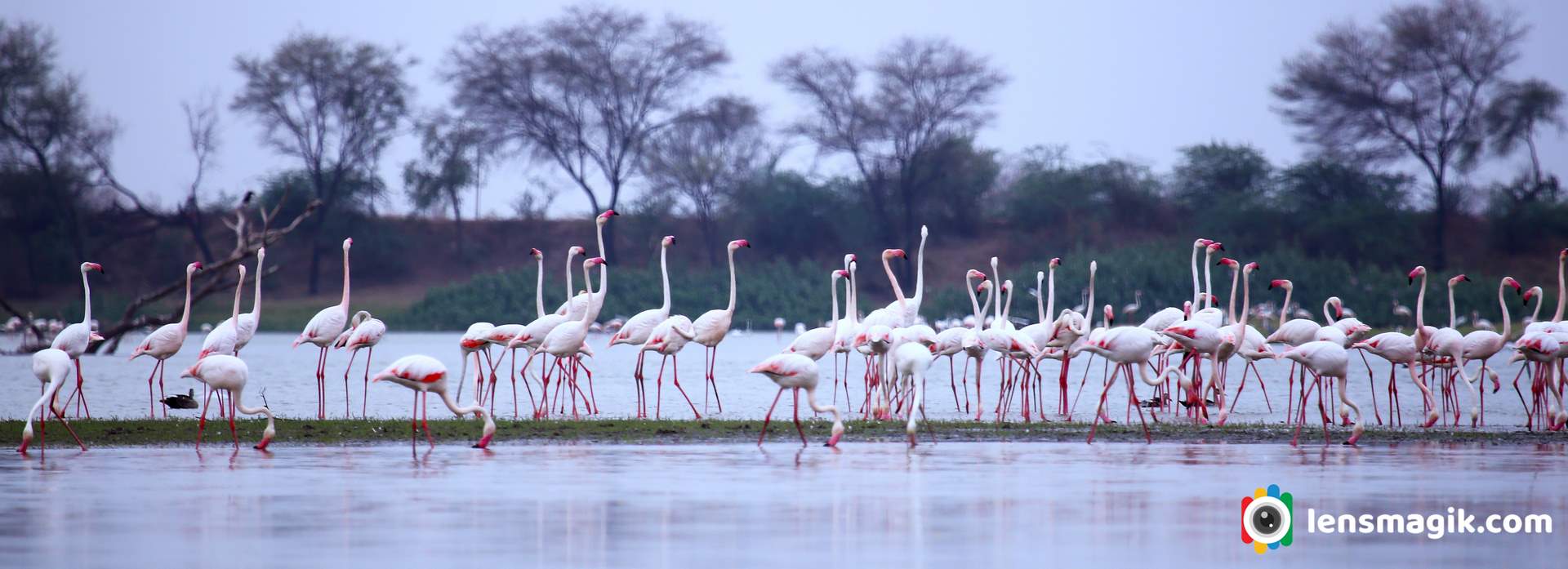
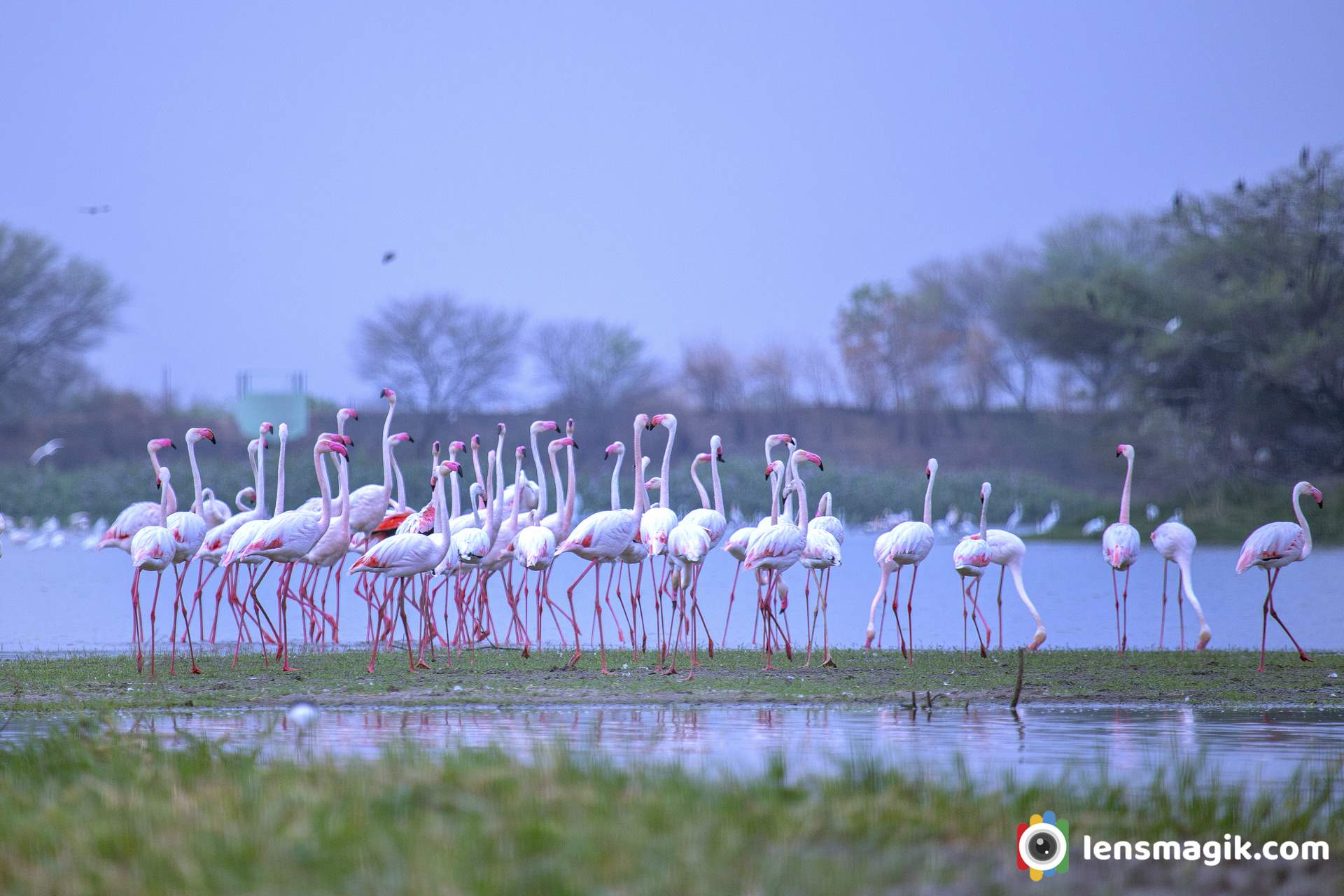
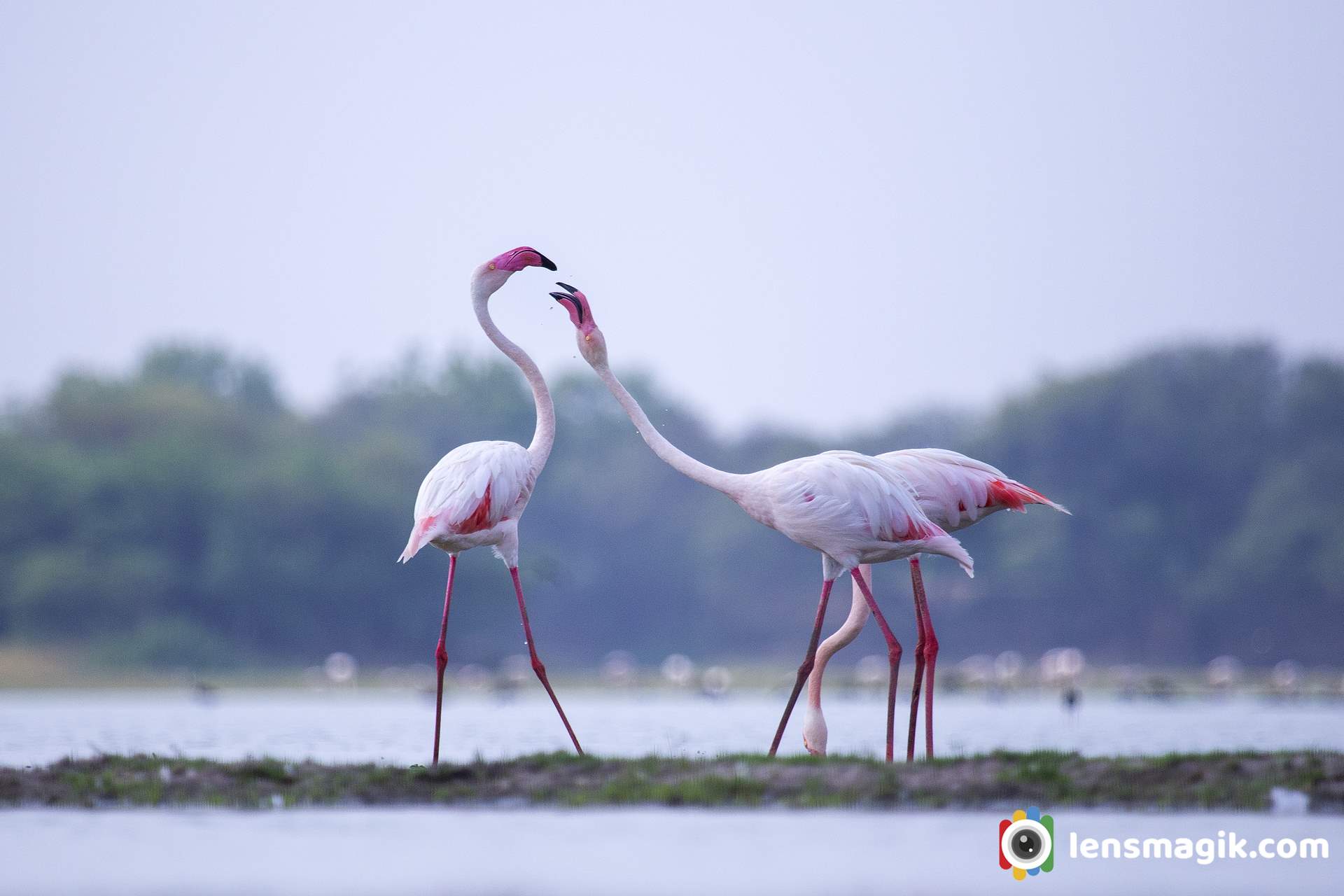
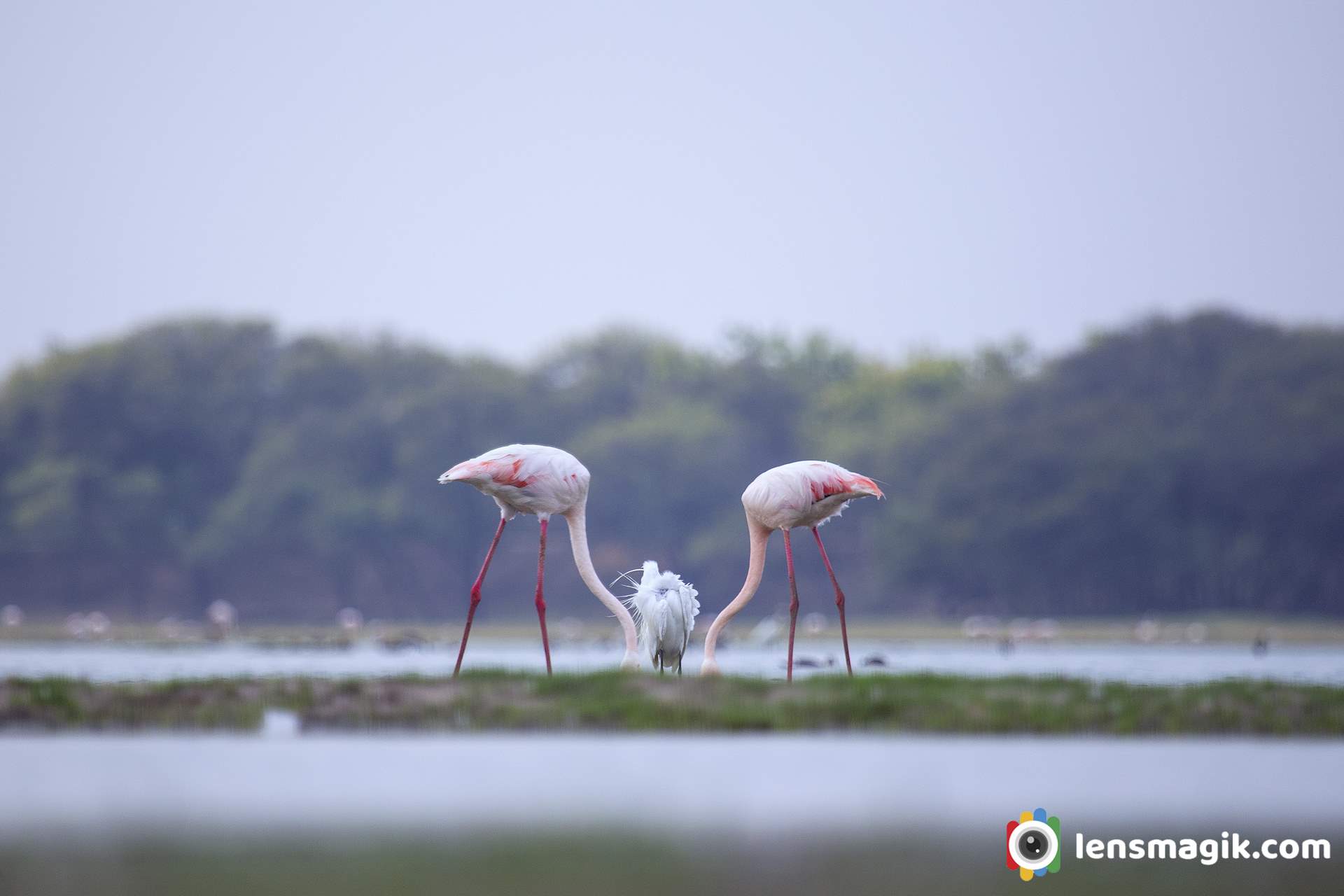
Two flamingos with little egret in between of them with down head all. The images of flamingo bird making a good frame. Because of its color flamingo birds images are very attractive and also their grouping make a perfect frame of flamingo bird picture.
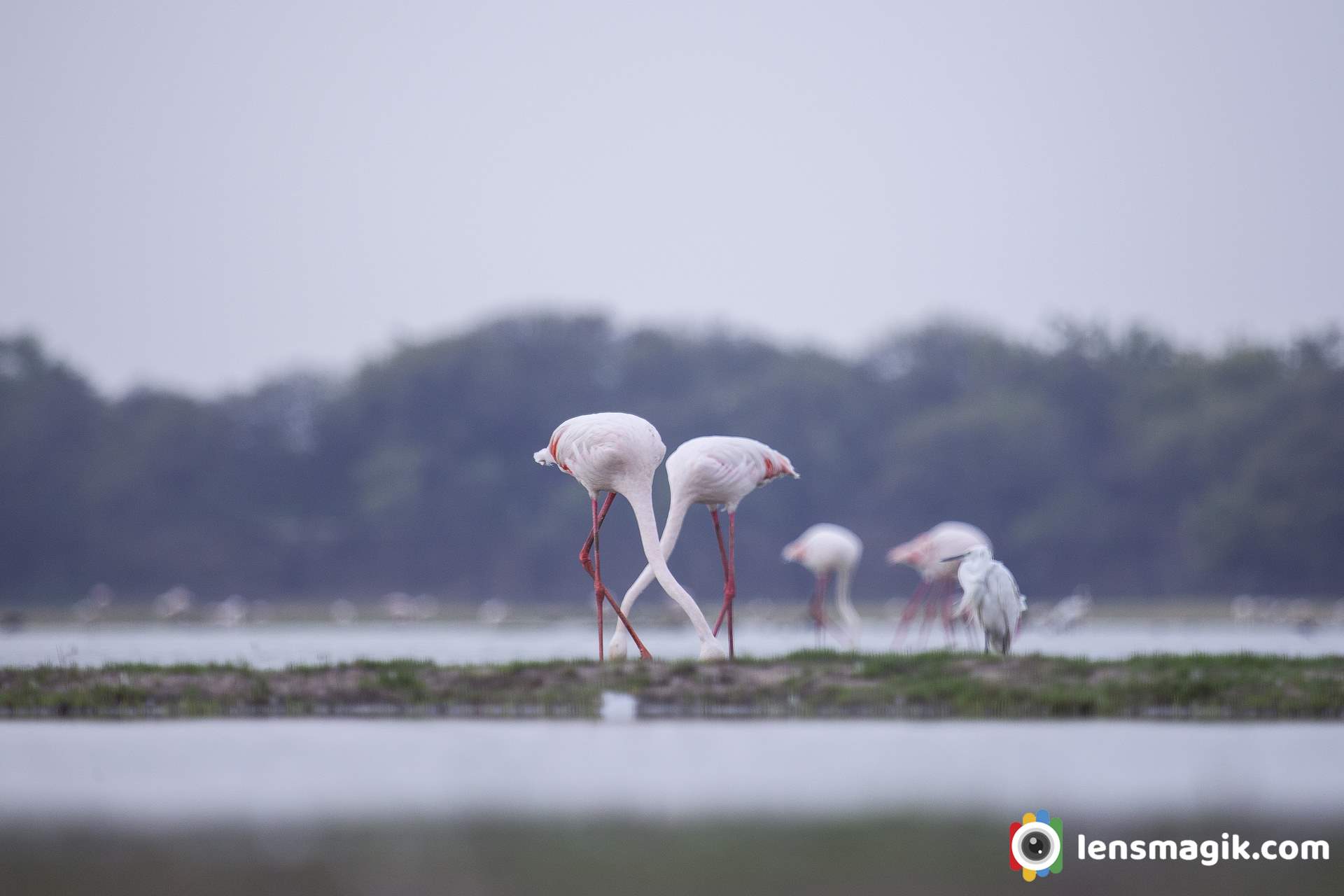
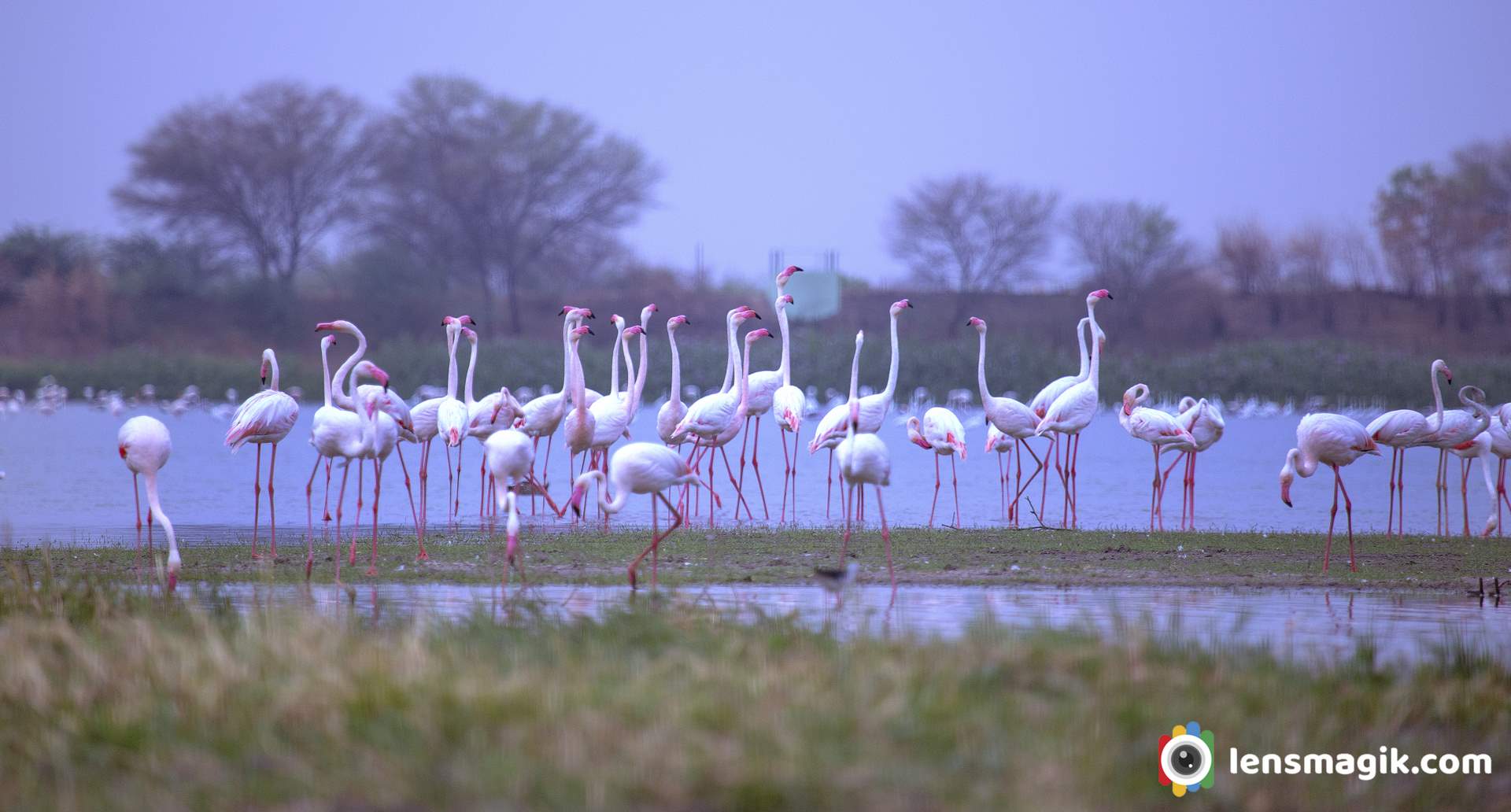
A morning pared time for flamingo birds. A beautiful Greater flamingo birds are in a raw make image nice and show their unity.
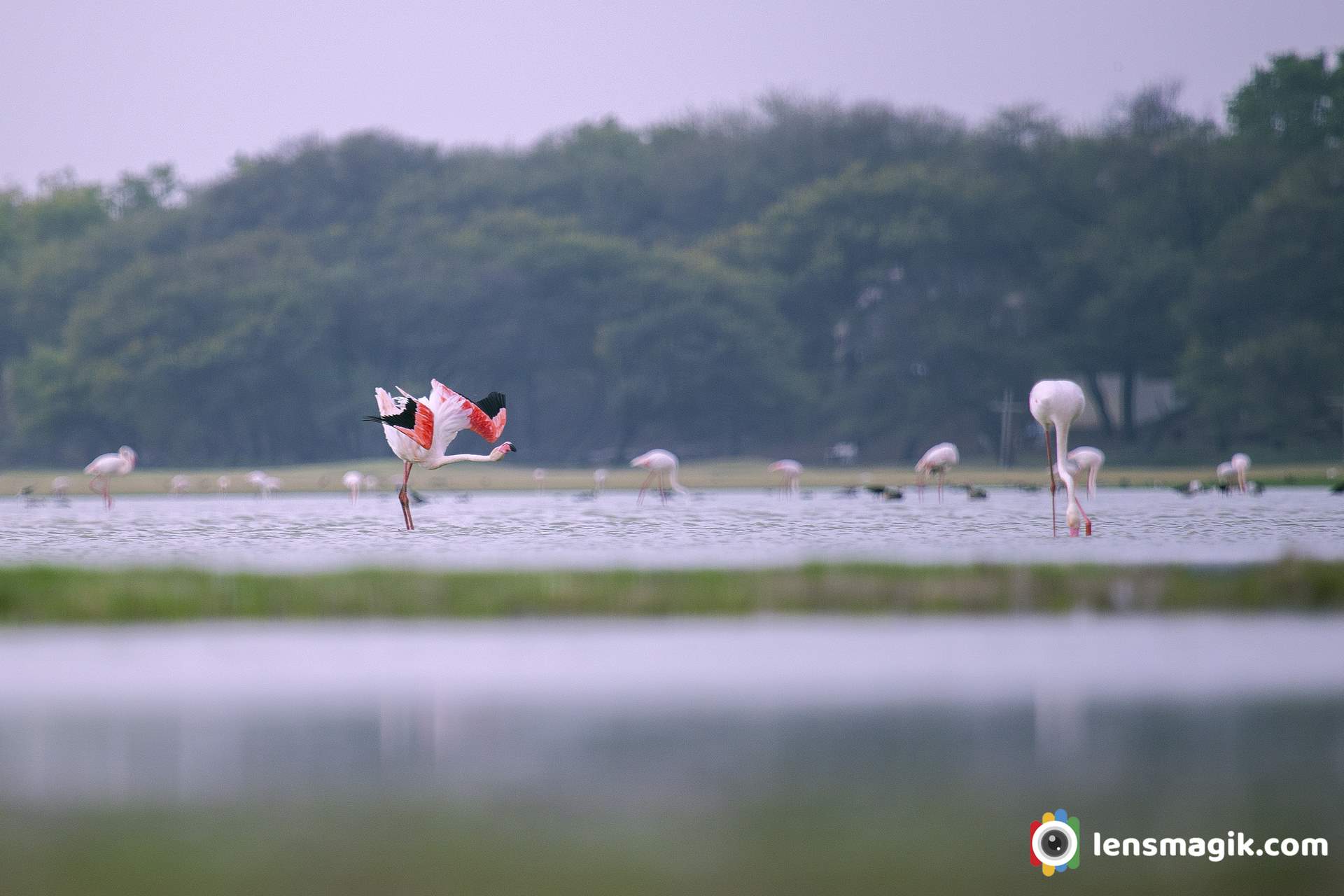
Perfact wingspan of Flamingo bird looks great. Pink Wings make image more attractive.
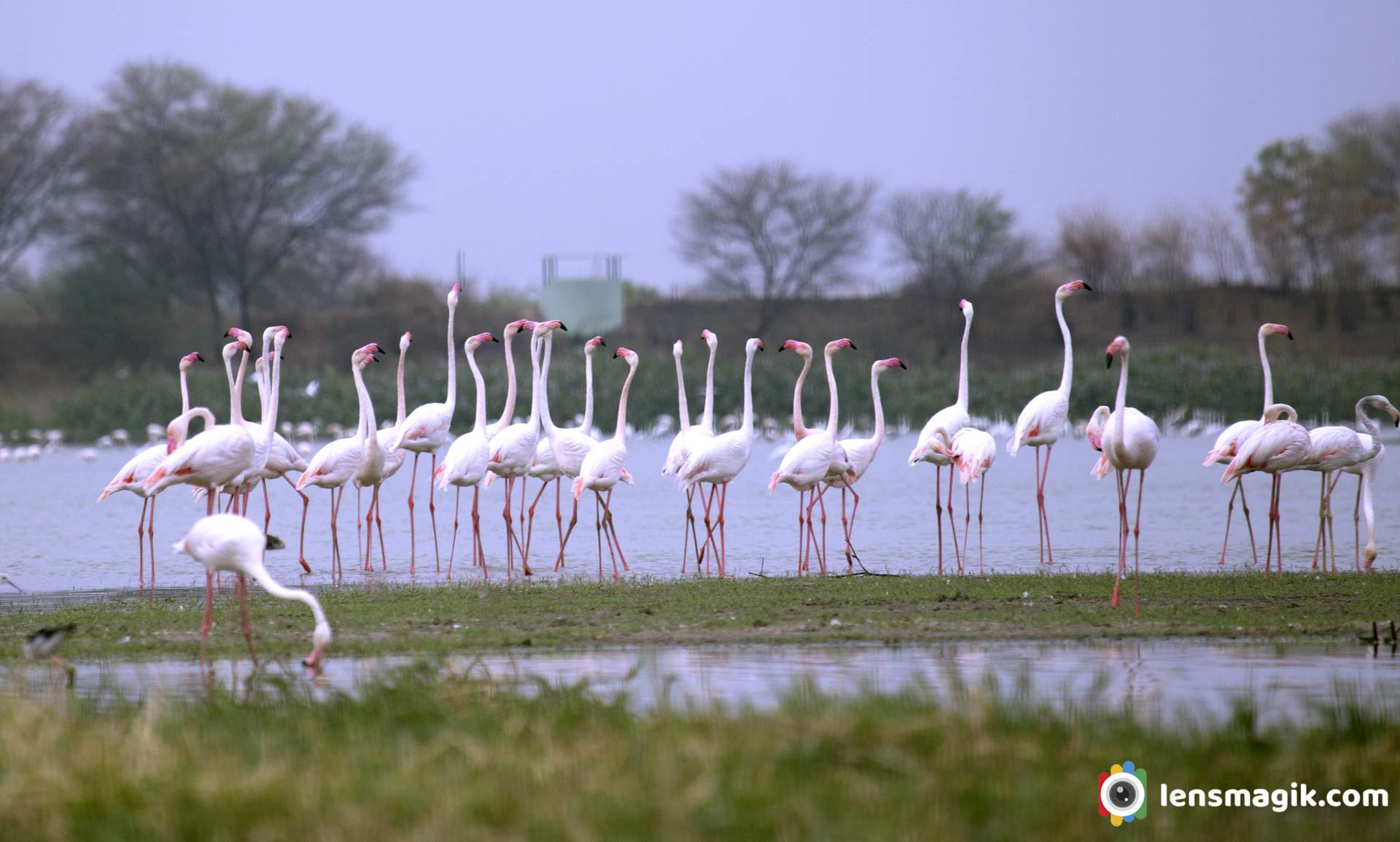
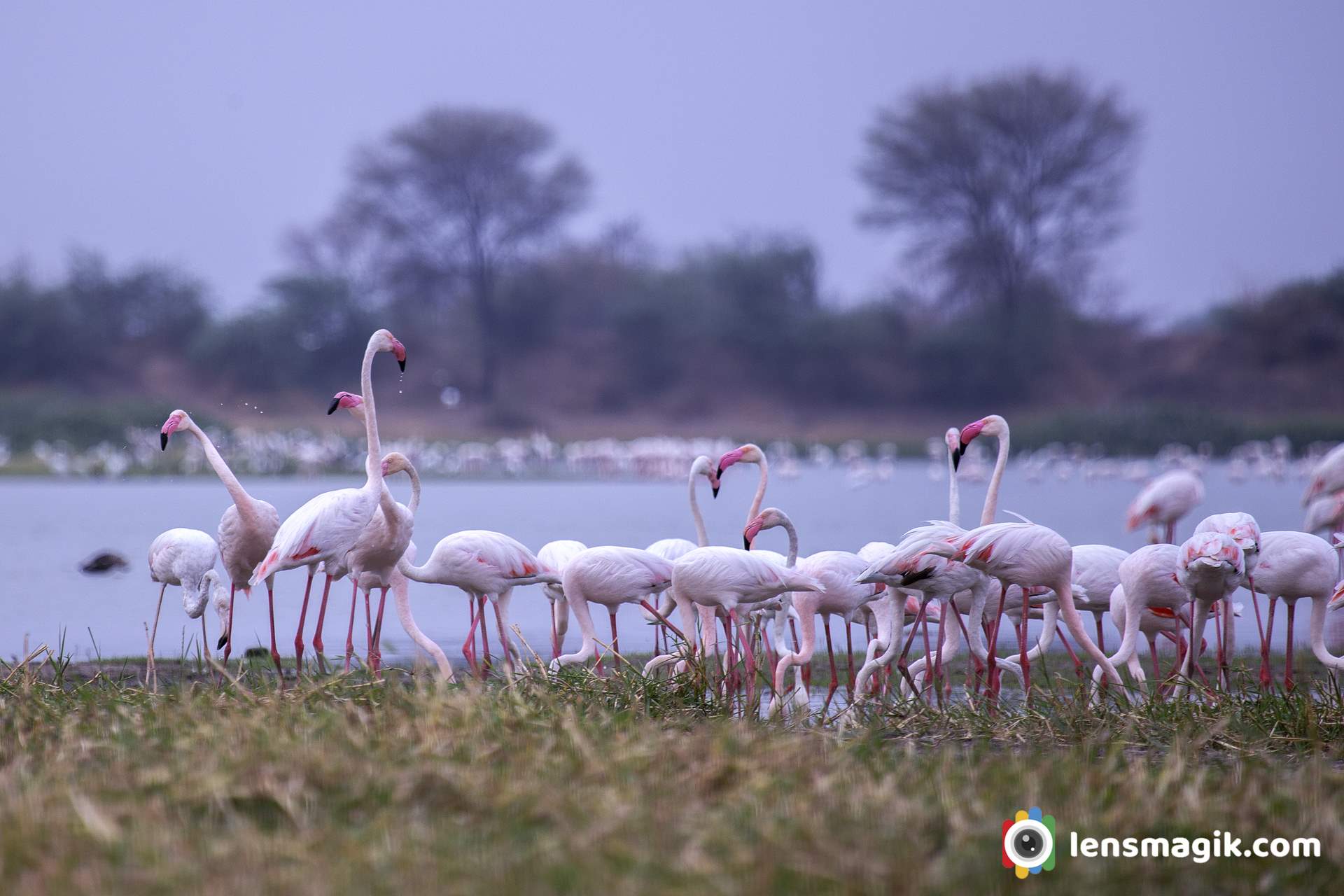
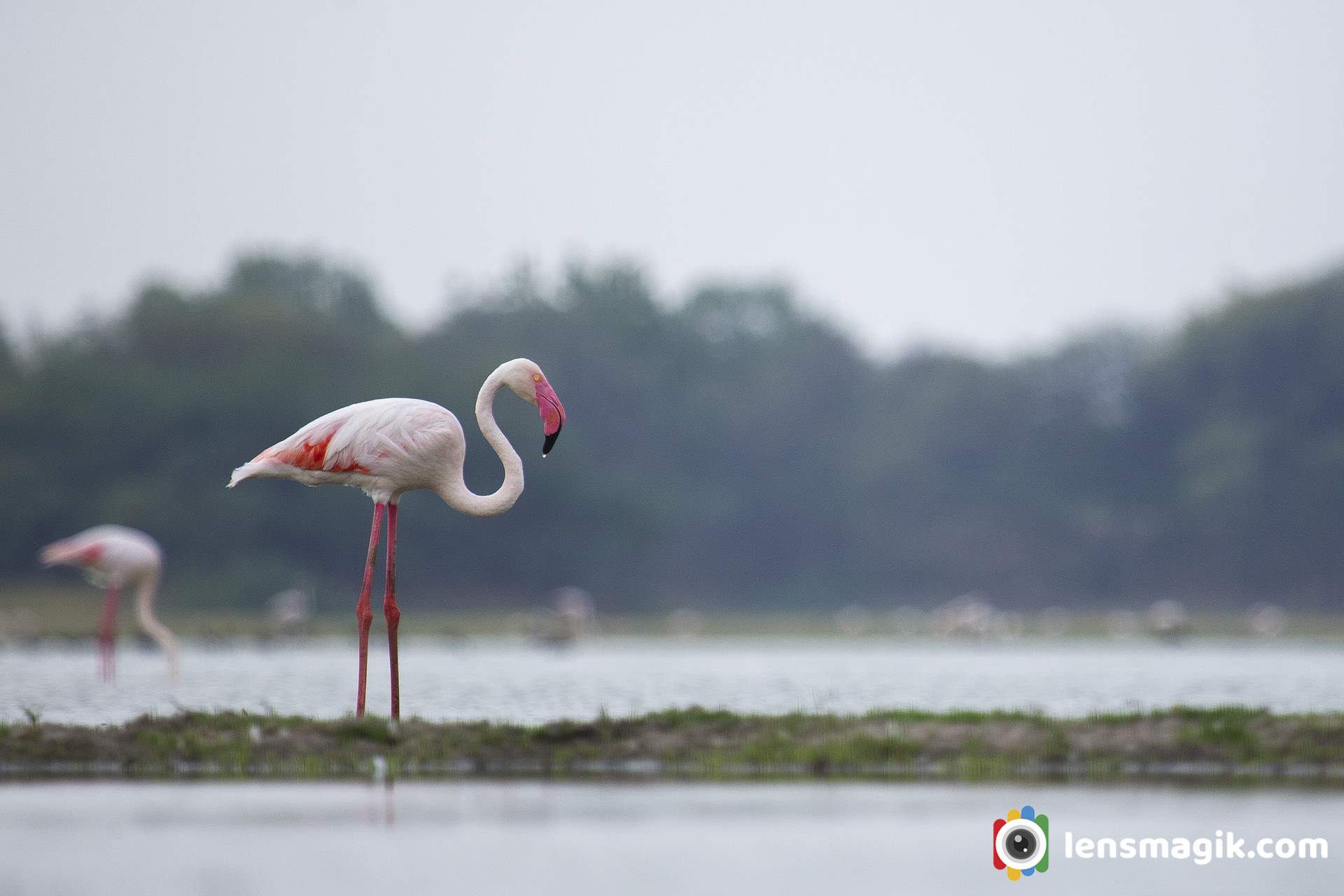
Solo Greater flamingo bird
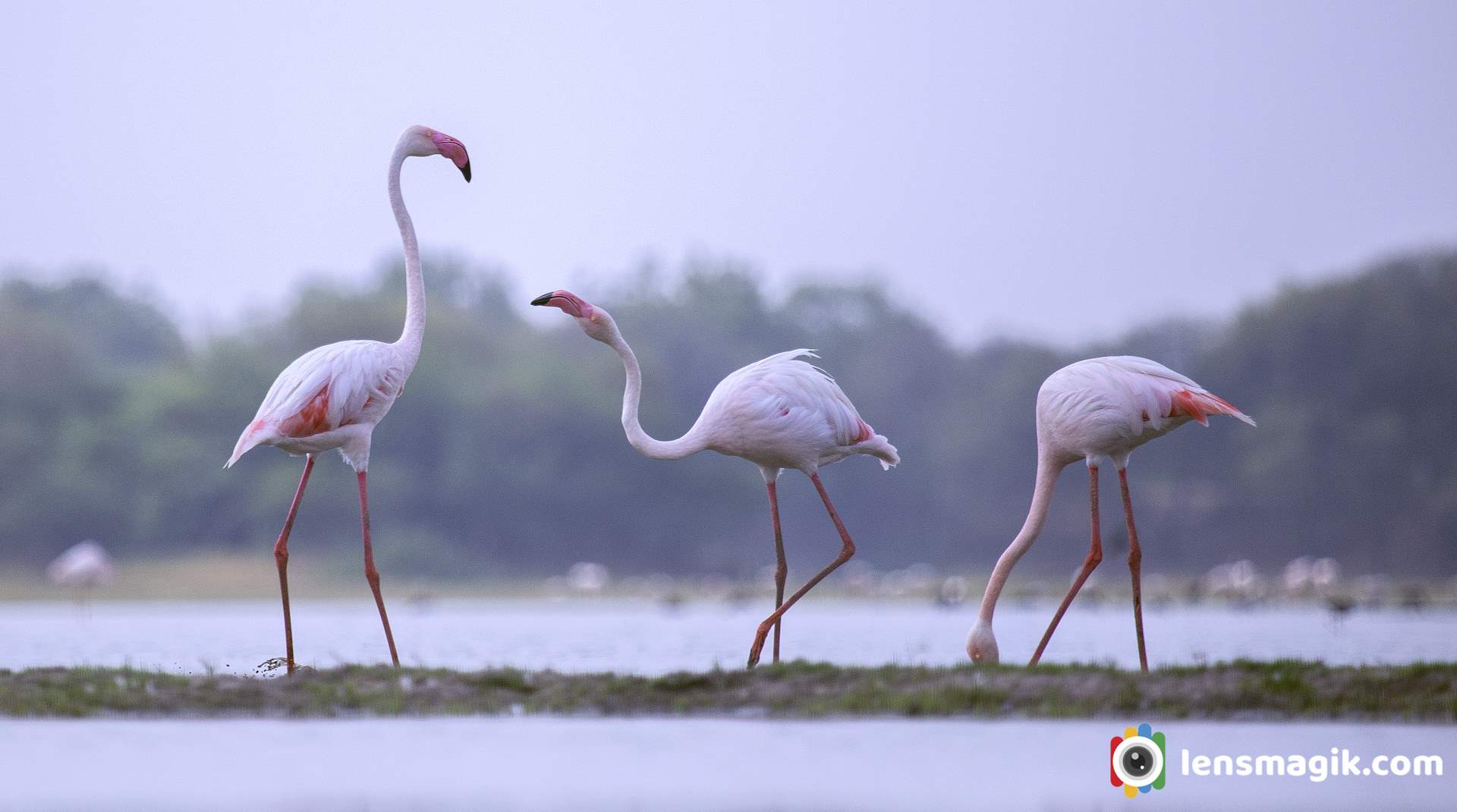
Some masti time for two flamingo birds .
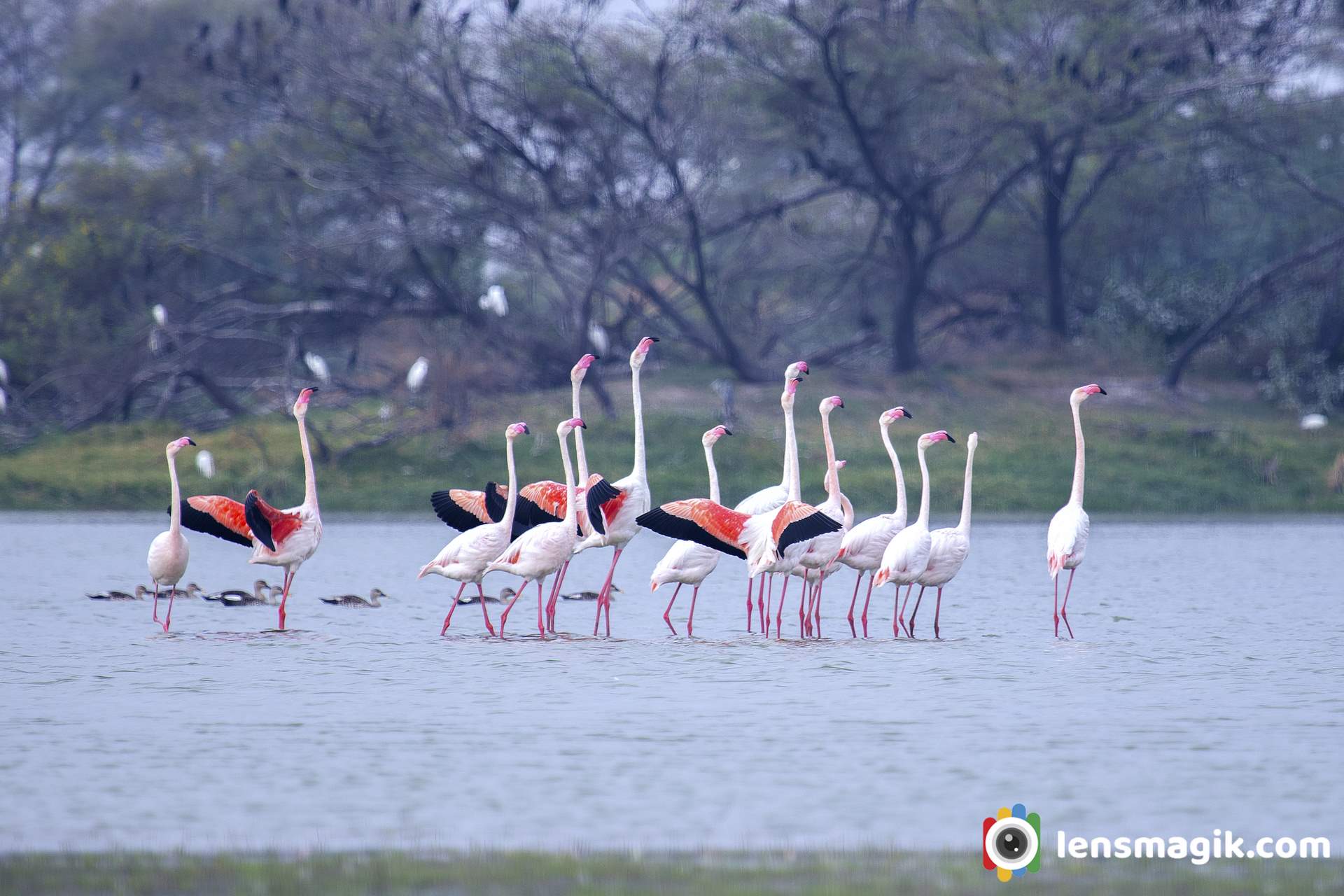
Above image shows the discipline of Flamingo Bird and looks like a morning pared they are doing .
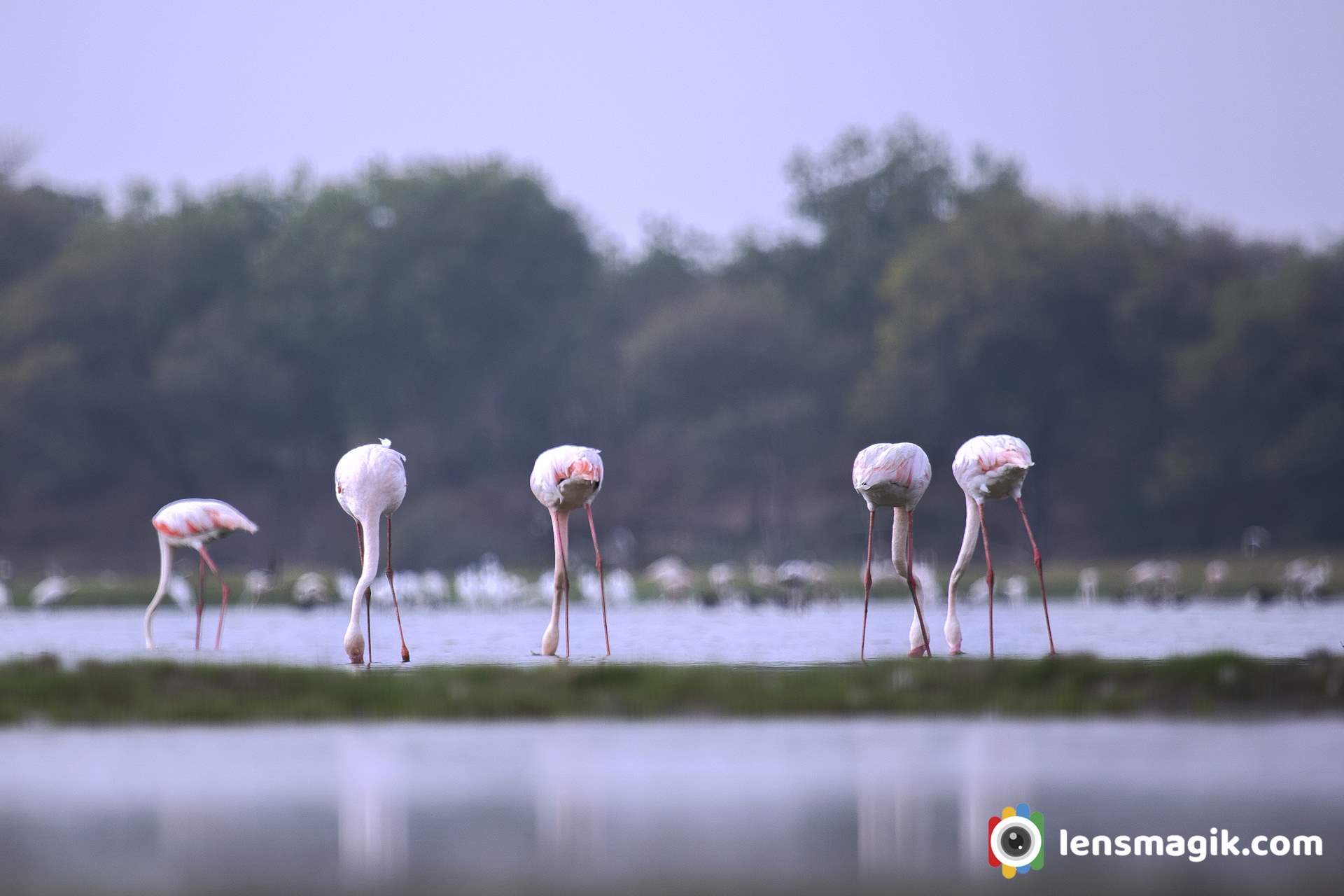
https://youtu.be/9dVBrR9NSOo
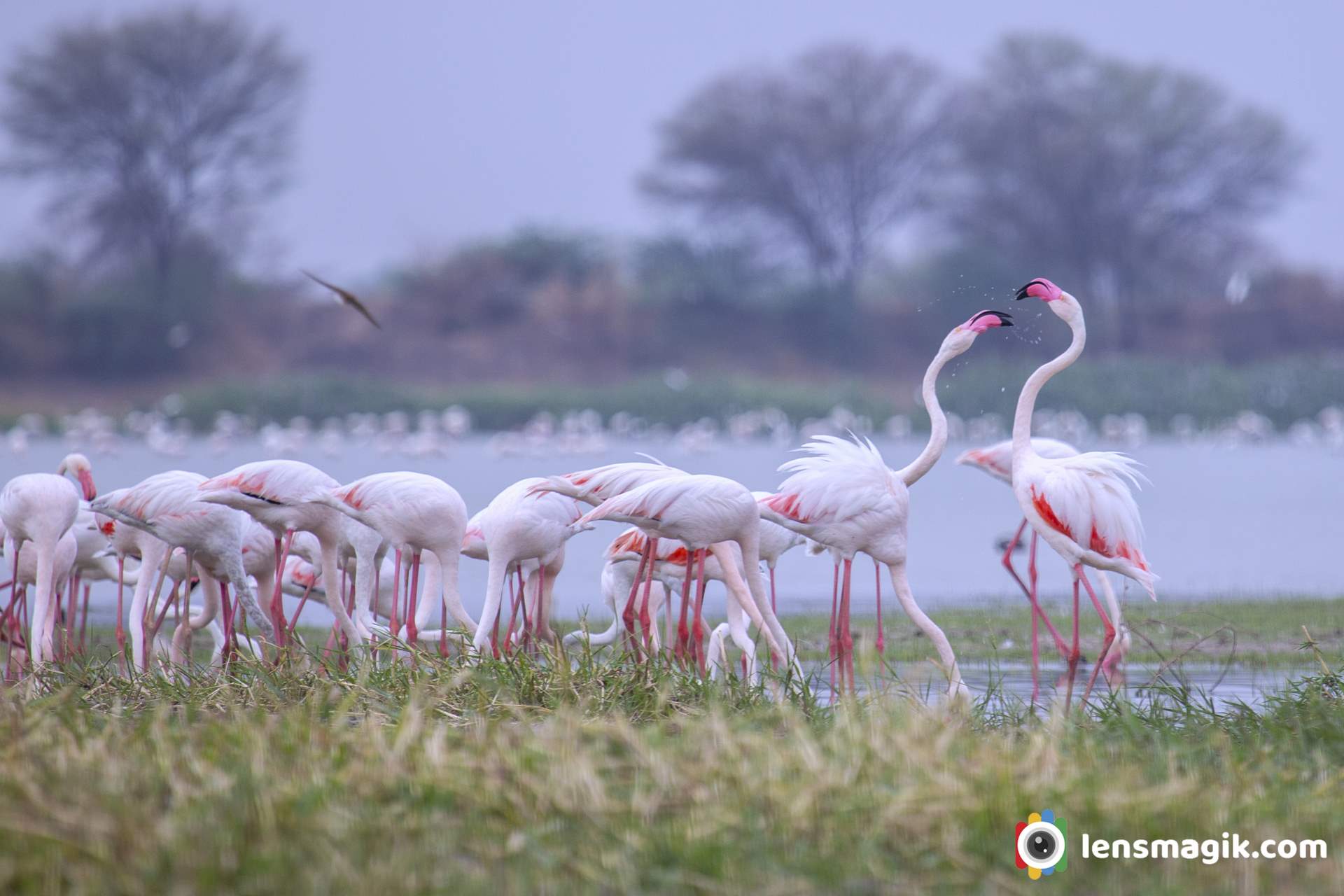
A group of Flamingo Birds at Thol Lake make your frame awesome.
Location : Thol Lake, Gujarat
Thol lake is just 25 km approx. from Ahmedabad. You can visit one day for Thol lake is enough. Also you can find another migratory birds like pelicans , bar headed goose, river tern and many more resident spices.
Ahmedabad to Thol lake distance about 25km
Thol bird sanctuary is located in Kadi Taluka in Mehsana District near sanand Gujarat. It is an artificial lake located near village Thol. In 1912 thol lake was built and it was declared as a Sanctuary in 1988. The main use of lake is use of water for irrigation. The Thol Bird Sanctuary or a Thol lake wildlife Sanctuary India is a habitat of more than 150 spices of birds. Also it is famous for migratory birds Flamingos and Sarus Crane which breeds here.
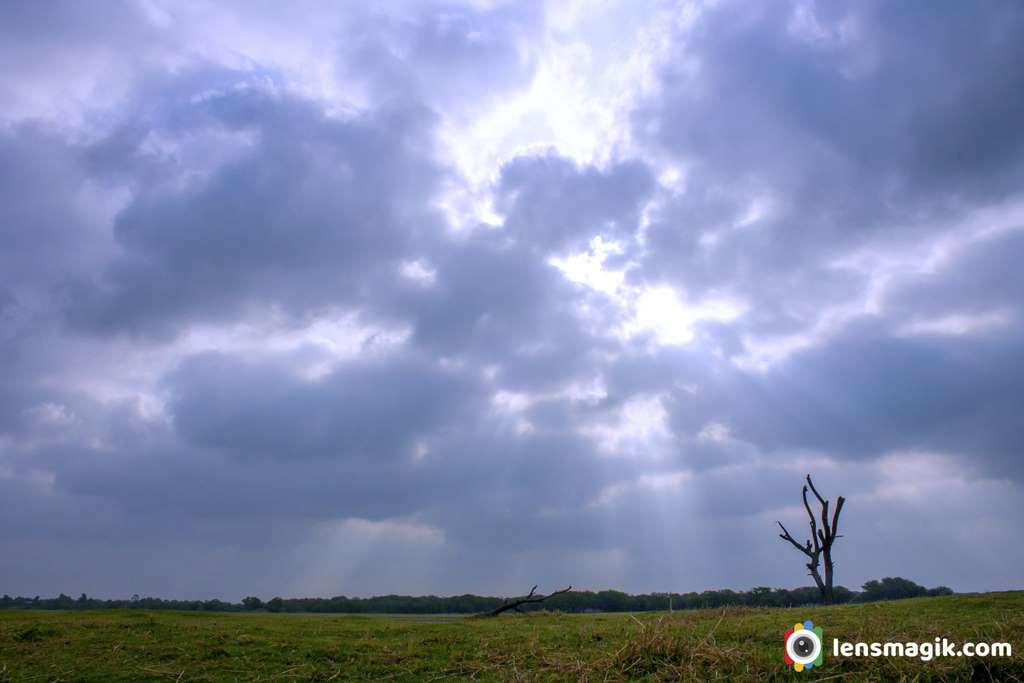
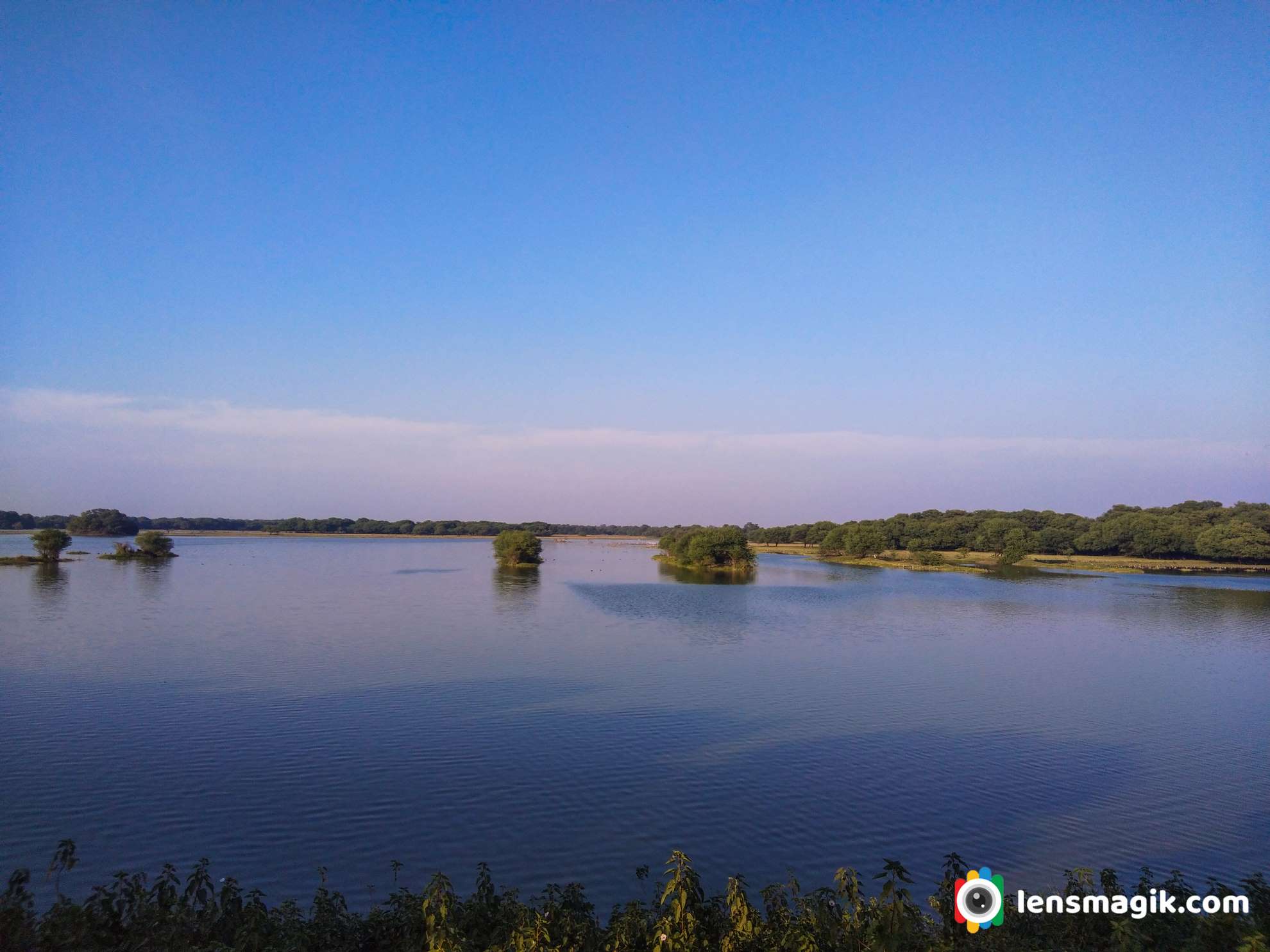
About Thol Lake / Thol Bird Sanctuary
Thol lake is located near Thol village and its area around 38000 acres. Lake faces all season winter , summer and monsoon. During winter temperature goes to 8 degree and in summer temperature goes to 43 degree. Thol lake is under control of Forest and Irrigation department of Gujarat. Thol lake water storage capacity is around 84 million cubic meters. Thol wildlife sanctuary is declared as Eco Sensitive Zone .
Flora and Fauna Thol Sanctuary :
Thol lake has many vegetation plants like Zizyphus, Acacia nilotica, Ficus, Capparis, Azadirachta indica etc. There are also some mix flora of Marshy and Aquatic plants reported in Thol Lake.
Thol lake is protected area and it is very good habitat for water birds. In thol bird sanctuary there are more than 150 spices of birds found . Among these more than 60 % of birds are water birds. Flamingo bird is most prominent bird of Thol Lake. Also Sarus Crane nest in large number here.
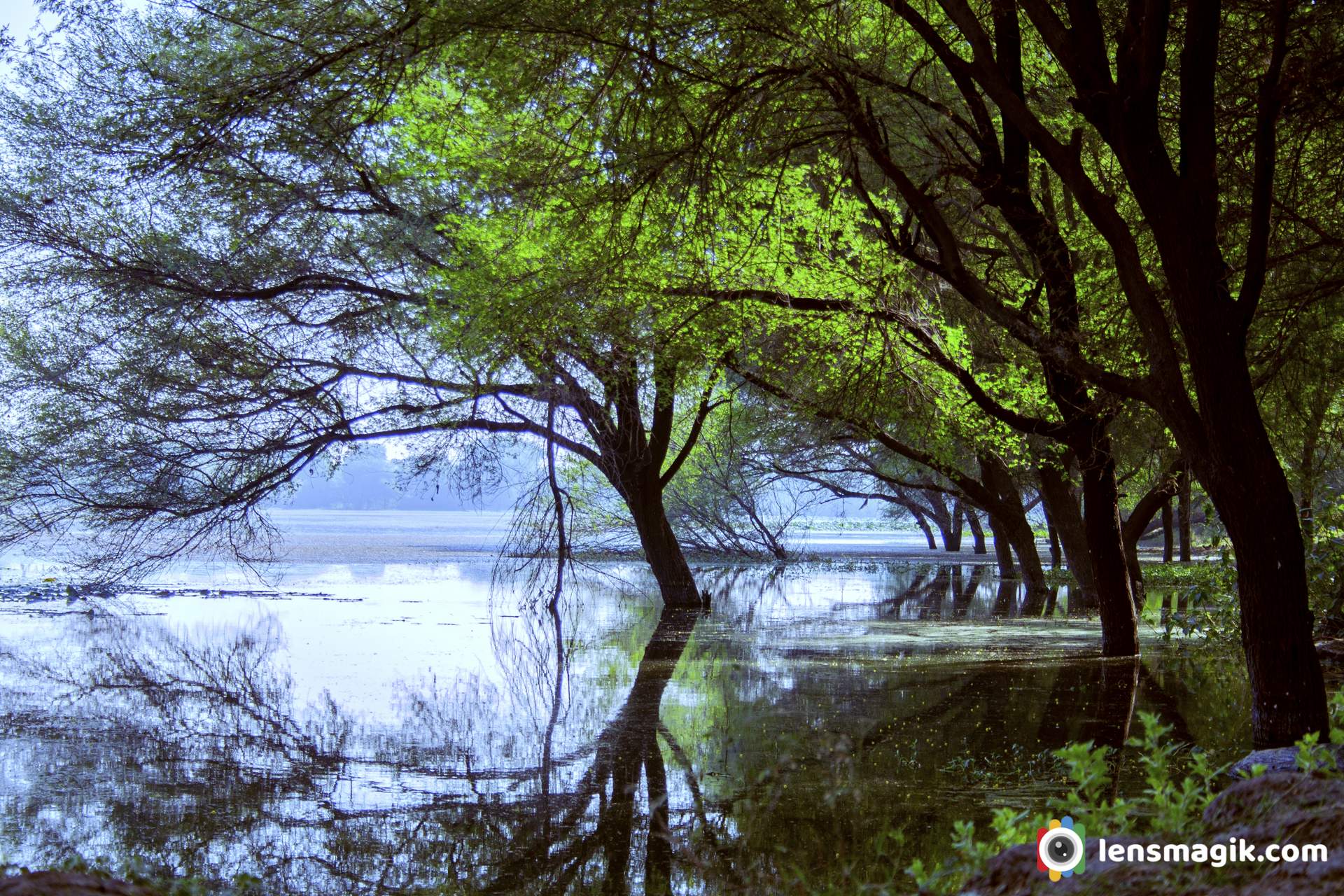
Famous Migratory Birds of Thol Lake
• Flamingos
• Sarus Crane
• Great White Pelican
• Mallards
• Bar Headed Geese , Grey Headed Geese
• Waterfowl
There are also some spices reported here like Dalmatian Pelican, Indian Skimmer, Greater Spotted Eagle, Indian Vulture and white rumped Vulture etc. In Mammals Bluebull, Blackbuck and Golden jackal reported here.
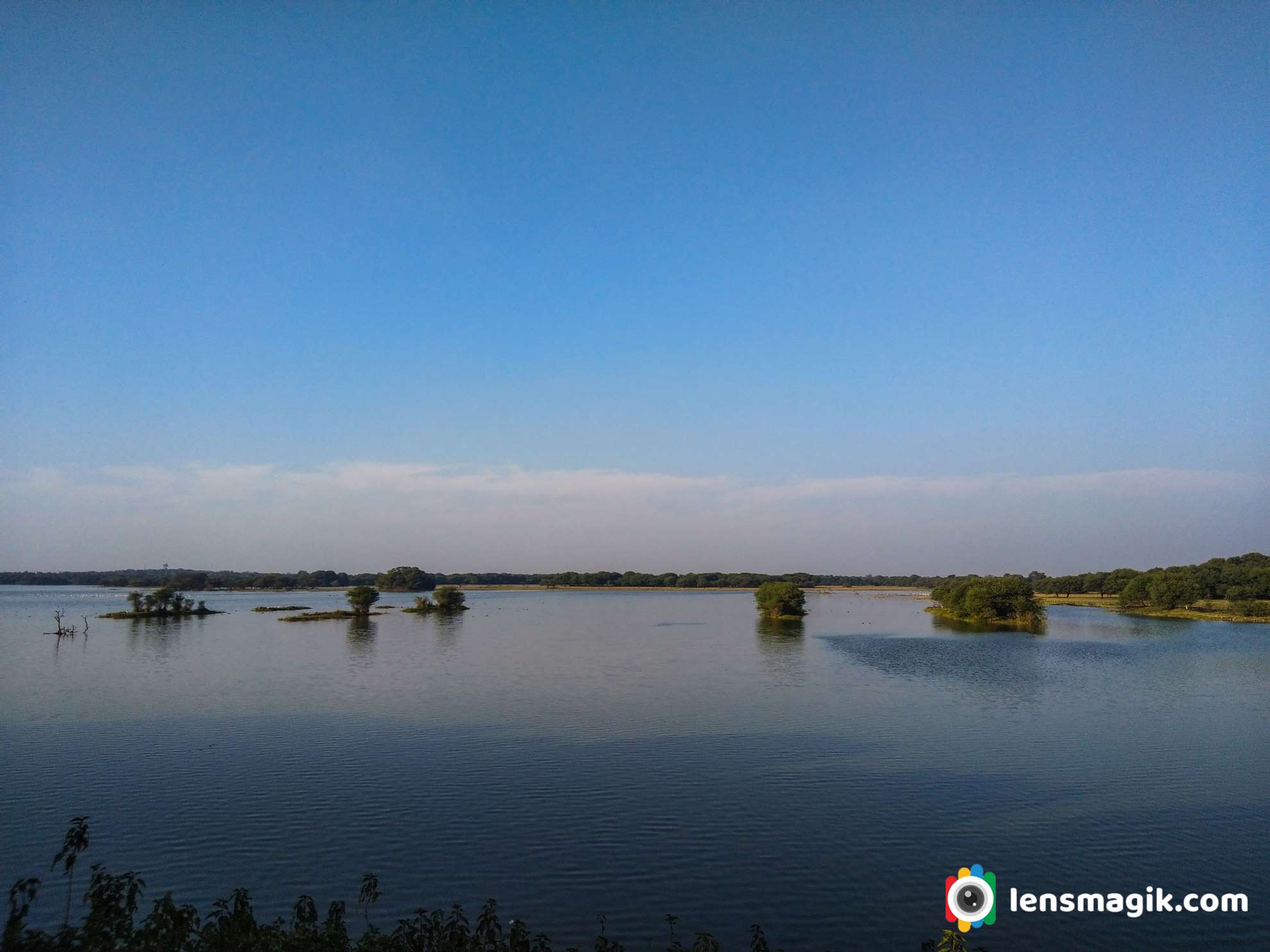
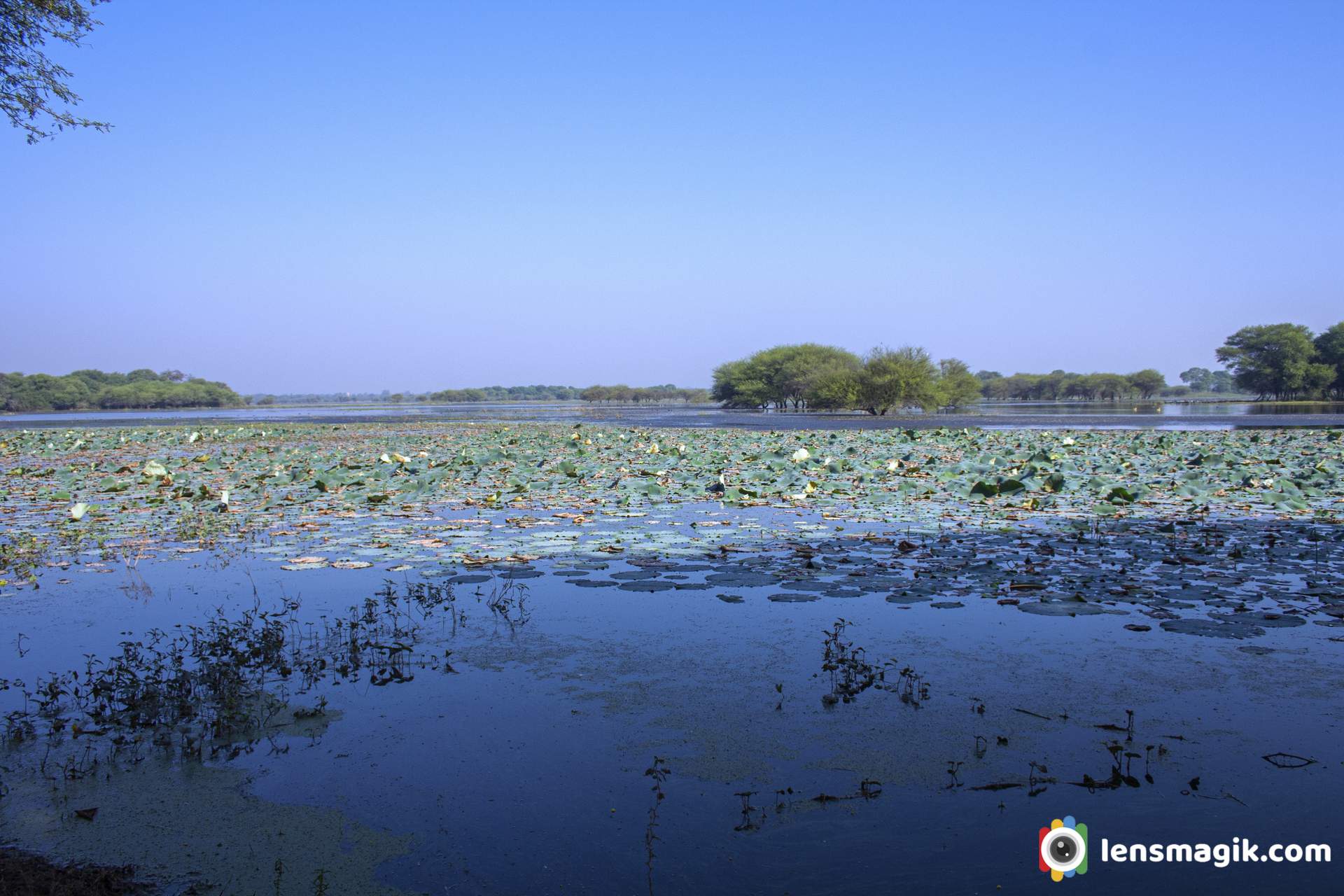
Thol Lake Timing and Fees :
Thol lake open everyday at 6 AM in morning and close at 5.30 PM in evening. Entry fees for Thol Lake or Thol sanctuary is 50 INR for per person. Also Camera fees extra at 200 INR and if you go via car then car fees also 500 INR. Foreigner fees are 10 $ per person.
Best Time to Visit Thol Sanctuary / Thol Lake :
Best time early morning for Thol Lake. In winter if you go before sunrise you can see Twilight sky amazing with lake shore and birds sound .During all season Thol lake has its own beauty. Every season you can visit at Thol Lake. But mostly during winter from November to March season is best for Thol Sanctuary visit. Because during winter lots of Migratory birds came here and stay for long time so for birding winter season is best at Thol Lake. Also during summer some of birds stays here like flamingos and pelicans, geese etc. So you can also see them in summer too. Also during summer water level of lake is low so may be the birds you can get in deep or sometimes closer. During monsoon most people don’t visit but if you like macro photography then you must visit Thol lake in monsoon. You can get some excellent macro subjects like waterdrops , Spiders, Insects etc.
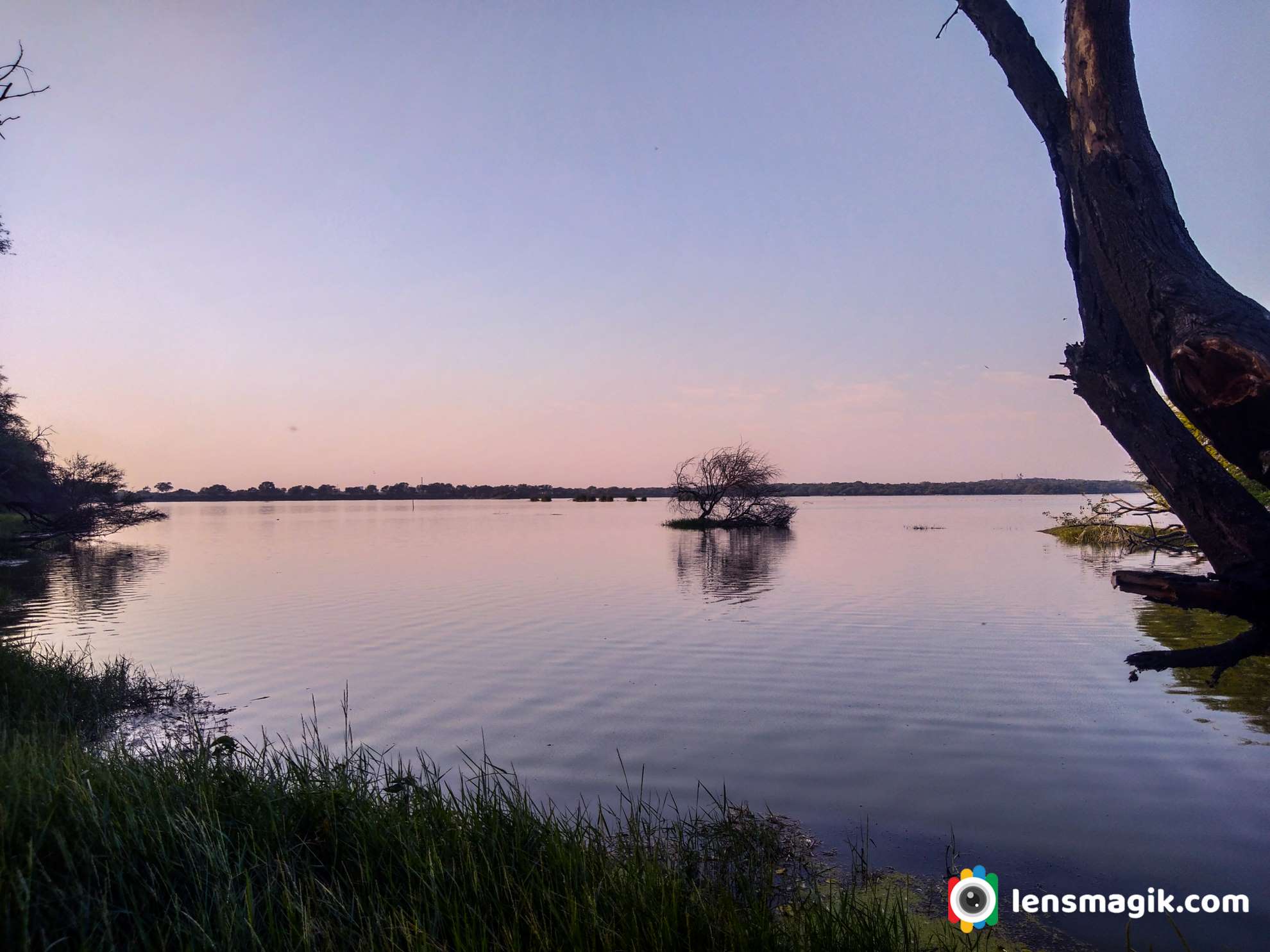
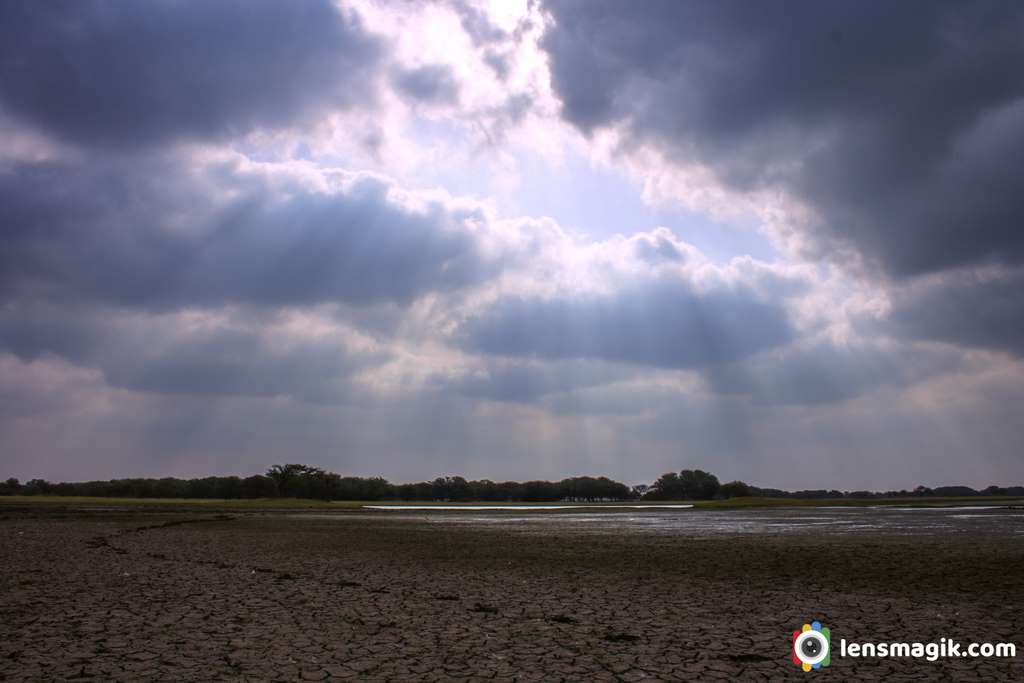
What to do and What not to do in Thol Lake / Keep in mind while visiting sanctuary in India :
• Keep silence in sanctuary
• Maintain discipline
• Keep sanctuary clean
• Do not throw plastic waste anywhere in sanctuary
• Protect wildlife
• Observe birds, mammals etc and protect them and identify them
• Follow rules of wildlife protection act -1972
• Don’t disturb birds and animals
• Don’t enter in sanctuary with liquor and inflammable objects
• Don’t make loud noice.
• Enter in sanctuary with permit only and keep receipt till you leave sanctuary
• Don’t feed birds and animals
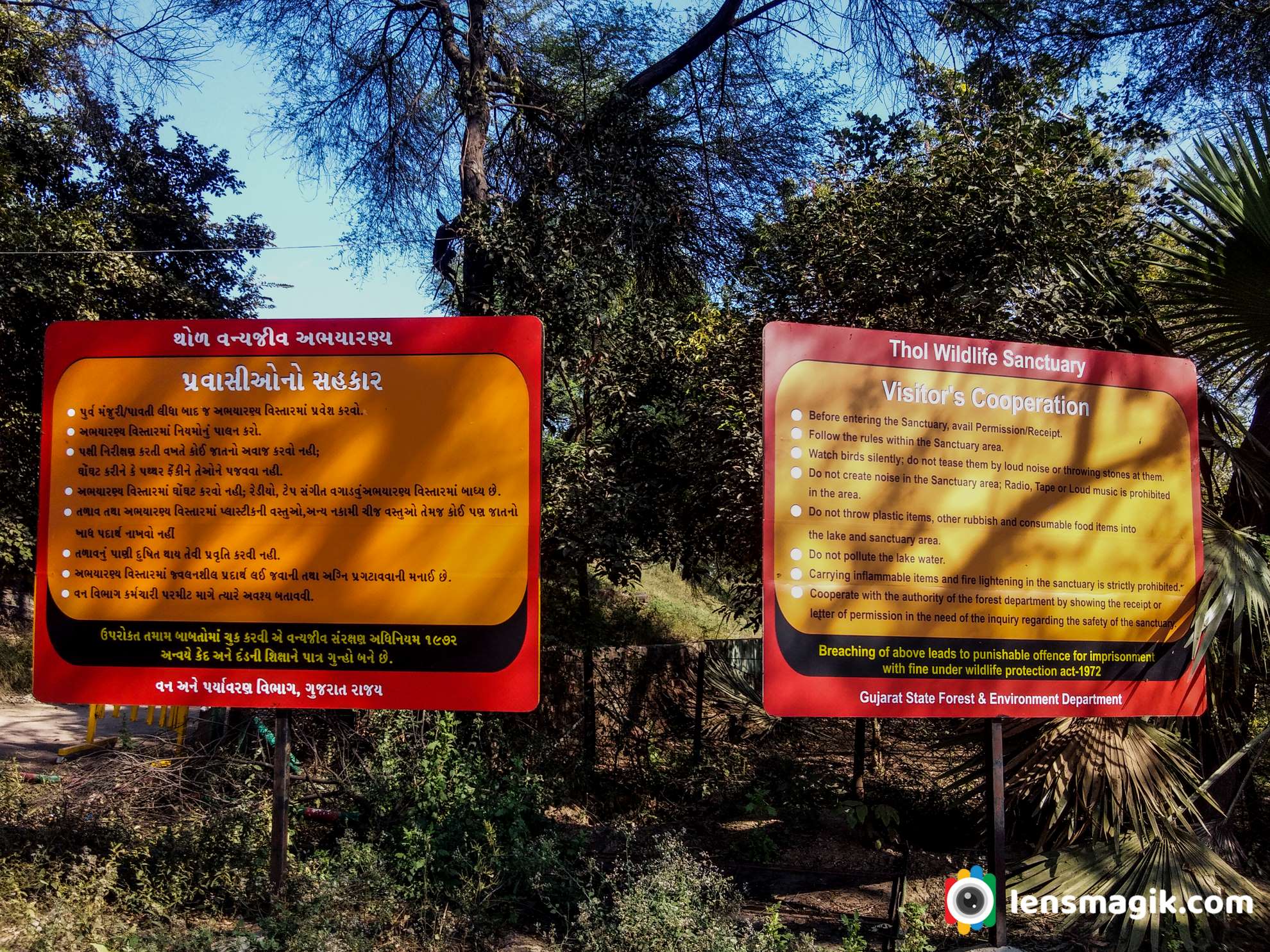
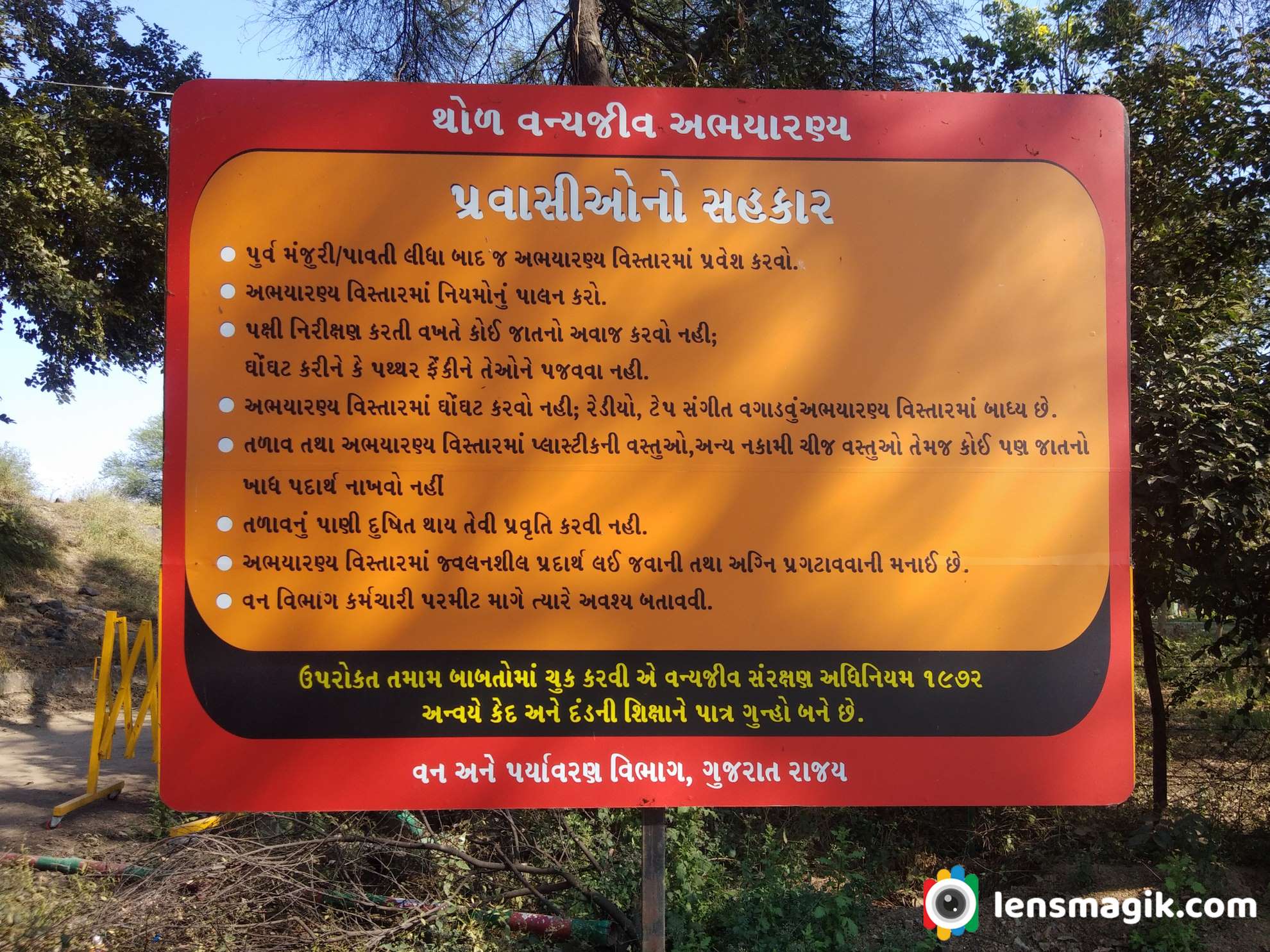
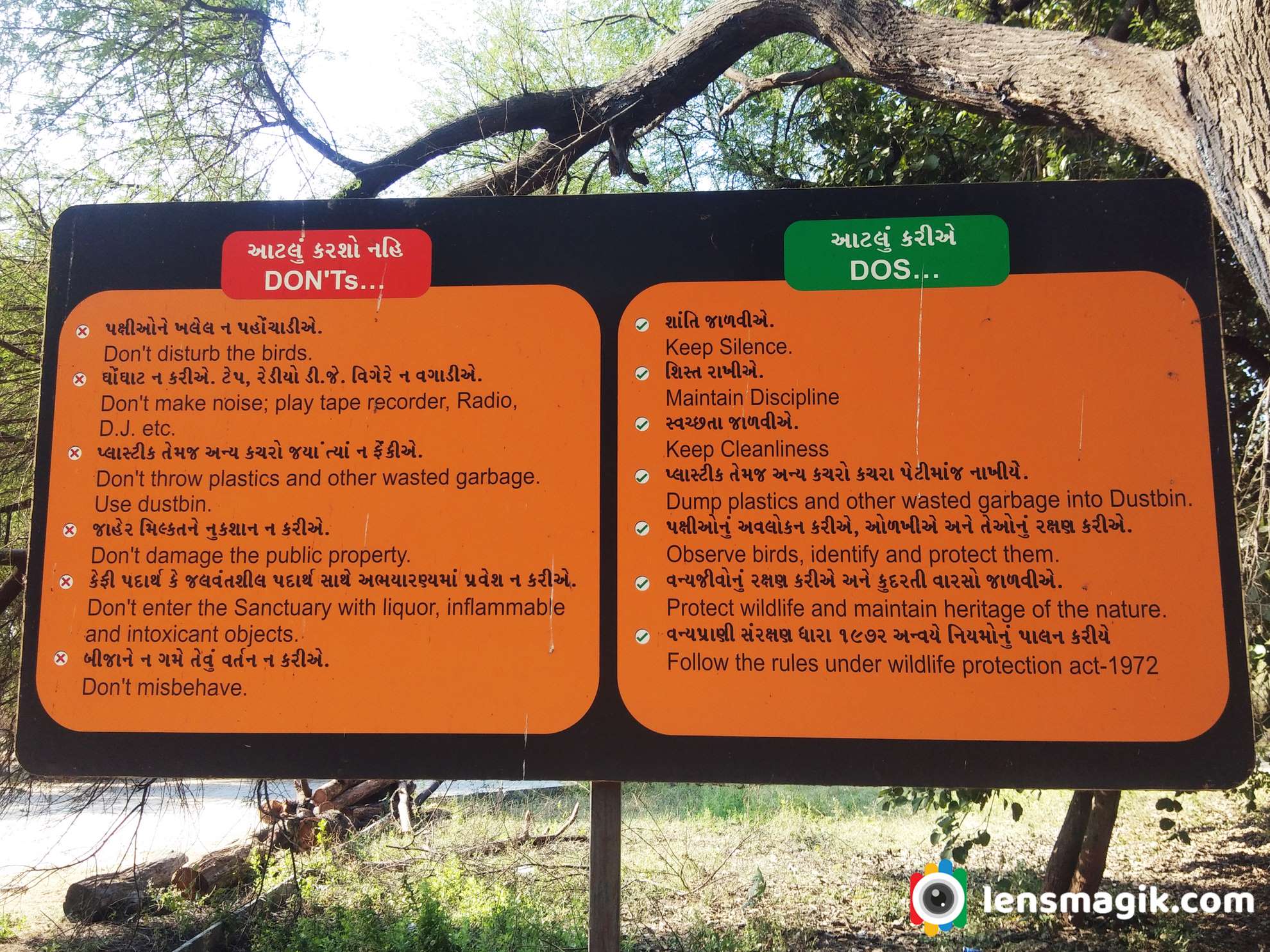
Where to Stay near Thol Lake :
Well near to Thol Lake there are not good places to stay at night but you can go near to destinations like Kadi, Kalol or Gandhinagar , Ahmedabad where you can get good places to stay at night. Nearest I suggest Kalol around 15-18 km or you can go Ahmedabad around 25 km.
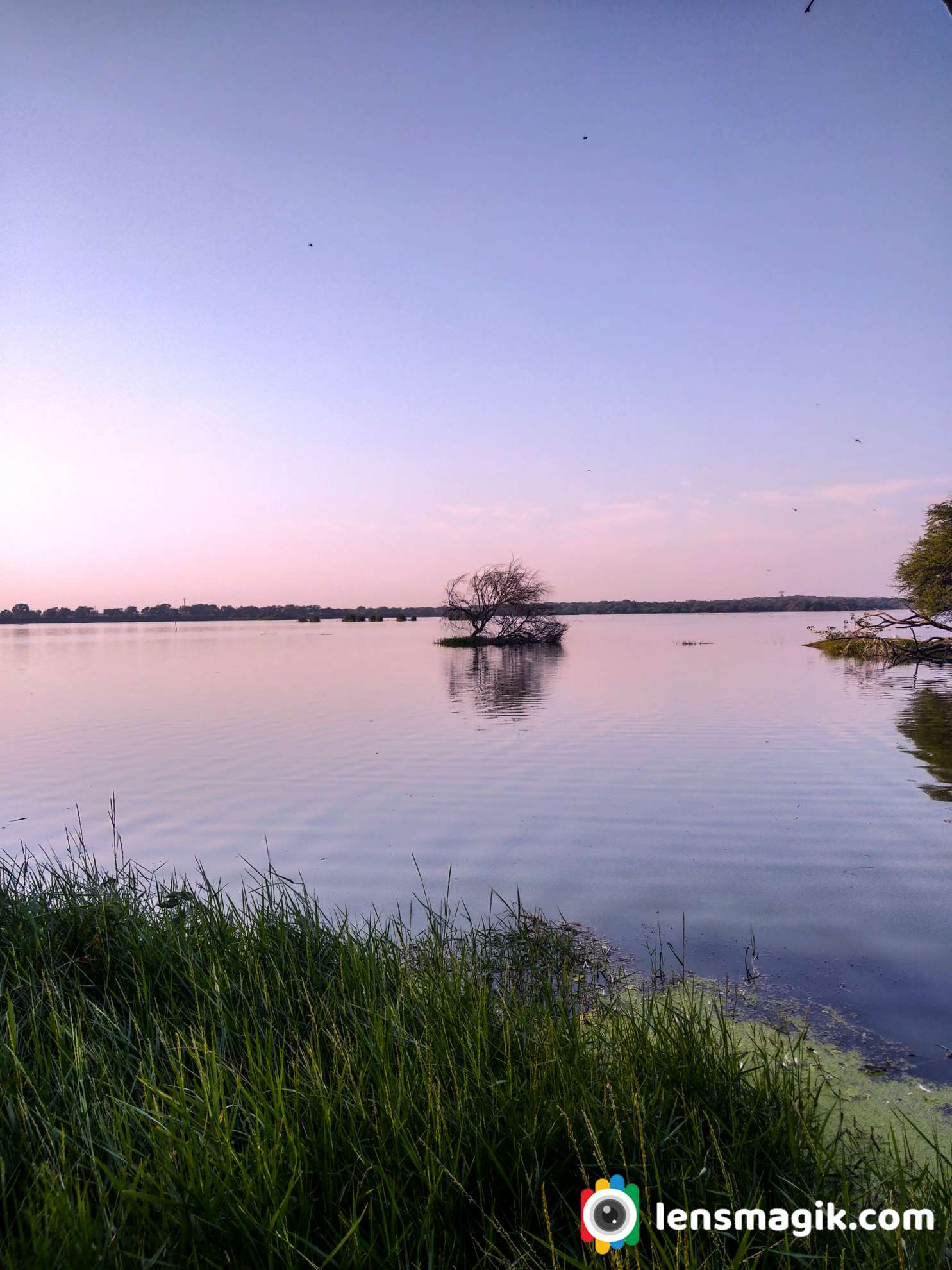

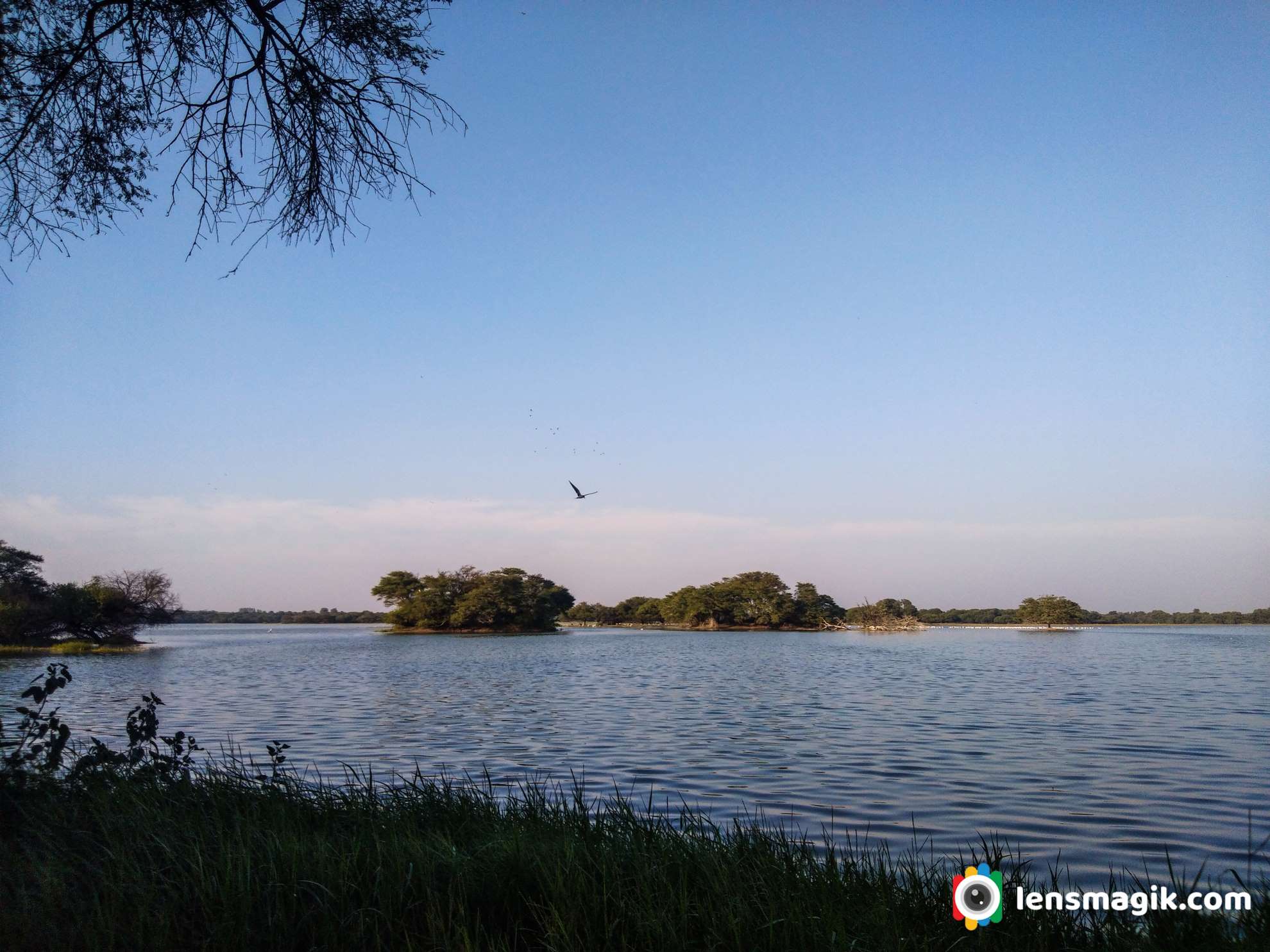


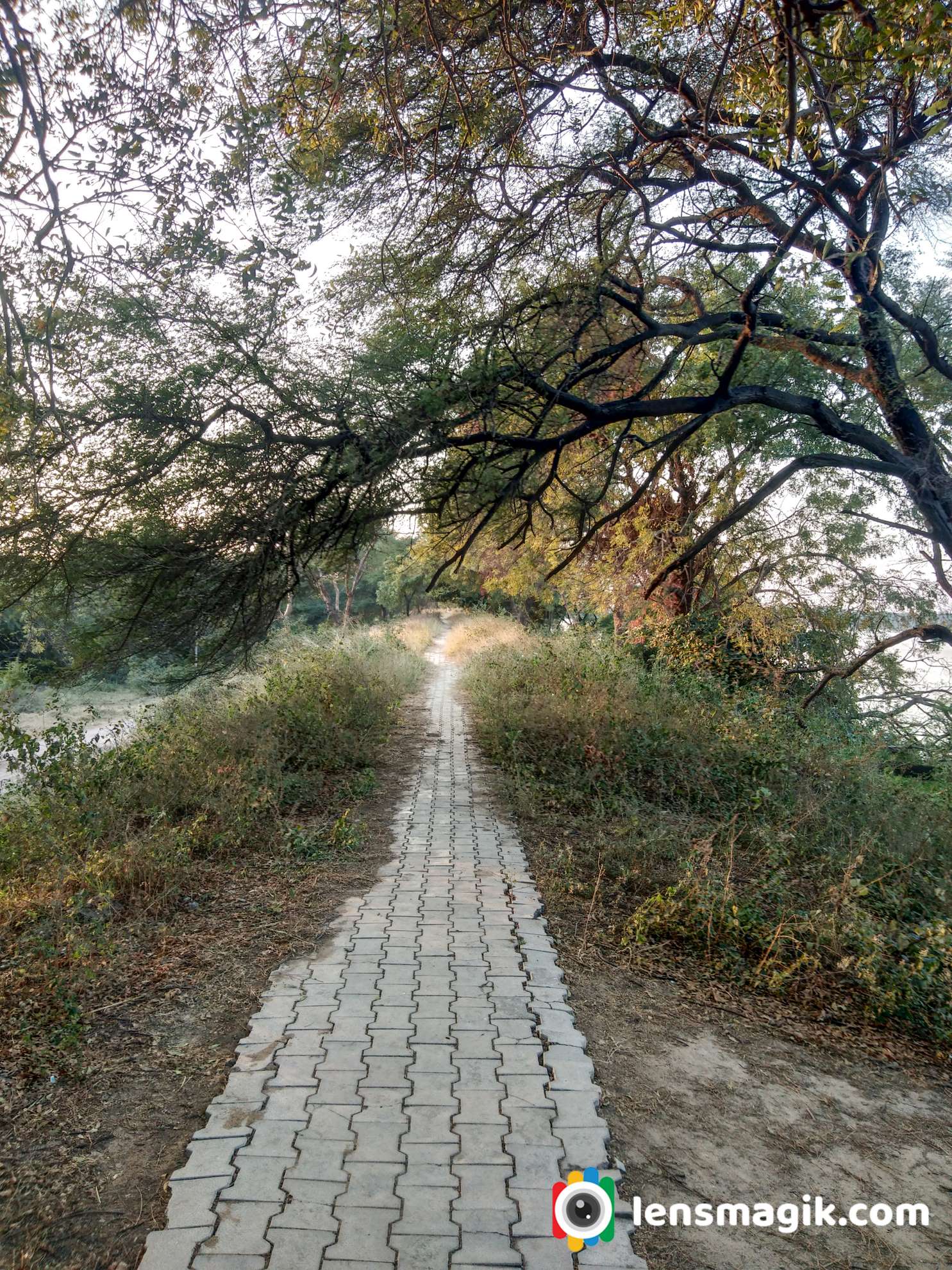
Places to Visit near Thol Lake :
If you are staying at Ahmedabad then go for Ahmedabad Darshan , Pol area of Ahmedabad and Adalaj Ni Vav ( Heritage places ) etc. Also go for fast food test at night at Manek Chauk and SindhuBhavan road there are lots of option for food lovers like Urban Chauk, Freezbee etc.
If you stay at Gandhinagar then visit Mahatma Mandir at Gandhinagar, Sarita udyan , Akshardham Temple etc.
I would suggest Modhera Sun Temple if you had some more time which is around 100km from Ahmedabad. For bird lovers and bird photographer I would suggest visit Little ran of Kutch (LRK) during Winter season, Pariej Lake, Indroda park Gandhinagar, Jessore Sanctuary Banaskantha etc.
How to Reach Thol Sanctuary :
Nearest airport is Ahmedabad and from Ahmedabad thol lake distance is around 30-40 km
Also for Railway station is Ahmedabad because you can get all frequency and destinations from Ahmedabad railway station.
Mt Kanchenjunga or Mt Kangchenjunga both spellings right and whatever you say located in west Bengal India. When i was on my Singalila National park trek i visit it. It was really gesture to see Mt Kanchenjunga from own eyes. A beautiful Mountain surrounded by snow and little bit clouds looks like you are in Heaven. The view i capture makes me very happy to see first time snow mountain in my life. When i was at my last location of my trek at Sandakphu we go for birding and v had a clear mountain view of Kanchenjunga. Kanchenjunga is also spelled Kangchenjunga. Height of Mt. Kanchenjunga/Kangchenjunga is 8586 m . The view of Mt Kanchenjunga from India is amazing as you can see in photos. This Mountain range in wide angle as shown above image looks like Sleeping Budda so this mountain range also known as Sleeping Buddha Mountain Range too.
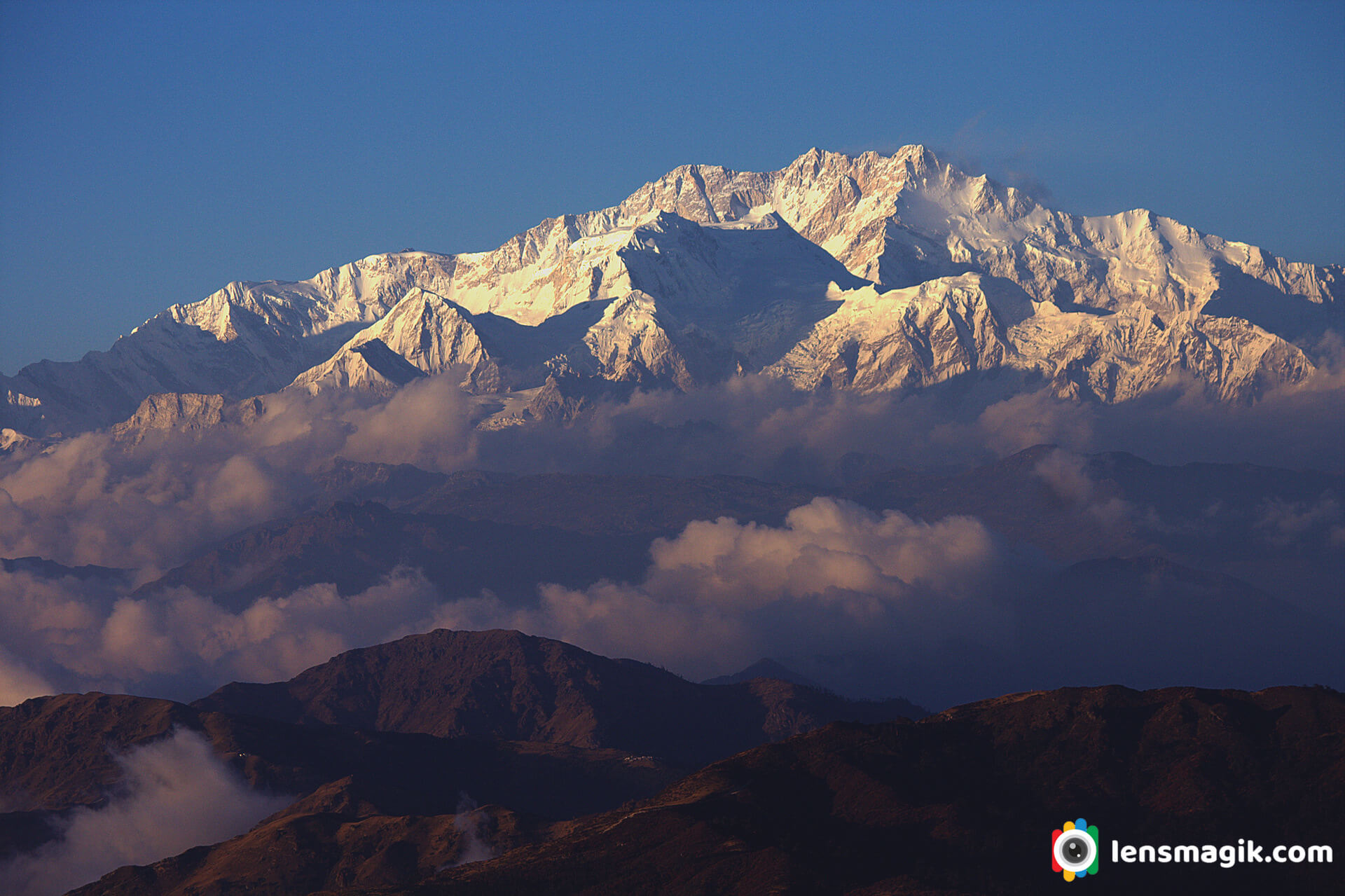
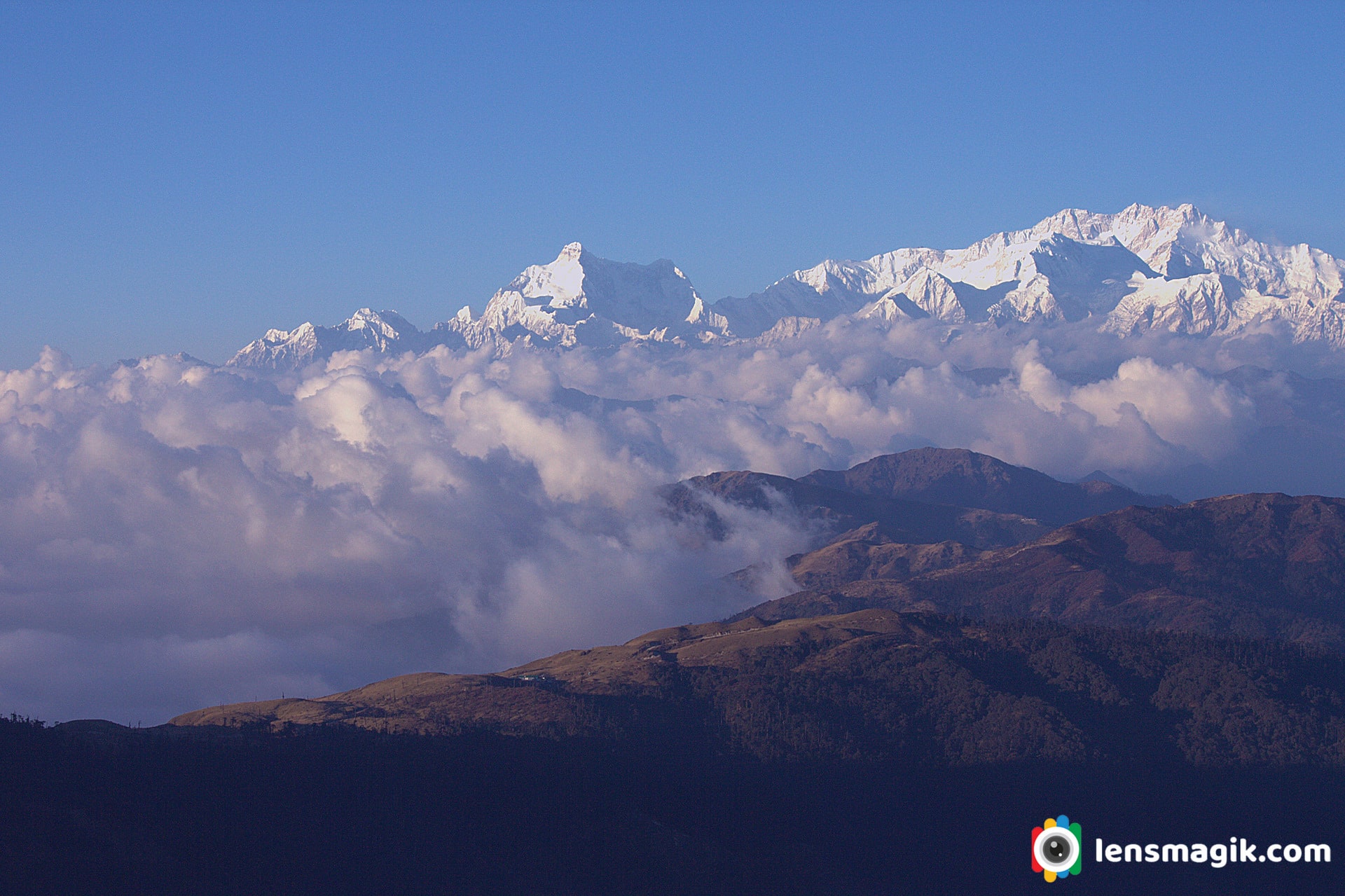
The name Kanchenjunga is derived from sanskrit kanchana ganga . Kanchana means gold and ganga is the river which flows in the region. The river shines like gold and hence the name Kanchana Ganga was given to this mountain.
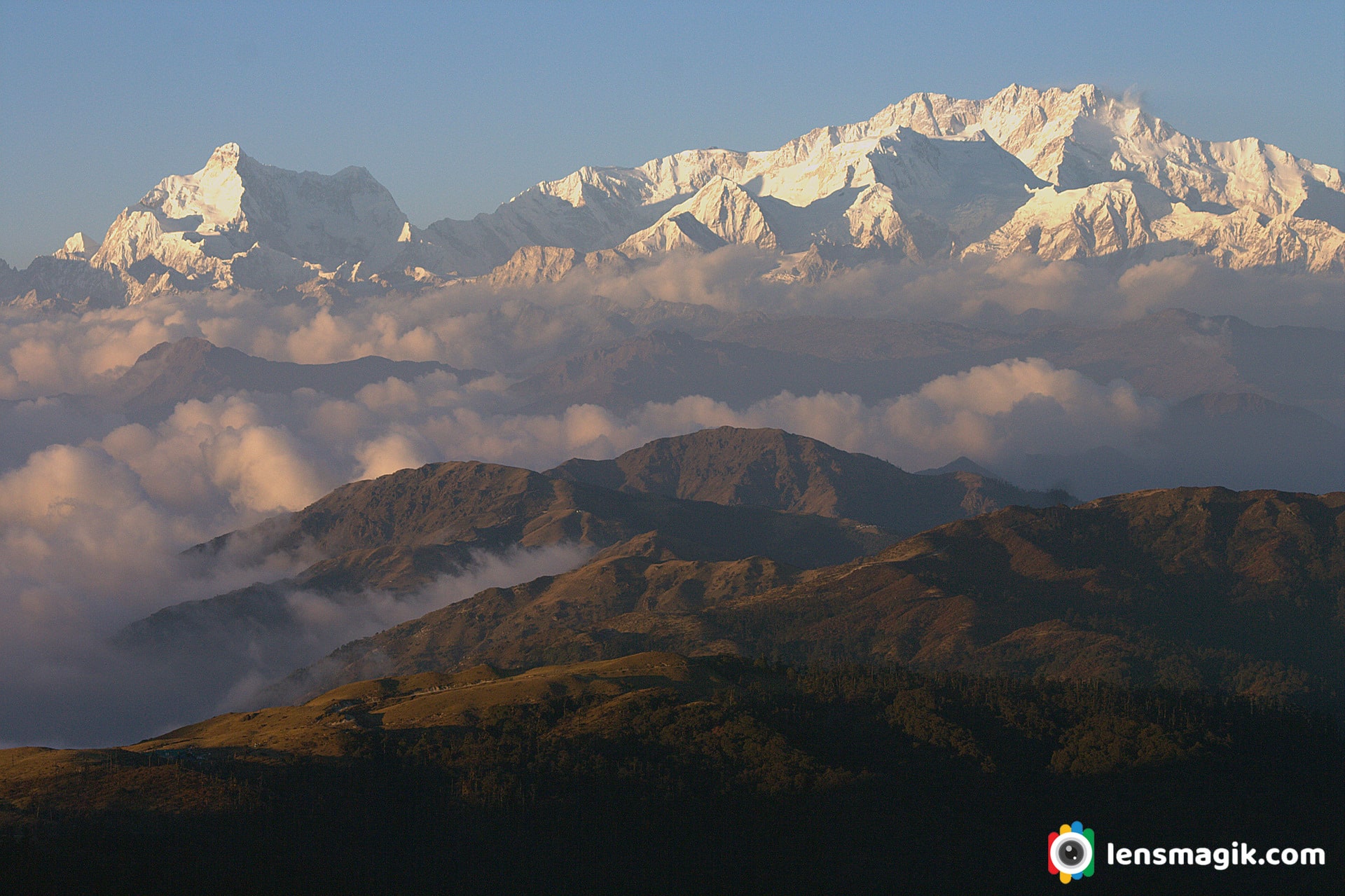
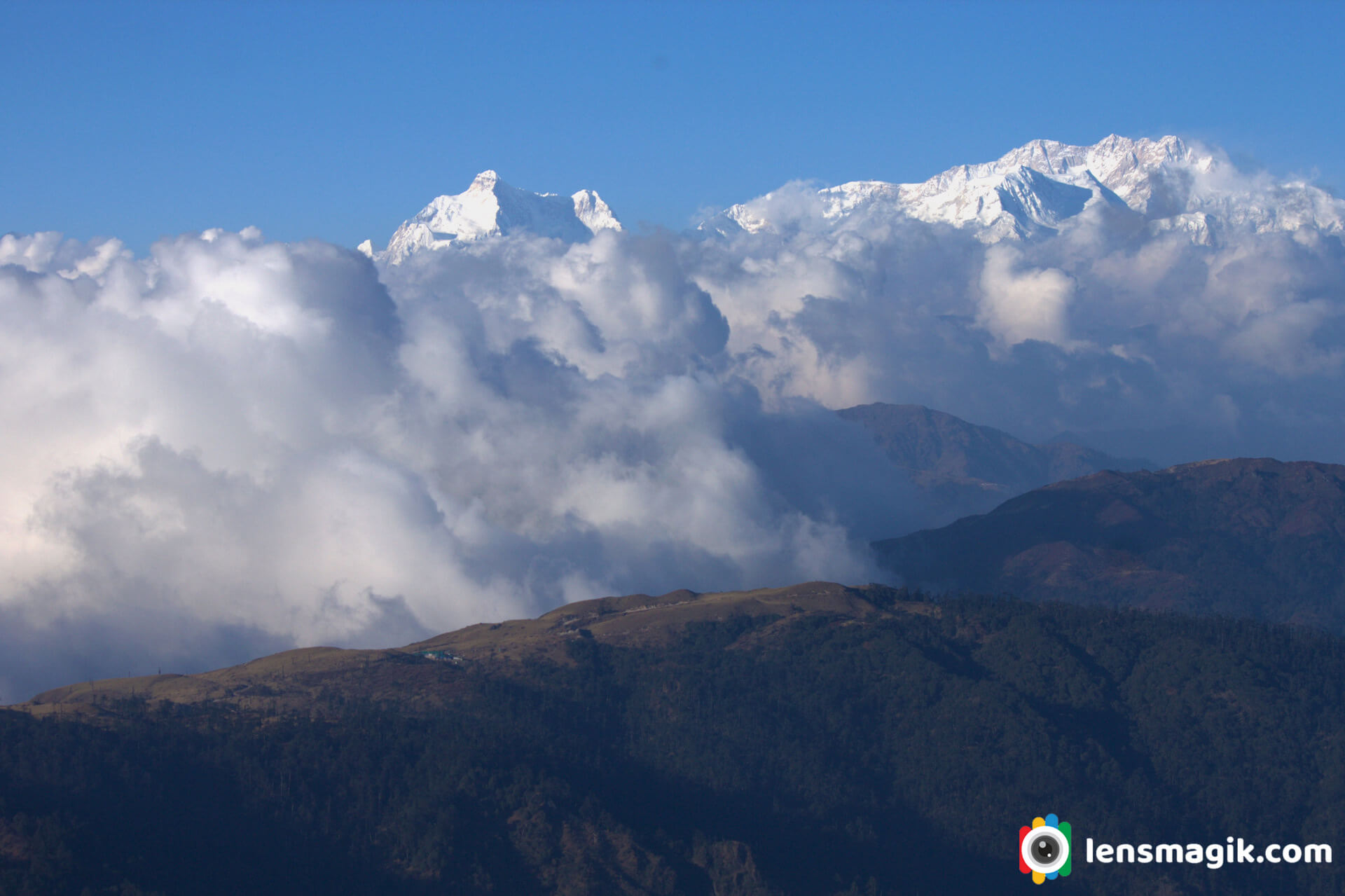
Things to know About Mt. Kanchenjunga/ Mt. Kangchenjunga :
- Kanchenjunga Mountain is about 28,169 ft height and located along the Nepal-India border in the Himalayas.
- It is the third highest mountain in the world.
- It contains 5 peaks and four of them above 27,700 ft of heights.
- Kanchenjunga is also name of surrounding section of Himalayas and means THE FIVE TREASURES OF SNOWS .
- Joe Brown and George Band was the first climber of Kanchenjunga mountain on 25 may 1955.
- Kanchenjunga mountain boundry shared by Nepal, India, China and Bhutan.
- Total 5 peaks of Kanchenjunga are Kanchenjunga Main ( 28169 ft ), Kanchenjunga West ( 27904 ft ), Kanchenjunga Central ( 27828 ft ), Kanchenjunga South ( 27867 ft ), Kangbachen ( 25928 ft ).
- Kanchenjunga Main is the highest elevation of Brahmaputra River.
- There are four climbing route for Kanchenjunga among them 3 are from Nepal and one from Sikkim India.
- It is also known as Sleeping Buddha Mountain range.
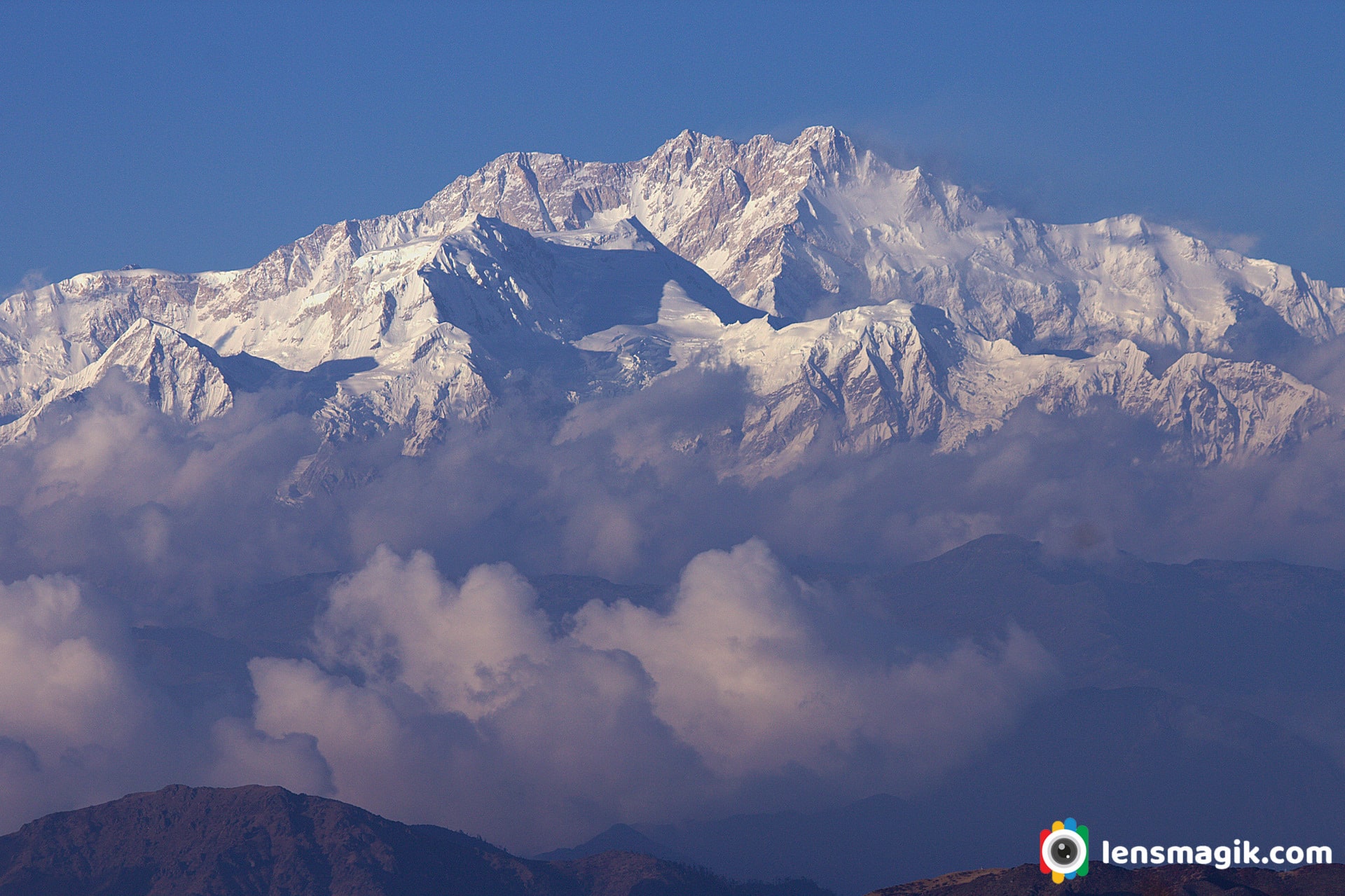
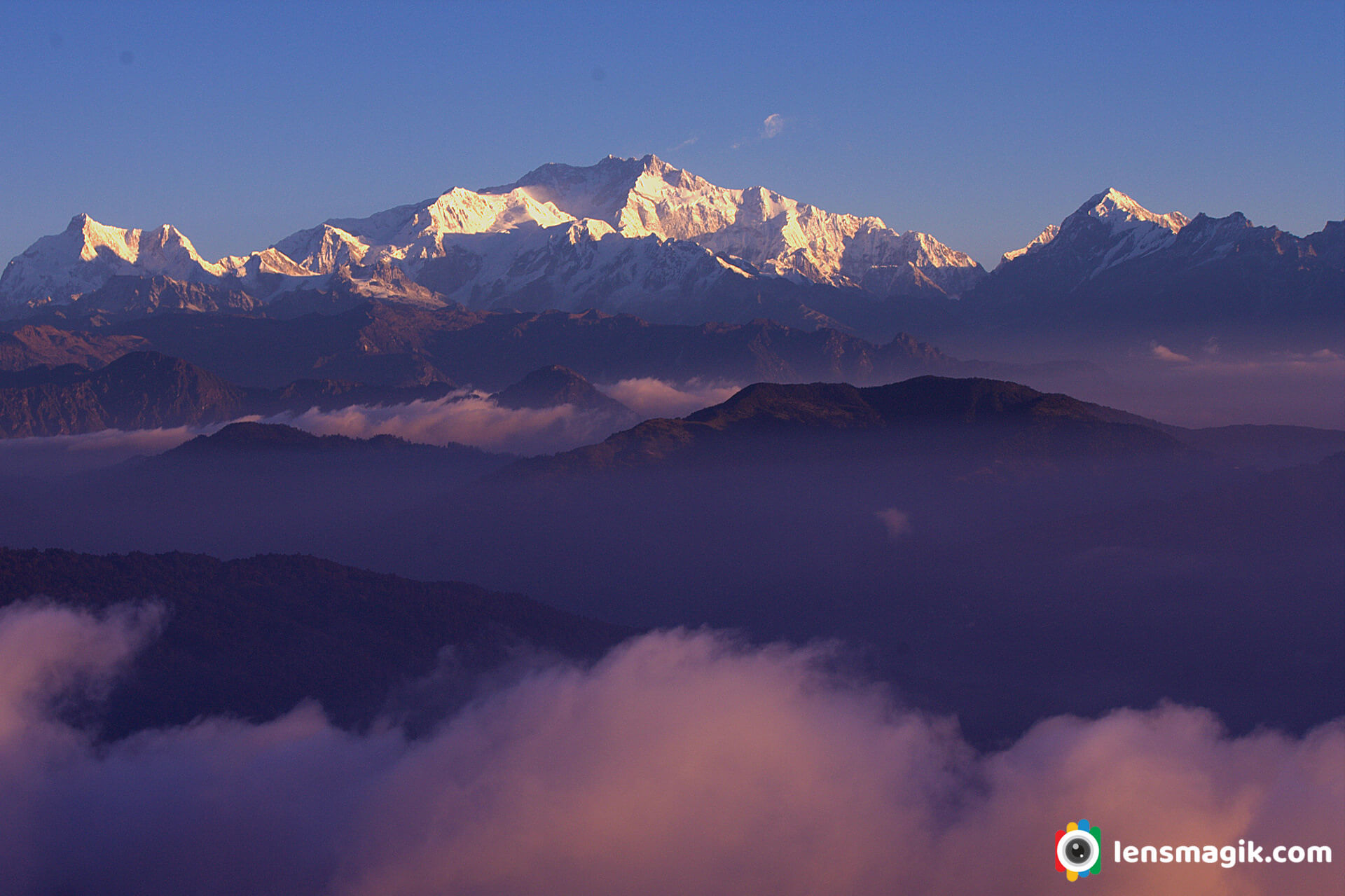
When i was on a tour to Singalila National Park we have a terrific view of Kanchenjunga mountains and also other Himalayan mountains. The best view of Kanchenjunga i saw from Sandakphu located at India-Nepal border. I also saw Mt. Everest from here. Everest is on a long distance but if weather is clear you can see it very clearly.
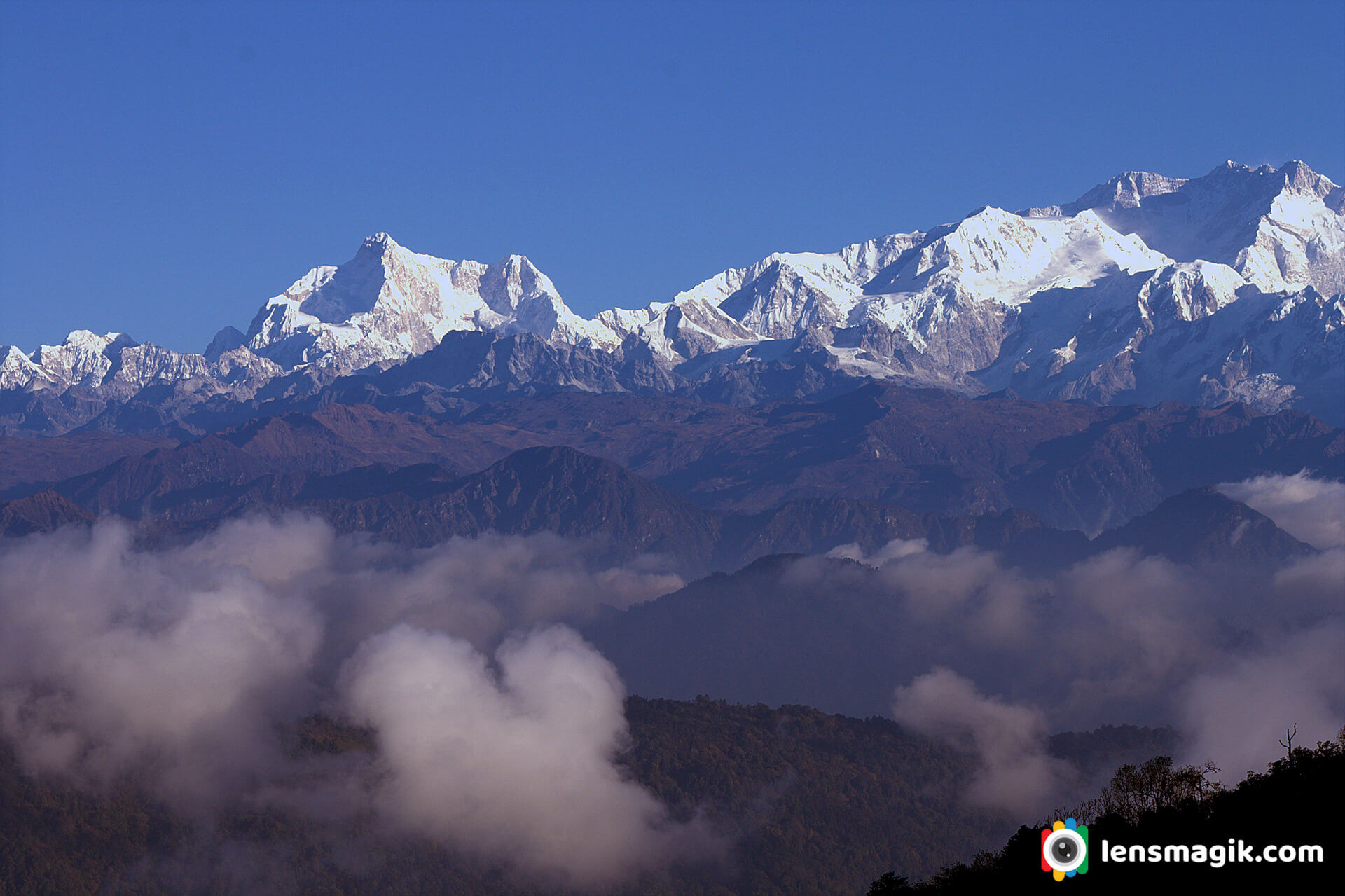
In above picture the mountain shows in left side ( Triangle 3 peaks ) of Mt Kanchenjunga is Kumbhakarna Mountain.
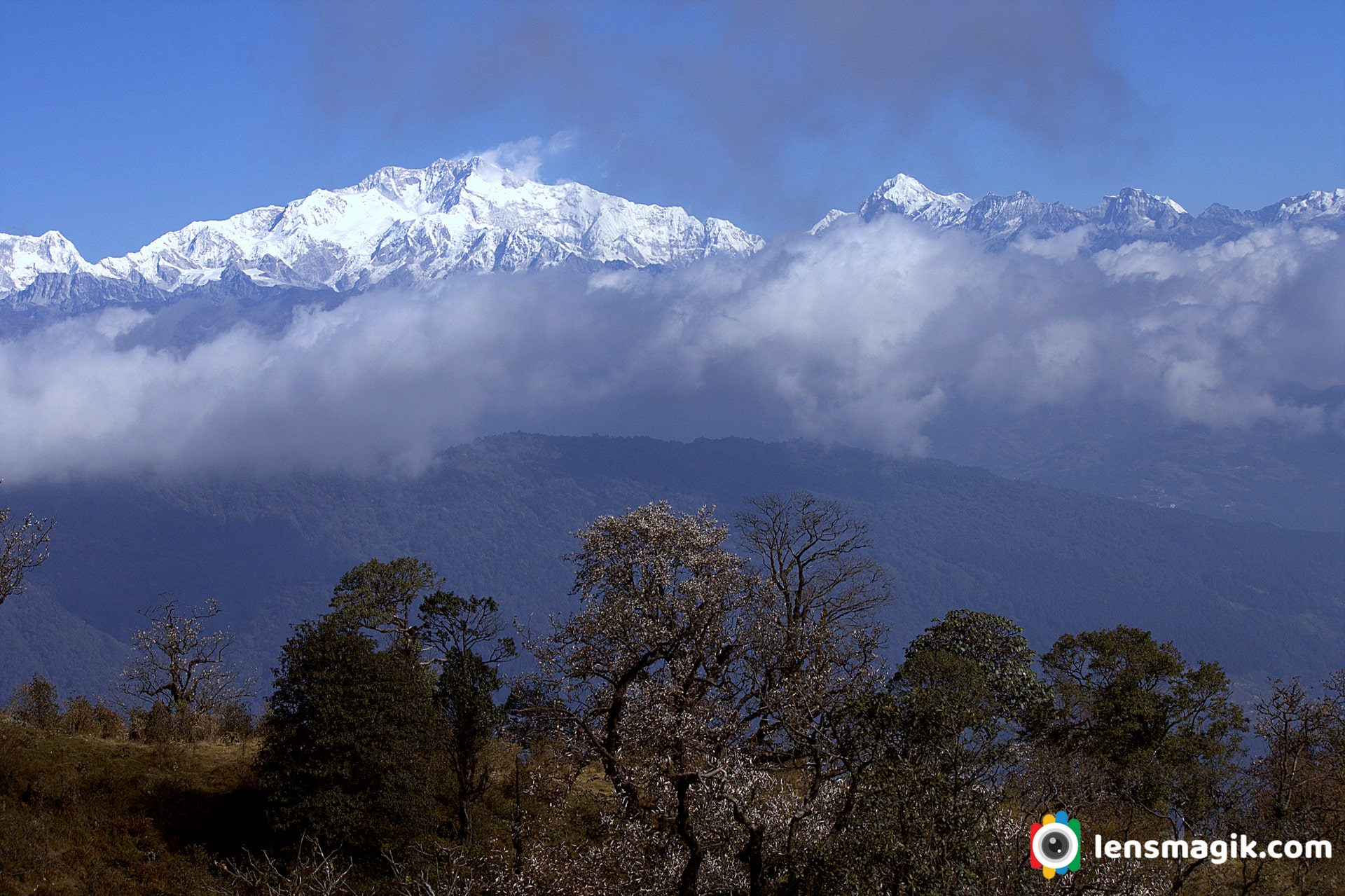
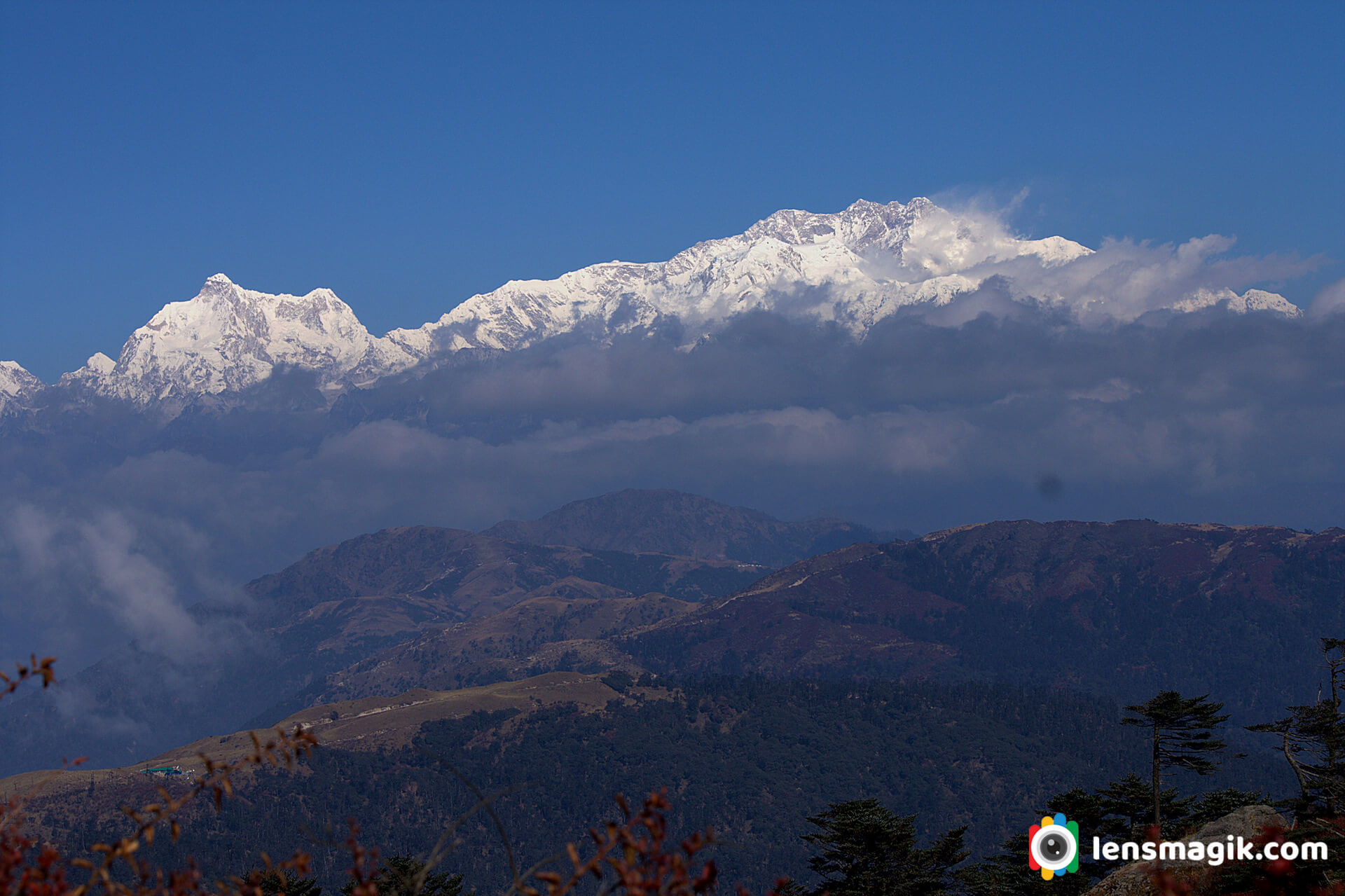
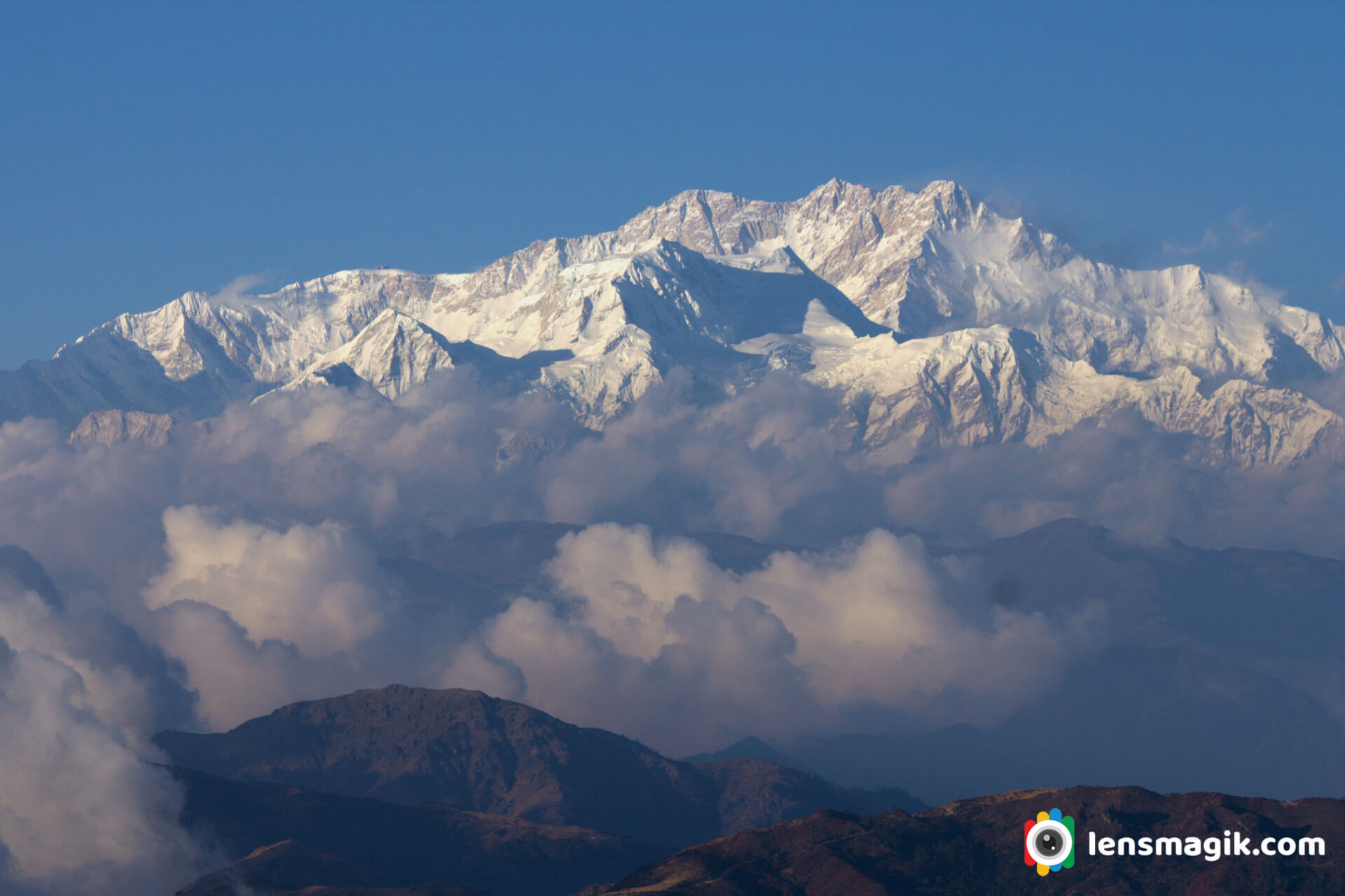
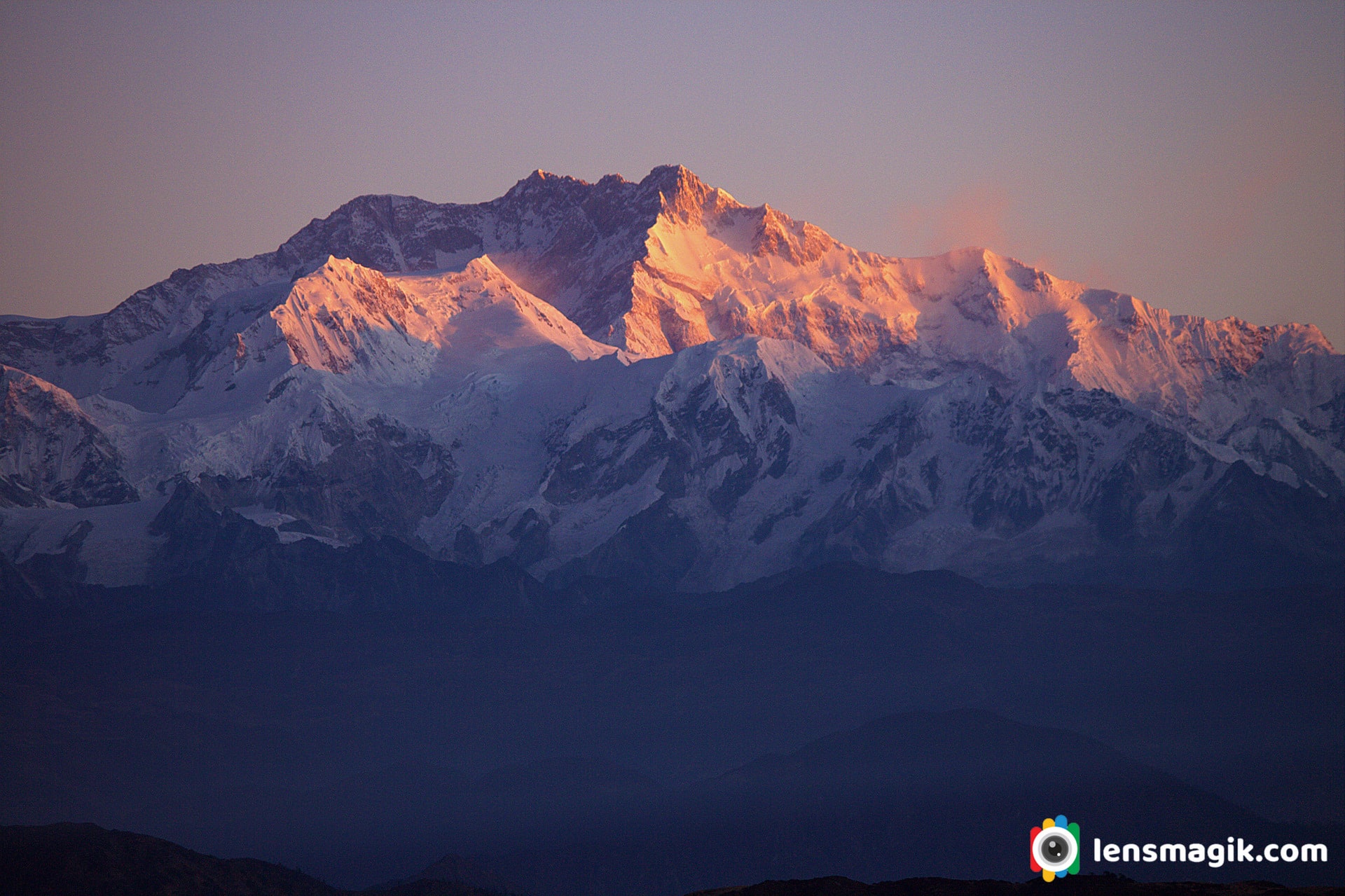
Sandakphu trek is one of the beautiful trek among India and also of Himalayas. During summer lots of trekkers go for these trek and also Phalut trek. At Sandakphu you can stay a night and just see at night the sky is full of stars. I was never seen such stars in my life. A milky way you can see and it was amazing experience of star gazing at Sandakphu. Also after dark a sunrise is beautiful as enough. At 4 or 4:30 am sunrise time and we were ready to see first light of sun rays on Himalayan mountains. The color of rays are red orange color looks beautiful on snow mountain of Kanchenjunga. Thats the beauty of Himalayas.
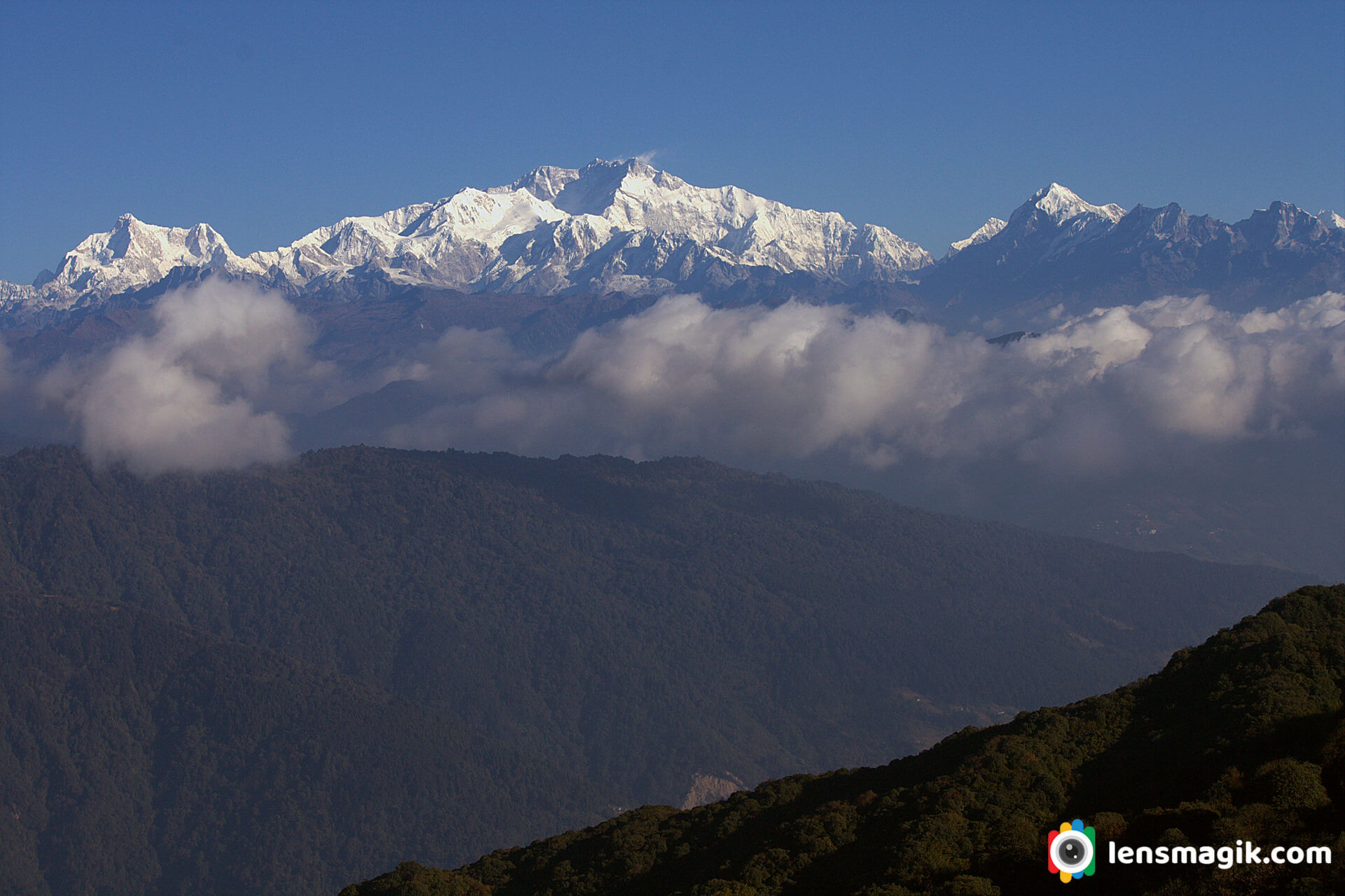
For climbing Mt. Kanchenjunga you can go from Nepal only because Indian Government has been closed Northeastern Sikkim route of Kanchenjunga since 2000. To See Mt. Kanchenjunga from India Sandakphu is the best place. You can go to Sandakphu via Trek or via Range Rover car hire at manebhanjan village. Nearest airport is Bagdogra or you can go to Kolkata and go for overnight train from Kolkata.
Gear used : Canon 1000 D body, Canon 18-55 mm lens, Canon 55-250 mm lens.